Top 12 Must Have Online Tools for Researchers at All Stages
Research is undoubtedly one of the most painstaking and thorough processes. Irrespective of your discipline, stage of work and career, research can be an arduous and time-consuming task. Right from browsing the library shelves and internet for literature, performing experiments, writing papers, to publishing papers, researchers are always running with the clock’s hands. No matter what your field of research, there’s an online tool out there to help you organize your notes, cite your sources, find important articles, connect with colleagues, and much more. However, with so many options available at a mouse click, it gets difficult to find a tool that delivers best results. As the search for reliable resources can be frustrating at times; we will discuss the features of 12 most recommended online tools for researchers at all stages in academia.
Table of Contents

What is the Need of Online Tools for Researchers?
Regardless of his/her research area, every researcher’s focus today is on managing various tasks, delivering productive results, utilizing time efficiently, and documenting research that is publication worthy. All these require a well-planned and organized system, which is achieved by monitoring the progress and collaboration of your projects, finding pertinent literature, writing your project proposals, reports, and articles, avoiding language errors, citing original sources, building networks, searching for journals for publication, etc. How do you plan on handling all this by yourself?—The first resort is surfing the internet to find a solution. Several online tools for researchers make this an easier task. However, with uncountable information available online, it can become a time-consuming nightmare to evaluate what works and what doesn’t.
Most Important Online Tools for Researchers
The 6 types of online tools for researchers that are essential at various stages of research are as follows:
A. Project Management Tools
Project management is a set of proven techniques for proposing, planning, implementing, managing, and evaluating projects, combined with the art of managing people. These tools are used to manage project progress, resource application, and collaboration processes. It involves creating a hierarchical task list, following up for task completion, setting deadlines, formulating plan of action, and assigning resources.
Two of the most used project management tools in academia are Trello and GanttPro.
Trello allows users to organize their ideas through the use of panels, cards, and lists. It’s an easy to access system with a simple drag and drop cards function. It allows users to list and schedule activities, establish completion times, and view progress percentages. The user can create multiple boards for different subjects. Additionally, Trello saves the boards in cloud as well as in user’s profile. It offers free and paid versions, depending on the user’s requirements.
2. GanttPRO
GanttPRO is an online Gantt chart program for project management that allows intuitive creation of schedules. It is a paid software which also offers free trial version. GanttPRO allows sub-division of major tasks into minor tasks and offers cost calculation per task. While using a Gantt chart, you can immediately see all the information you need on your chart, including your team’s tasks, their sequences, deadlines, and priorities. GanttPRO is hosted in the cloud, which makes is easily accessible for every team member using any web browser.
B. Grammar Checker Tools
Grammar checker tools are used to detect grammatical, spelling, punctuation, sentence formation errors, etc. Its purpose is to enhance the language of a paper in question. Given the need of the hour, the internet pool is overflowing with several grammar checker tools that suggest fixes and explain the nature of the suggested fixes. For knowledge to be disseminated unambiguously, it is essential that the literature is written correctly. Especially for non-native researchers, the use of grammar checker tools is a must.
Two most recommended grammar checker tools for researchers are Trinka AI and Grammarly.
1. Trinka AI
Trinka AI is the world’s first grammar and language improvement tool designed specifically for academic and technical writing. It is unique as it not only checks grammar, punctuation, and spelling, but also provides explanations for correcting errors. It offers free version that includes access to all its features. The paid version offers uninterrupted usage and higher monthly limits along with access to the add-in for MS Word. It allows you to choose between the US and the UK style to make it easily accessible for researchers all over the world.
Its custom-built features such as maintaining academic tone, providing unbiased language, concept clarity, sentence structure, and alternative word choice makes it better than most grammar checker tools. It also offers subject-specific corrections, select style guides preferences, and 20+ publication readiness checks . It provides detailed explanations as to why a correction is suggested. Furthermore, it helps researchers in reducing word count by suggesting alternatives without changing the context.
2. Grammarly
Grammarly is a popular browser application or extension developed to check grammar, punctuation , context, sentence structure, and readability. It is a real-time plagiarism detector on various platforms, including MS Word, WordPress, Facebook, etc. It is available in free and paid version. The free version offers basic spelling and grammar checks , as well as some suggestions. While the paid version offers the basic revisions and vocabulary improvement suggestions; additionally, it provides citation suggestions and can detect plagiarism.
C. Reference Management Tools
Reference management tools help in managing the literature used for research development, thus offering an alternative to a time-consuming task for researchers. These tools allow you to organize articles and their citations, share them with other researchers, detect duplicate entries, format the list of references, search and replace any reference, etc. Furthermore, it allows researchers to correctly link and cite the works referenced in their articles.
Among many reference management tools available online, Mendeley and EndNote are two of the most widely used.
1. Mendeley
Mendeley is a freely available reference management tool to streamline your referral management workflow. It allows you to store, organize, and search all your references in just one library and generate citations. It includes citation options using various writing style guides needed as per your target journal. The program is compatible with Word (including Mac), LibreOffice, and OpenOffice. It can also be used with LaTex exporting BibTex. Furthermore, its version is also available for Android. Its feature of highlighting and annotating PDFs helps in better organization of multiple documents in one place.
EndNote is a paid reference management application, which allows researchers to insert citations into the text while simultaneously creating a bibliography with the “Cite While You Write” feature in MS Word. Additionally, it aligns and formats the article as per the requirements of the journal of interest using “Manuscript Matcher”. Furthermore, it organizes references automatically and enables sharing of work amongst remote computers.
D. Plagiarism Checkers
The academic world is riddled with plagiarism and perhaps due to the dizzying pace of publications, researchers can unknowingly fall prey to the derisive act of plagiarism. To avoid getting your manuscript rejected and consequently affecting your image as a researcher, it is wise to run your manuscript through a plagiarism checker tool. These tools can not only help you in checking plagiarized content , but also help in identifying potential collaborations with researchers that belong to the same field.
To detect plagiarism, researchers can opt for plagiarism checker tools such as Enago’s Plagiarism Checker and Duplichecker.
1. Enago’s Plagiarism Checker
Enago’s plagiarism checker is a unique tool for quick, comprehensive, and dependable plagiarism checking, especially for research. It helps you assess the originality of a manuscript using advanced plagiarism software and provides a report highlighting areas in your text if the program recognizes existing material in it. It is easy to access with one click upload button. Furthermore, it includes an AI-based grammar check feature that checks your document for grammar errors typical to academic writing, and provides a tracked changes file that you can download and review.
In addition, its power editing mode enhances your document by correcting sentence structure, word choice, and subject-specific phrasing. Its extensive scholarly database of over 91+ billion web pages and 82+ million published articles ensures thorough plagiarism check as compared to other checkers. The tool is cost-effective with most reliable results. More importantly, a detailed interactive color-coded and plagiarism percentage report can be reviewed online and also be downloaded in PDF format if needed.
2. Duplichecker
Duplichecker offers a free version for texts of up to 1000 words and is available in paid versions for word count above 1000. It provides plagiarism percentage and highlights similar content to the list of sources. However, it does not provide detailed report. It has a limited database access as it compares your document only to Internet sources and online books. Lastly, the plagiarism report is easy to read and is downloadable in PDF and MS Word format.
E. Journal Finder
One of the common rejection factors of research journals is that the subject of the research is not within those contemplated by the journal. The journal search engines help researchers to choose the best suitable journal for publishing their research. These tools are very useful to avoid getting involved in a manuscript submission process that would be wrong from the beginning.
The two effective and reliable journal finder tools are Enago Open Access Journal Finder (Enago OAJF) and Elsevier Journal Finder (Elsevier JF).
1. Enago’s Open Access Journal Finder
Enago’s OAJF is a freely available tool that protects you from falling prey to predatory publishers. It solves issues such as journal legitimacy and reports article processing fees through a journal index validated and issued by the Directory of Open Access Journals (DOAJ). It allows you to find pre-screened and quality journals in the public domain. Enago’s exclusive search algorithm allows you to compile a concise list of journals related to your research work.
2. Elsevier Journal Finder
Elsevier Journal Finder allows you to enter the title and abstract of your article to easily find journals that are most likely suitable for your publication. It uses intelligent search technology and vocabularies specific to the corresponding research field to match your article to scientific journals.
F. Social Networking for Academics
Research advances when shared; hence, the connection and exchange of ideas between researchers is essential. To socialize, work networks are a great help that encourages collaborative effort at a distance. This makes it possible to publicize the profile of a researcher to the scientific community, as well as promote their research and establish links with other work teams across the globe.
Two most commonly used academic networks include Academia.edu and ResearchGate.
1. Academia.edu
Academia.edu is a freely accessible platform for sharing research documents and connecting with academics across the globe. As of now, over 22 million articles and about 31 million academics, professionals, researchers are active on the platform. Academia.edu’s algorithms generate about 20 million article recommendations per day. It is also possible to exchange knowledge in effective formats of video, short content, dataset, etc. You can receive notifications when you are cited and referenced, acknowledged as a co-author, and expressed gratitude for your co-operation.
2. ResearchGate
ResearchGate is also a freely available networking platform to connect scientists and make research available to everyone. Currently, there are over 20 million researchers from more than 190 countries connecting through ResearchGate to collaborate and share their work. It also allows interactive conversations with researchers on the platform.
Do you use any of the above mentioned online tools? Do you think that these online tools for researchers can significantly ease your effort? Which are some other tools you know of that you find useful for academic work? Let us know in the comments section below! You can also visit our Q&A forum for frequently asked questions related to different aspects of research writing and publishing answered by our team that comprises subject-matter experts, eminent researchers, and publication experts.
Rate this article Cancel Reply
Your email address will not be published.

Enago Academy's Most Popular Articles

- Promoting Research
- Thought Leadership
How Enago Academy Contributes to Sustainable Development Goals (SDGs) Through Empowering Researchers
The United Nations Sustainable Development Goals (SDGs) are a universal call to action to end…

- AI in Academia
- Trending Now
Using AI for Journal Selection — Simplifying your academic publishing journey in the smart way
Strategic journal selection plays a pivotal role in maximizing the impact of one’s scholarly work.…

- Reporting Research
AI Assistance in Academia for Searching Credible Scholarly Sources
The journey of academia is a grand quest for knowledge, more specifically an adventure to…

- Industry News
Attention Scopus Users! Study Reveals 67 Hijacked Journals Prompting Concerns
A recent study focused on indexjacking, warns that Scopus, a widely used scientific paper database…

- Publishing Research
Citing It Right – A guide to choose the best citation generator tool
Amy Anderson, a brilliant young researcher, had a burning passion for her work in quantum…
9 Great Tools to Maintain Lab Notebook for Researchers
Digital Classrooms: The Future of Education
Overcoming the Paywall Barrier Through Dissemin’s Green Open Access
Free E-Tools for Smart Researchers: Mendeley, ResearchGate, Google Scholar, and…

Sign-up to read more
Subscribe for free to get unrestricted access to all our resources on research writing and academic publishing including:
- 2000+ blog articles
- 50+ Webinars
- 10+ Expert podcasts
- 50+ Infographics
- 10+ Checklists
- Research Guides
We hate spam too. We promise to protect your privacy and never spam you.
Top 21 must-have digital tools for researchers
Last updated
12 May 2023
Reviewed by
Jean Kaluza
Research drives many decisions across various industries, including:
Uncovering customer motivations and behaviors to design better products
Assessing whether a market exists for your product or service
Running clinical studies to develop a medical breakthrough
Conducting effective and shareable research can be a painstaking process. Manual processes are sluggish and archaic, and they can also be inaccurate. That’s where advanced online tools can help.
The right tools can enable businesses to lean into research for better forecasting, planning, and more reliable decisions.
- Why do researchers need research tools?
Research is challenging and time-consuming. Analyzing data , running focus groups , reading research papers , and looking for useful insights take plenty of heavy lifting.
These days, researchers can’t just rely on manual processes. Instead, they’re using advanced tools that:
Speed up the research process
Enable new ways of reaching customers
Improve organization and accuracy
Allow better monitoring throughout the process
Enhance collaboration across key stakeholders
- The most important digital tools for researchers
Some tools can help at every stage, making researching simpler and faster.
They ensure accurate and efficient information collection, management, referencing, and analysis.
Some of the most important digital tools for researchers include:
Research management tools
Research management can be a complex and challenging process. Some tools address the various challenges that arise when referencing and managing papers.
.css-10ptwjf{-webkit-align-items:center;-webkit-box-align:center;-ms-flex-align:center;align-items:center;background:transparent;border:0;color:inherit;cursor:pointer;-webkit-flex-shrink:0;-ms-flex-negative:0;flex-shrink:0;-webkit-text-decoration:underline;text-decoration:underline;}.css-10ptwjf:disabled{opacity:0.6;pointer-events:none;} Zotero
Coined as a personal research assistant, Zotero is a tool that brings efficiency to the research process. Zotero helps researchers collect, organize, annotate, and share research easily.
Zotero integrates with internet browsers, so researchers can easily save an article, publication, or research study on the platform for later.
The tool also has an advanced organizing system to allow users to label, tag, and categorize information for faster insights and a seamless analysis process.
Messy paper stacks––digital or physical––are a thing of the past with Paperpile. This reference management tool integrates with Google Docs, saving users time with citations and paper management.
Referencing, researching, and gaining insights is much cleaner and more productive, as all papers are in the same place. Plus, it’s easier to find a paper when you need it.
Acting as a single source of truth (SSOT), Dovetail houses research from the entire organization in a simple-to-use place. Researchers can use the all-in-one platform to collate and store data from interviews , forms, surveys , focus groups, and more.
Dovetail helps users quickly categorize and analyze data to uncover truly actionable insights . This helps organizations bring customer insights into every decision for better forecasting, planning, and decision-making.
Dovetail integrates with other helpful tools like Slack, Atlassian, Notion, and Zapier for a truly efficient workflow.
Putting together papers and referencing sources can be a huge time consumer. EndNote claims that researchers waste 200,000 hours per year formatting citations.
To address the issue, the tool formats citations automatically––simultaneously creating a bibliography while the user writes.
EndNote is also a cloud-based system that allows remote working, multiple-user interaction and collaboration, and seamless working on different devices.
Information survey tools
Surveys are a common way to gain data from customers. These tools can make the process simpler and more cost-effective.
With ready-made survey templates––to collect NPS data, customer effort scores , five-star surveys, and more––getting going with Delighted is straightforward.
Delighted helps teams collect and analyze survey feedback without needing any technical knowledge. The templates are customizable, so you can align the content with your brand. That way, the survey feels like it’s coming from your company, not a third party.
SurveyMonkey
With millions of customers worldwide, SurveyMonkey is another leader in online surveys. SurveyMonkey offers hundreds of templates that researchers can use to set up and deploy surveys quickly.
Whether your survey is about team performance, hotel feedback, post-event feedback, or an employee exit, SurveyMonkey has a ready-to-use template.
Typeform offers free templates you can quickly embed, which comes with a point of difference: It designs forms and surveys with people in mind, focusing on customer enjoyment.
Typeform employs the ‘one question at a time’ method to keep engagement rates and completions high. It focuses on surveys that feel more like conversations than a list of questions.
Web data analysis tools
Collecting data can take time––especially technical information. Some tools make that process simpler.
For those conducting clinical research, data collection can be incredibly time-consuming. Teamscope provides an online platform to collect and manage data simply and easily.
Researchers and medical professionals often collect clinical data through paper forms or digital means. Those are too easy to lose, tricky to manage, and challenging to collaborate on.
With Teamscope, you can easily collect, store, and electronically analyze data like patient-reported outcomes and surveys.
Heap is a digital insights platform providing context on the entire customer journey . This helps businesses improve customer feedback , conversion rates, and loyalty.
Through Heap, you can seamlessly view and analyze the customer journey across all platforms and touchpoints, whether through the app or website.
Another analytics tool, Smartlook, combines quantitative and qualitative analytics into one platform. This helps organizations understand user behavior and make crucial improvements.
Smartlook is useful for analyzing web pages, purchasing flows, and optimizing conversion rates.
Project management tools
Managing multiple research projects across many teams can be complex and challenging. Project management tools can ease the burden on researchers.
Visual productivity tool Trello helps research teams manage their projects more efficiently. Trello makes product tracking easier with:
A range of workflow options
Unique project board layouts
Advanced descriptions
Integrations
Trello also works as an SSOT to stay on top of projects and collaborate effectively as a team.
To connect research, workflows, and teams, Airtable provides a clean interactive interface.
With Airtable, it’s simple to place research projects in a list view, workstream, or road map to synthesize information and quickly collaborate. The Sync feature makes it easy to link all your research data to one place for faster action.
For product teams, Asana gathers development, copywriting, design, research teams, and product managers in one space.
As a task management platform, Asana offers all the expected features and more, including time-tracking and Jira integration. The platform offers reporting alongside data collection methods , so it’s a favorite for product teams in the tech space.
Grammar checker tools
Grammar tools ensure your research projects are professional and proofed.
No one’s perfect, especially when it comes to spelling, punctuation, and grammar. That’s where Grammarly can help.
Grammarly’s AI-powered platform reviews your content and corrects any mistakes. Through helpful integrations with other platforms––such as Gmail, Google Docs, Twitter, and LinkedIn––it’s simple to spellcheck as you go.
Another helpful grammar tool is Trinka AI. Trinka is specifically for technical and academic styles of writing. It doesn’t just correct mistakes in spelling, punctuation, and grammar; it also offers explanations and additional information when errors show.
Researchers can also use Trinka to enhance their writing and:
Align it with technical and academic styles
Improve areas like syntax and word choice
Discover relevant suggestions based on the content topic
Plagiarism checker tools
Avoiding plagiarism is crucial for the integrity of research. Using checker tools can ensure your work is original.
Plagiarism checker Quetext uses DeepSearch™ technology to quickly sort through online content to search for signs of plagiarism.
With color coding, annotations, and an overall score, it’s easy to identify conflict areas and fix them accordingly.
Duplichecker
Another helpful plagiarism tool is Duplichecker, which scans pieces of content for issues. The service is free for content up to 1000 words, with paid options available after that.
If plagiarism occurs, a percentage identifies how much is duplicate content. However, the interface is relatively basic, offering little additional information.
Journal finder tools
Finding the right journals for your project can be challenging––especially with the plethora of inaccurate or predatory content online. Journal finder tools can solve this issue.
Enago Journal Finder
The Enago Open Access Journal Finder sorts through online journals to verify their legitimacy. Through Engao, you can discover pre-vetted, high-quality journals through a validated journal index.
Enago’s search tool also helps users find relevant journals for their subject matter, speeding up the research process.
JournalFinder
JournalFinder is another journal tool that’s popular with academics and researchers. It makes the process of discovering relevant journals fast by leaning into a machine-learning algorithm.
This is useful for discovering key information and finding the right journals to publish and share your work in.
Social networking for researchers
Collaboration between researchers can improve the accuracy and sharing of information. Promoting research findings can also be essential for public health, safety, and more.
While typical social networks exist, some are specifically designed for academics.
ResearchGate
Networking platform ResearchGate encourages researchers to connect, collaborate, and share within the scientific community. With 20 million researchers on the platform, it's a popular choice.
ResearchGate is founded on an intention to advance research. The platform provides topic pages for easy connection within a field of expertise and access to millions of publications to help users stay up to date.
Academia is another commonly used platform that connects 220 million academics and researchers within their specialties.
The platform aims to accelerate research with discovery tools and grow a researcher’s audience to promote their ideas.
On Academia, users can access 47 million PDFs for free. They cover topics from mechanical engineering to applied economics and child psychology.
- Expedited research with the power of tools
For researchers, finding data and information can be time-consuming and complex to manage. That’s where the power of tools comes in.
Manual processes are slow, outdated, and have a larger potential for inaccuracies.
Leaning into tools can help researchers speed up their processes, conduct efficient research, boost their accuracy, and share their work effectively.
With tools available for project and data management, web data collection, and journal finding, researchers have plenty of assistance at their disposal.
When it comes to connecting with customers, advanced tools boost customer connection while continually bringing their needs and wants into products and services.
What are primary research tools?
Primary research is data and information that you collect firsthand through surveys, customer interviews, or focus groups.
Secondary research is data and information from other sources, such as journals, research bodies, or online content.
Primary researcher tools use methods like surveys and customer interviews. You can use these tools to collect, store, or manage information effectively and uncover more accurate insights.
What is the difference between tools and methods in research?
Research methods relate to how researchers gather information and data.
For example, surveys, focus groups, customer interviews, and A/B testing are research methods that gather information.
On the other hand, tools assist areas of research. Researchers may use tools to more efficiently gather data, store data securely, or uncover insights.
Tools can improve research methods, ensuring efficiency and accuracy while reducing complexity.
Get started today
Go from raw data to valuable insights with a flexible research platform
Editor’s picks
Last updated: 21 December 2023
Last updated: 16 December 2023
Last updated: 6 October 2023
Last updated: 25 November 2023
Last updated: 12 May 2023
Last updated: 15 February 2024
Last updated: 11 March 2024
Last updated: 12 December 2023
Last updated: 18 May 2023
Last updated: 6 March 2024
Last updated: 10 April 2023
Last updated: 20 December 2023
Latest articles
Related topics, log in or sign up.
Get started for free
9 Must-Have Online Tools for Researchers
If you're a researcher online, chances are tools that make your job easier are few and far between. Here are nine must-haves.
Research is already time-intensive work. And little tasks like formatting or citing eat up more of your time. Luckily, you can automate these tedious tasks to a large extent and focus more on actual research.
Here, we’ve rounded up all the online tools researchers should have in their arsenal—from Google Scholar to Citationsy.
1. Google Scholar
Google Scholar is perhaps the most popular tool for finding scholarly literature on a plethora of topics. The search engine makes it simple for anyone to explore academic papers, theses, case law, books, etc.
On the search results page, you can view the author name, journal title, and total citations, which can help you gauge the credibility of the paper. Similarly, you can view related articles to explore the topic in detail.
Besides helping you find relevant information, Google Scholar lets you organize articles in your library. Create labels, sort by dates, and maintain a reading list to keep up with the latest research in your field.
You can also create your Google Scholar profile to show your work on Google Scholar and track citations to your work. Although it is an excellent tool, there are alternatives to Google Scholar in case it doesn’t work for you.
Zotero describes itself as “your personal research assistant”, and we tend to agree. The tool cuts down on several monotonous tasks, like collecting research sources and adding citations.
If you have saved hundreds of information sources, finding the information you need can be difficult. Zotero solves this problem by letting you organize files into categories and assign keywords. With each saved item, you can add notes, attachments, and related material.
Zotero also simplifies the referencing by creating citations and bibliographies. Although the Zotero desktop client offers more features, the browser extension can save sources in the online library, letting you organize, tag, and cite them.
Best of all, it allows collaboration and sharing of documents. Zotero is a free, open-source project. However, you'll need to pay for storage if the 300 MB free plan doesn’t work for you.
Download: Zotero for Google Chrome | Microsoft Edge (Free, Paid)
3. ResearchGate
Although most researchers are already familiar with ResearchGate, the platform deserves a mention here. It’s a networking platform for researchers, having over 20 million accounts.
You can follow other researchers, share your work, and ask questions from domain experts. Similarly, you can showcase your research and projects to a wider audience and receive feedback. Based on your profile, ResearchGate can also help you connect with potential job opportunities.
With over 135 million pages of scholarly literature, ResearchGate helps you explore publications on various topics and follow specific projects/questions. Creating an account here is free. But, you’ll need to have an institutional email address or go through additional checks to ensure you’re a researcher.
4. Mendeley
Mendeley is much similar to Zotero, as it allows you to save papers, organize your library, and add citations in various styles.
What sets it apart though is that it has a user-friendly interface and a search engine for finding research papers. You can narrow the results down by year, journal title, author, and document type.
Directly from the search results page, you can add papers to your collection and view Open Access papers. Likewise, Mendeley Data lets you find research datasets.
Mendeley has a career section with thousands of listed vacancies—a great resource for finding technical jobs. It is available, both as a desktop application and a web-based tool (with browser extension). The free plan allows you to store 2 GB of data, after which you'll have to pay $4.99 per month or more, depending on your needs.
Download: Mendeley for Google Chrome | Firefox (Free, Paid)
5. SciSpace
If you spend hours on getting the formatting correct, SciSpace is for you. This awesome web-based editor makes it simple to write and format your research papers, thanks to the huge collection of templates.
From a single editor screen, you can write, format, add citations, check plagiarism, and insert tables. You can collaborate with other researchers directly using SciSpace.
Besides publishing tools, SciSpace can help you discover scholarly literature and has an index of over 270 million papers. So you can search for papers by topic, authors, journals, and institutions.
SciSpace has a free plan, albeit with quite limited features. So if you’re serious, you can subscribe to SciSpace for $20 per month.
6. Turnitin
Before submitting your research work, it’s necessary to run a plagiarism report and ensure the content is original.
Unless you've specific requirements about the software, Turnitin works great. It can detect plagiarism in academic work, thanks to its gigantic library of published papers.
The iThenticate service is specially designed for publishers. Using this tool, you can make adjustments to similarity criteria and view attached sources. For researchers who work in a group, it allows sharing folders.
Turnitin is a paid tool and only has an institutional license. So, you'll have to request quotes.
8. Hypothesis
Hypothesis is a Chrome extension that allows you to highlight documents and add notes. However, the main feature of this tool is the ability to collaborate seamlessly with your coworkers. You can add people to a group, share the document with them, and annotate documents.
Hypothesis is free to use. Although it looks like a simple extension, it’s one of the best tools to annotate web pages for research .
9. Citationsy
If you hate adding citations, try using Citationsy. The intuitive reference manager can add citations and references in various styles automatically. You've to only select the journal and article in the Citations section.
Whether you want to cite a journal article, book, website, or podcast, Citationsy makes it easy. You can share the bibliographies with your fellow researchers.
Citationsy costs $9.99 per month and $4.99 per month for students. It has browser extensions as well as mobile applications.
Simplify Your Research Workflow
We get it. Research ain’t an easy task. But perhaps what is more frustrating are all the little tasks that add little value. But thanks to these tools, you boost your productivity, collaborate seamlessly with your co-workers, and focus on the actual research.
In case you’ve just stepped into the field of research, there are tools to help you polish your skills as well.
A free, AI-powered research tool for scientific literature
- Peter Blanken
- Broca's Area
New & Improved API for Developers
Introducing semantic reader in beta.
Stay Connected With Semantic Scholar Sign Up What Is Semantic Scholar? Semantic Scholar is a free, AI-powered research tool for scientific literature, based at the Allen Institute for AI.
View the latest institution tables
View the latest country/territory tables
Five online tools that aim to save researchers time and trouble
From investigating a lab’s publication history to scanning manuscripts for statistical errors, these apps can help streamline some of the most time-consuming tasks.
Dalmeet Singh Chawla

Credit: erhui1979/Getty Images
23 June 2021

erhui1979/Getty Images
An expanding kit of digital tools and apps helps researchers automate certain processes and make others less burdensome.
Nature Index has selected five recently launched or revised tools that aim to make academic life easier, whether you’re thinking of relocating to a new lab, organizing your references or readying a manuscript for submission.
1) Choosing the right lab
Job-hunting can be tough, particularly if interstate or overseas relocation is on the cards. Before you commit to a new position, it’s useful to have some insight into your prospective supervisor, as well as the kind of lab culture you’d be stepping into .
A new tool called Super Researcher aims to make it easier for doctoral and postdoctoral candidates to compare lab leaders based on their productivity and impact.
Described in a bioRxiv paper published in February 2021, the app allows academics to run searches on specific researchers to see their numbers of annual publications, citation counts and details on their most frequent collaborators. The tool pulls publication data from the Scopus database.
The team behind the app, led by co-creator Sheah Lin Lee, a cancer researcher at the University of Southampton in the UK, is working to move it beyond the pilot stage. One challenge, she says, is that it’s hosted on a free (and sometimes unreliable) server, which means it’s prone to the occasional crash – something the team is hoping address in the future.
Lee says she hopes her tool will give researchers a ‘rough and ready’ indication of a lab’s publication culture, which could factor into their decision to take up a new position there. But she urges users to take other factors into consideration, too.
“We don’t think that people should judge whether you want to go to a lab solely based on publications,” says Lee.
2) A spell-checker for statistics
What if there were a way to automatically scan a manuscript for statistical errors while writing your manuscript ?
Statcheck, launched in 2015, aims to do so by recalculating p-values — a controversial but commonly used technique to measure statistical significance.
It initially received mixed reactions from academics, but has since gained more acceptance after a preprint study found that it was correct in more than 95% of its recalculations of p-values.
Statcheck has become a popular way to check manuscripts before submission to a journal, says co-creator Michèle Nuijten, who studies analytical methods at Tilburg University in the Netherlands.
It’s also being used by journals such as Psychological Science and the Journal of Experimental Social Psychology to weed out statistical mistakes during the peer-review process.
In 2020, Nuijten and her team expanded the functionality of statcheck by creating a free plugin to be used within Microsoft Word that works like a statistical spell-checker.
Nuijten cautions against using the tool as a means to imply fraud or wrongdoing, emphasizing how easy it can be, even for experienced researchers, to make mistakes in their calculations.
“We all make mistakes. It doesn’t mean we want to,” she says.
3) Spot the difference between preprint versions
Comparing different iterations of a manuscript on preprint servers such as arXiv can be a time-consuming process, says Sharvil Nanavati, a software engineer based in Mountain View, California.
After trying to find a tool to address this, Nanavati and Sergei Taguer, a software engineer in California, decided to build one themselves, which they launched in May 2021.
ArXiv Diff , which was built on top of an existing open-source tool, allows users to view manuscript updates by replacing the word “arxiv” in the URL of a paper to “arxivdiff” then clicking “Show Diff”.
So far, feedback on the new app has been mixed, Nanavati admits. Some academics have praised its usefulness, while others have pointed out that it doesn’t work on all manuscripts.
Nanavati says he’s tweaking the tool’s code to cater for cases where users flag errors. He says the tool, which is a labour of love, will continue to be available for free, but is limited to manuscripts posted to arXiv for now.
4) Find references to papers flagged on PubPeer
It’s becoming increasingly difficult to keep up with the commentary around new papers. Some of these discussions take place on Pubpeer, an online platform where researchers debate the veracity and robustness of specific papers.
While it’s possible to manually check a paper on PubPeer to see if people are talking about it, doing that for an entire reference list can be laborious.
In 2019, PubPeer launched a free plugin on Zotero, an open-source reference-management system that is popular among academics because it hosts a number of plugins with functions such as helping users find free versions of paywalled papers and flagging papers that have been retracted.
The new PubPeer plugin flags any references in a researcher’s paper shortlist — where they save studies that are potentially of interest and may be worthy of citing — that are being discussed on PubPeer, listing the number of comments.
PubPeer also has a browser extension that alerts researchers if they are citing a paper that is being discussed on the platform.
Boris Barbour, co-organizer of PubPeer and a neuroscientist at the Ecole Normale Supérieure’s Institute of Biology in France, says that while there are no immediate plans to expand the new plugin to reference management systems other than Zotero, “there are fairly significant incremental improvements and polishing that could be done”.
5) Scanning for predatory references
In May 2021, Edifix, a bibliographic referencing tool run by Boston-based publishing software firm Inera, expanded its capability to automatically flag references to papers published in predatory journals.
Inera teamed up with Cabell’s International , a scholarly-services firm headquartered in Beaumont, Texas, to access its list of predatory journals, which is usually pay-to-view .
When users check their references using Edifix, in addition to automatically formatting them and fixing any errors, the tool will flag any publications that Cabell’s has identified as predatory. Users can click on those references for an explanation of why the particular journal has been flagged as questionable .
However this new functionality will be free to use for Edifix subscribers until the end of 2021. After that, users will need to pay for a subscription to Cabell’s, says Elizabeth Blake, director of business development at Inera.
The decision to delete or retain references to flagged publications lies with the researcher, says Blake, as it’s possible for subpar journals to publish solid research, and there may be legitimate reasons to cite such work.
Edifix also highlights any references that have been retracted – which a growing number of other bots also do .
Our teams aspire to make discoveries that impact everyone, and core to our approach is sharing our research and tools to fuel progress in the field.

Tools & services
Open source.

Google periodically releases data of interest to researchers in a wide range of computer science disciplines.
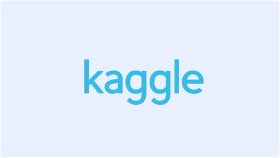
Explore and analyze Google data.

Collaborate on Google models, datasets, and applications.
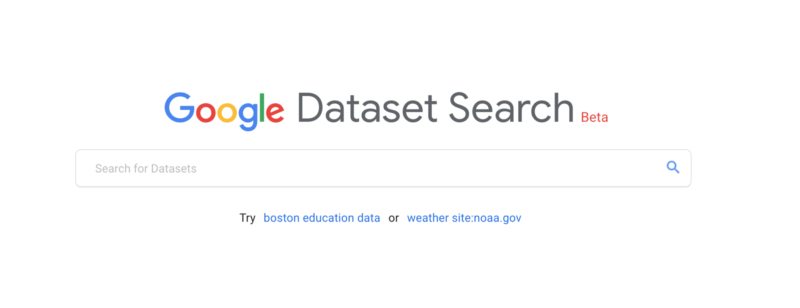
Use simple keyword searches to discover datasets hosted in thousands of repositories across the Web.
Explore the tools and services that help our Google Research teams push what’s possible.
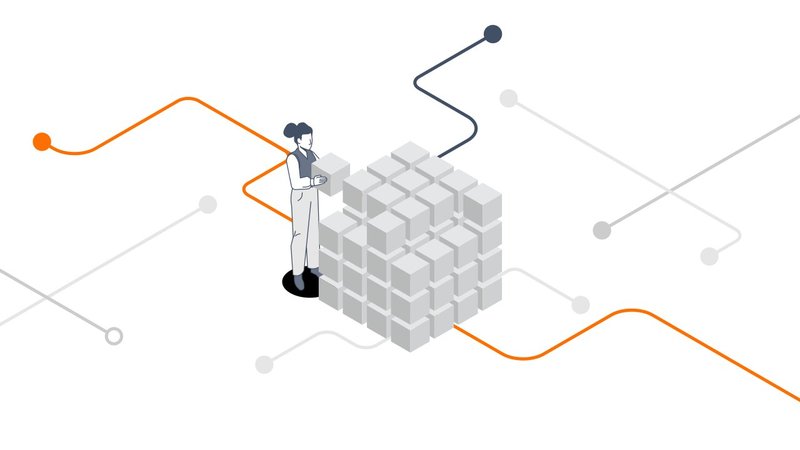
Use TensorFlow tools to process and load your data
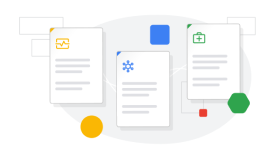
Use pre-trained models or create custom ones.

Apply for access to a cluster of more than 1,000 Cloud TPUs to accelerate the next wave of breakthroughs.

Access modern machine learning services to generate your own tailored models.

Train and run machine learning models faster than ever before.
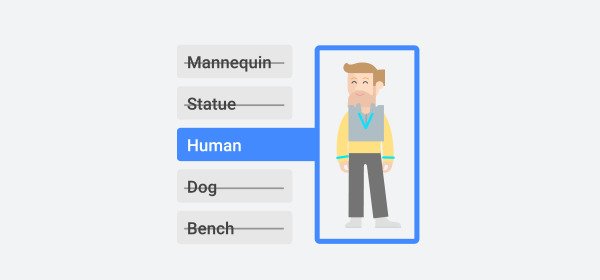
Train high quality custom machine learning models with minimum effort and machine learning expertise.

Colaboratory is a Google research project created to help disseminate machine learning education and research. It's a Jupyter notebook environment that requires no setup to use and runs entirely in the cloud.
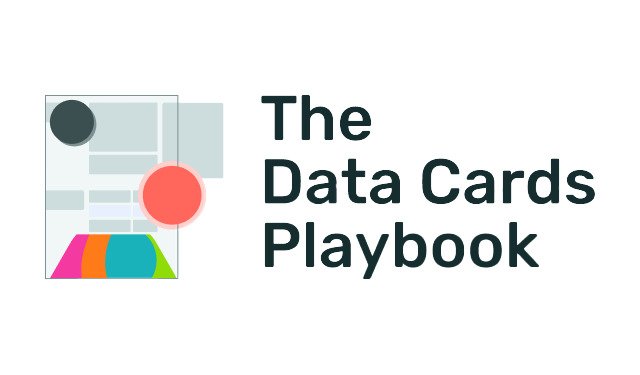
A toolkit of activities, frameworks, and guidance for transparency in research dataset documentation. Customizable, participatory methods to create Data Cards templates.
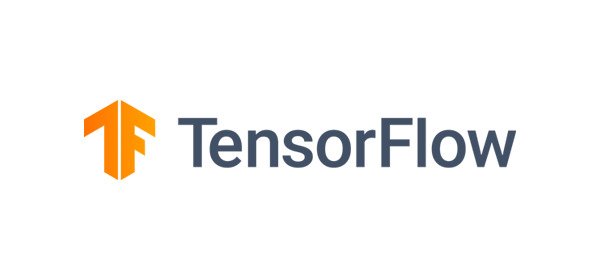
Our open-source machine learning platform for everyone.
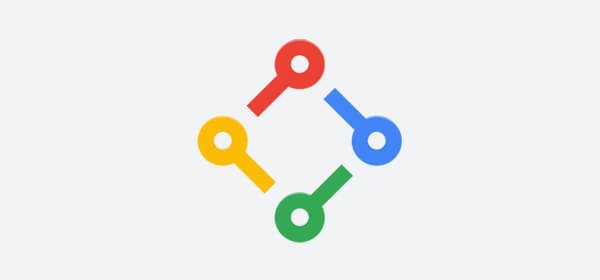
Google believes that open source is good for everyone.
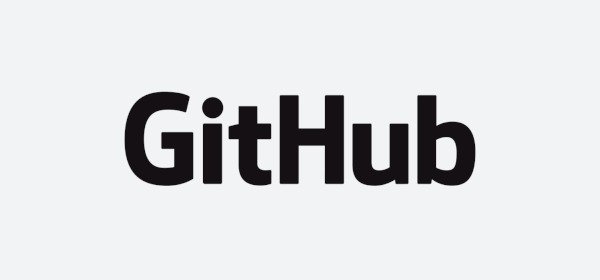
Explore more open source releases from Google Research.
Build your machine learning skills
Whether you’re an ML expert or you’re just getting started, you’ll find training and information in our resource center.

10 free online tools for scientific research

X min read
As the landscape of scientific research evolves, the shift towards online tools has introduced a sea of resources that can profoundly impact the productivity and effectiveness of scientific endeavors.
The key is to identify tools that enhance your research without complicating your process.
While diving into this ocean of resources, there are several important things to look for:
- Ease of Use: Opt for tools with intuitive interfaces.
- Artificial Intelligence: Look for AI integration to automate and enhance research tasks.
- Data Security: Ensure compliance with the latest data security and privacy standards.
- Software Integration: Favor tools that offer seamless integration with existing systems.
- Accuracy: Verify that the tools provide precise and correct information.
- Free Access: Confirm that there’s a genuinely free offer, not just a trial period that requires future payment.
With these criteria in mind, let’s explore ten free online tools that could become indispensable for your scientific research.
1. Semantic Scholar
Powered by AI, Semantic Scholar is a free, nonprofit research tool that stands out for its smart search capabilities.
It sifts through millions of publications to bring you the most relevant and impactful studies, cutting down the time you’d typically spend on literature review.
With a focus on AI, Semantic Scholar offers personalized recommendations, citation summaries, and key phrase extractions that make keeping up with your field’s latest a breeze.
Visit Semantic Scholar
2. Connected Papers
Connected Papers offers a unique visual take on research, building an interactive graph that shows the connections between scientific papers.
It’s like having a bird’s-eye view of the research landscape, allowing you to trace the development of ideas and how they relate to one another. This can uncover pivotal papers that might otherwise slip through the cracks.
Visit Connected Papers
3. Scholarcy
Scholarcy is your AI-powered reading companion, making sense of complex academic papers by breaking them down into digestible summaries.
Imagine having the ability to absorb the core themes and conclusions of a dense, 30-page document in a matter of minutes. Scholarcy makes this a reality, highlighting the methodology, results, and discussions that are central to understanding the paper’s contribution to the field.
This tool is perfect for researchers who are pressed for time but need to stay ahead of the curve. With Scholarcy, you can easily grasp the essence of lengthy publications and build a knowledge base faster than ever.
Visit Scholarcy
4. Consensus
Imagine if you could quickly gauge the consensus of the scientific community on a particular topic. That’s exactly what Consensus aims to do.
Powered by the sophisticated GPT-4 model, Consensus operates as a dynamic search engine that delivers not just search results but a synthesized understanding of where the scientific agreement lies on complex subjects.
With its AI-driven analysis, it reviews multiple studies and delivers a consensus view, helping to inform your research stance.
It’s like a digital synthesis of expert opinions at your fingertips.
Visit Consensus
5. Research Rabbit
Research Rabbit is more than just a tool; it’s your research exploration partner. It helps you discover and organize literature in a personalized research landscape.
The magic of Research Rabbit lies in its ability to learn and adapt to your research behavior, suggesting not just content but also potential pathways your research could take.
It’s much like having a personal librarian who not only knows your research interests but also suggests connections you might not have considered, leading to innovative ideas and directions.
Visit Research Rabbit
6. Audemic.io
Audemic.io stands out in the digital research tools space by transforming the way we consume scientific literature. It leverages the power of audio to make research papers accessible in a format that’s perfect for the multitasking researcher.
Whether you’re commuting or running an experiment, Audemic.io ensures that you can keep up with the latest publications by listening, making the continuous learning process a seamless part of your daily routine.
Visit Audemic.io
Zotero revolutionizes the way researchers manage their references.
Zotero is a haven for anyone looking to organize their sources, offering an intuitive platform for collecting, organizing, and citing research materials. With it, you can easily create bibliographies and in-text citations in a variety of citation styles, which are essential for manuscript preparation.
Zotero holds the distinction of being the oldest tool on this list. Having stood the test of time since its inception in 2006, it proves that a tool does not require all the bells and whistles, or even AI technology, to remain relevant and useful in the fast-paced world of academic research.
Its continued popularity underscores the fact that reliability, ease of use, and a user-focused approach never go out of style.
Visit Zotero
8. Protocols.io
Protocols.io is an indispensable tool for researchers who understand that the devil is often in the details—particularly when it comes to experimental protocols. This platform allows for the creation, sharing, and collaborative refinement of protocols.
Not only does it provide a dynamic space for protocol management, but it also seamlessly integrates with SciNote —a comprehensive electronic lab notebook—allowing for an efficient transition from planning to execution.
Visit Protocols.io
9. Scite.ai
Scite.ai takes a novel approach to assessing the reliability of scientific papers.
Using a sophisticated AI, it analyzes citation contexts to provide “Smart Citations,” allowing researchers to see how a paper has been cited, and if its findings have been supported or contradicted.
This insight is crucial in gauging the impact and reliability of research findings , offering a new dimension to the citation analysis that goes beyond mere numbers.
Visit Scite.ai
10. SciNote ELN
Managing research data effectively is critical, and SciNote ELN is the online tool designed for this task.
It’s an electronic lab notebook that helps you keep your research data organized and secure. With features that support project management, team collaboration, and inventory tracking, SciNote is not just a digital notebook—it’s a central hub for managing all aspects of your research projects.
It’s designed to bring order to the complexity of research data, ensuring that every finding and experiment is documented comprehensively.
Visit SciNote ELN
Final Thoughts
In the current research landscape, these tools are more than conveniences; they’re necessities for staying current, connected, and creative in your work.
Whether you’re looking to manage data, streamline processes, or consume literature in innovative ways, the digital solutions available can significantly enhance the efficiency and impact of your research.
Each of these tools offers a unique angle on the research process, tailored to save time, foster collaboration, and enhance discovery.
By incorporating these into your workflow, you embrace a future where technology and science go hand in hand, creating a symbiosis that propels both forward.
Whether through AI-powered summaries or visual mapping of the literature, these tools embody the innovative spirit of the scientific community. By leveraging these resources, researchers can stand on the shoulders of the digital giants to reach new heights in their academic and professional pursuits.
Related articles

8 Habits of Happy Researchers
- March 2, 2021 |
- Fun in the lab
Do you ever feel like your work should be better organized? Are you frustrated when you spend time searching for “lost” samples or results? How many of these happy – researchers’- habits have you already developed?

Are You a Scientist or a Researcher?
- January 11, 2021 |
Is there a difference between scientists and researchers? Is one an occupation and the other a mission or lifestyle? Does it really matter in the end?
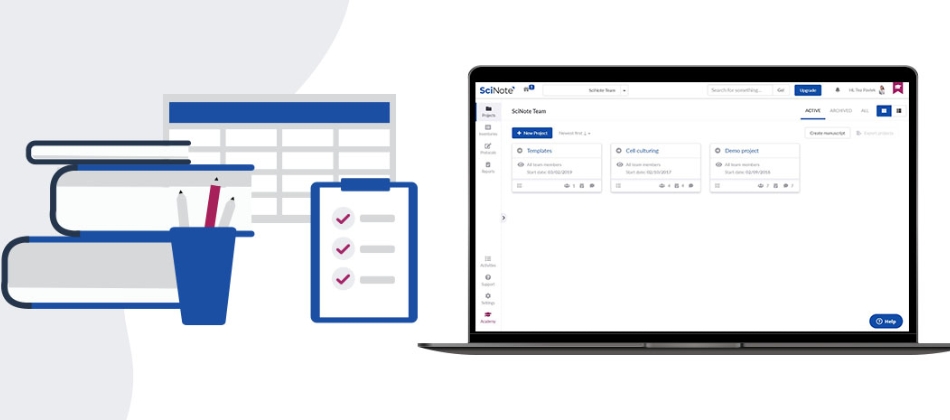
Lab Digitalization Quiz – How does your organization rank?
- July 16, 2020 |
Take the quiz and see how your lab ranks in comparison to others and which are the key activities your peers are taking to pave their way forward. Get insight and take the lead!
SciNote Reviews
Connect with us, get scinote eln.
Top-rated cloud-based electronic lab notebook (ELN) software.
- Premium plans
- Free electronic lab notebook for individual users
- Lab notebook app for mobile
Contact SciNote
- [email protected]
- EU HQ +386 1 235 09 60
SciNote, LLC
- 3000 Parmenter St. Middleton, WI USA POB 620828
Support & Resources
- Knowledge Base
- Downloadable Resources
- Release Notes
- SciNote Blog
Contact Support
SciNote Newsletter
Receive SciNote ELN news, webinars and articles.
How to Research: Ultimate Guide [+Online Tools]

The ability to effectively research is a skill that every student needs to succeed in their educational career. However, most people don’t really understand what research entails. Does it mean spending hours at your university library exploring archives? Or is searching for information online from the comfort of your home enough? And why can’t you just rely on Wikipedia, after all?
Our specialists have created this guide for students who feel lost when putting together an essay, paper, or presentation. Here, we will describe how to research in a detailed, step-by-step manner. We have also provided links to useful tools and resources that will help you along the way. First of all, let’s cover the definitions.
❓ What Is Research?
- Develop a Topic
- Look Through Sources
- Evaluate the Sources
- Write Your Paper
- Cite Your Sources
💡 9 Online Tools for Research
Research refers to the systematic process of discovering information and developing knowledge. We use it to understand new topics and to gain more insight into known issues. This happens through the collection and analysis of relevant data. The ability to research efficiently is one of the most fundamental skills in academia.
Any type of research will include the following features:
- A sound hypothesis on which the rest of the study is based. It will be either proven or disproven by the evidence gathered.
- Systematic investigative methods . These are controlled and follow a pre-established set of rules.
- Logical analysis . It follows a set procedure that involves deductive and inductive reasoning.
- Empirical data based on actual observation and evidence.
- Analytical study of the findings . This ensures in-depth exploration and minimizes mistakes.
- Creation of new questions and new lines of inquiry about the subject via the research.
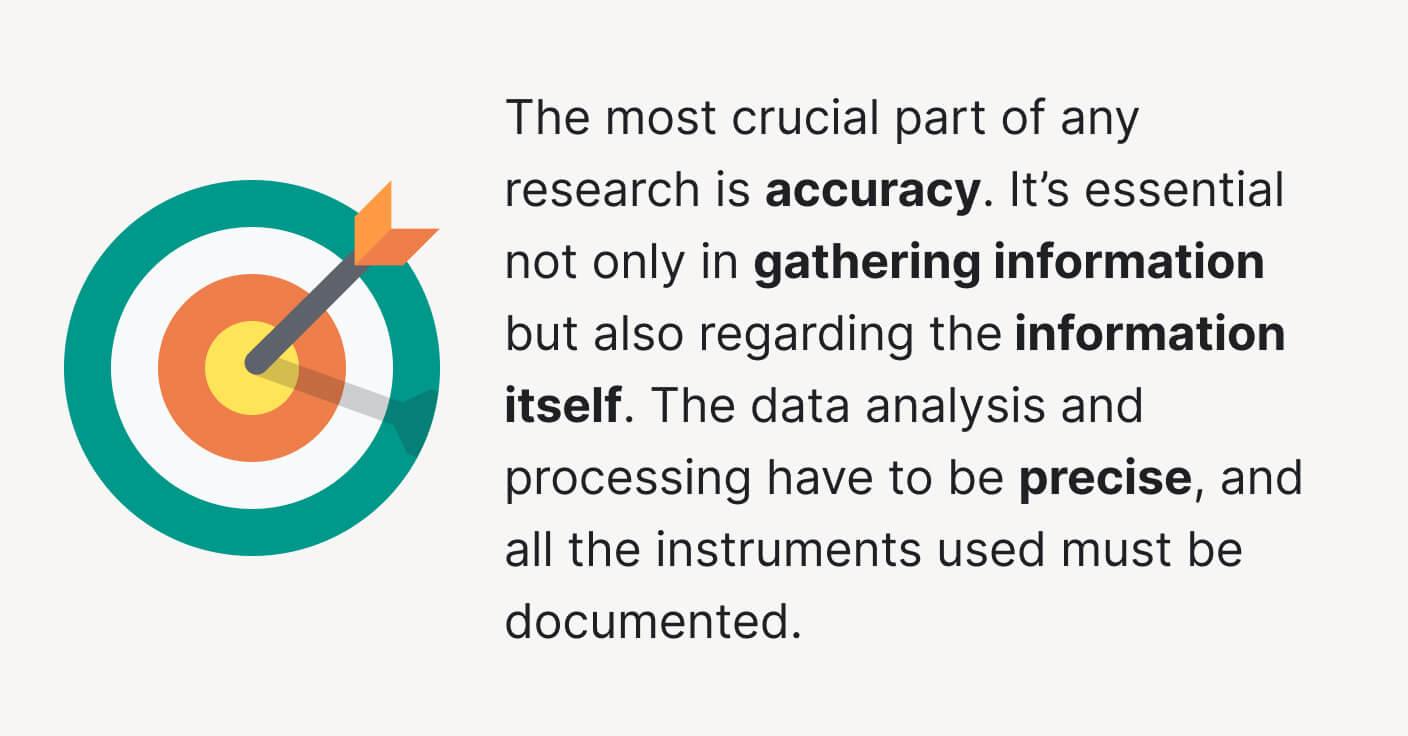
With that being said, a research paper is more than just the sum of its sources. Its primary purpose is to analyze or argue a particular perspective. In the end, your thoughts and ideas should be the ones you investigate. The evidence you discover during the research process will be the basis for your hypothesis.
There are three universal purposes of research that you should know about:
📚 How to Research: Step-by-Step Guide
As all the definitions you need are covered, we can proceed to learn about the process itself. We have developed this guide so that you won’t have any trouble conducting your research. In the image below, you can see all the required steps.
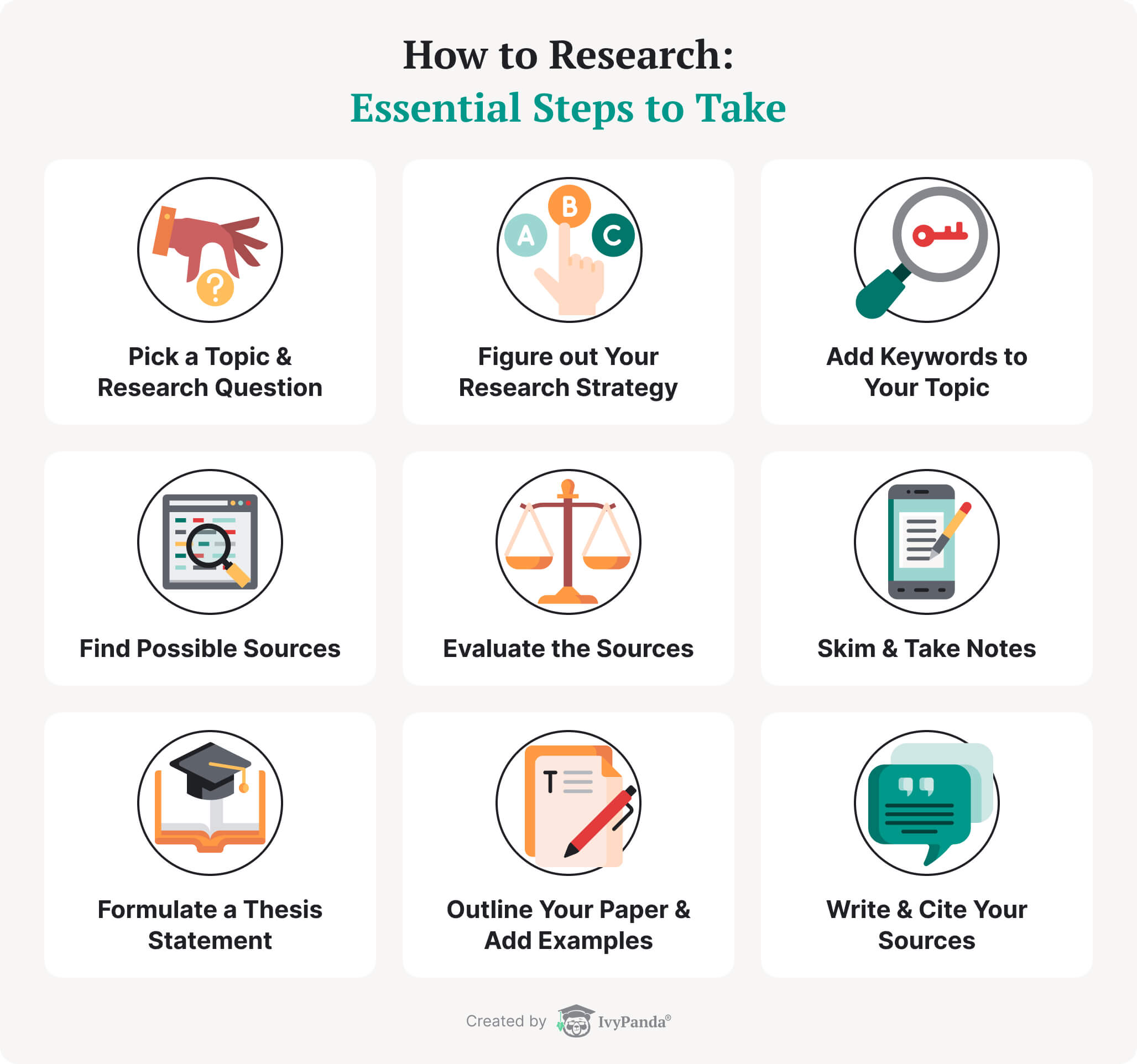
In the following sections, you will examine each step in detail. Also, you’ll see the reasons why our tips are practical and how to find sources for your research. Good luck!
1. Develop a Topic
1.1. pick or create a topic.
The first step to research is landing on the right idea. This process isn’t always easy, especially when you aren’t familiar with the chosen area of study. However, don’t fret. You can always change your topic later.
Let’s explore how to select your first research idea.
Research is always conducted for a particular reason. It will always relate to writing a paper, creating a project, validating existing results, etc. Your research depends on the goal of your assignment.
The answers will help you define the direction of your work:
- Do you have a list of pre-assigned topics? Can you come up with one yourself?
- What is the due date for your work? How much time does that leave for research?
- What is the scope of your assignment? (Presentation length, number of words/pages, etc.)
- Are there any specific requirements regarding the sources that you are allowed to use?
- Is it essential to use recent information and current sources?
When you have the answers to all the key questions, you can think of your topic. The following tips will help you:
- Choose an idea that is relevant to your assignment. Usually, your instructor will give you detailed instructions before you start working. If you are unsure about your guidelines, don’t be afraid to ask for clarification.
- Ensure that there are enough resources for you to use. When you think of an idea, do a quick preliminary search. It will allow you to determine whether there is enough available information on your topic. Take time to validate those resources and make sure they’re reliable.
- Search for a topic that is not too broad or too narrow. This step directly correlates with the one above. If you are finding too much general information, narrowing down your search might be a good idea. However, if you struggle to find credible sources, it could be a sign to broaden your topic.
- Try to be original. Restating the same ideas that have been explored thousands of times could damage your grade. Chances are, your instructor has heard it all before and isn’t all that interested in hearing it again. Yet, choosing an unconventional approach with a fresh perspective might earn you extra credit for creativity.
- Aim to find an area that will be interesting to explore. If you find a topic that you, personally, are curious about, researching it will be much more pleasant. This way, when you start writing or searching for information, you might actually enjoy the process.
1.2. Formulate Research Questions
As soon as you have chosen a topic, take the time to format it correctly. Wording it as a question will ensure that your focus is precise and nuanced.

And here is how you create research questions:
Step 1 : Do some research.
Take a look at the most recent discussions and debates on your selected topic. You can check out academic journals and scholarly conferences. Keep your focus on the main arguments to acquaint yourself with the concepts.
Step 2 : Try narrowing down your topic.
It is a lot more effective to target a single dimension of a broader topic than to tackle everything. To do this, try focusing on a particular aspect, such as a specific location or time period. You can also aim to discuss certain debates or issues that exist within the topic.
Step 3 : Keep your audience in mind.
There is a difference between crafting a presentation for your classmates and writing a research paper. Your audience will determine the level of detail that goes into your question.
Step 4 : Ask questions.
Once you have considered the above steps, it is time to begin asking yourself questions. Make sure they’re open-ended and start with ‘why,’ ‘how,’ or ‘what.’
Step 5 : Evaluate your questions.
After you come up with a couple of ideas, jot them down on paper. Look back at all the requirements for a successful research question. Which one of them will be the most effective for your assignment?
1.3. Choose a Research Strategy
To develop constructive research questions, you will need to conduct an initial survey of your resources. Take everything you’ve learned so far as your foundation. Now, you will need to create an efficient strategy for your further actions.
Your research strategy will depend on the following:
1.4. Figure out Keywords
With your research questions, strategy, and some background info covered, it will be easier to determine the keywords . They will help you look for resources and locate your work in the future. Over here, see how to work with keywords.
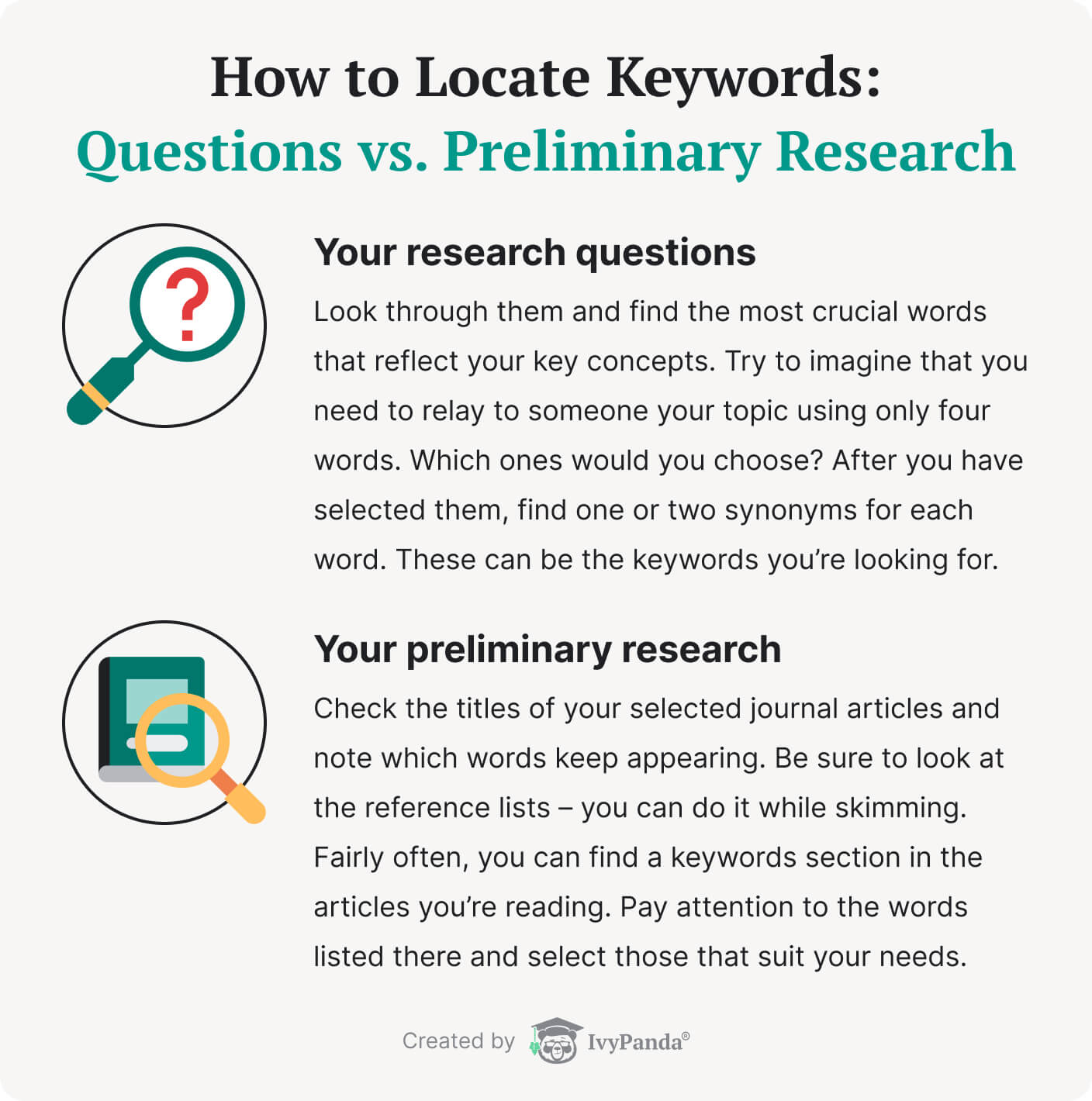
Once you have a selection of keywords, you can improve them by doing the following:
- Break them into related concepts. By the end, you should have four or five columns with associated keywords.
- Choose one keyword from each column. Use your library’s search engine to look them up. Don’t forget to type ‘AND’ in-between the words. It will narrow down the search so that only articles containing all the selected keywords will appear.
- Explore the results! Don’t be afraid to try several different combinations. You should also make sure to list all those keywords that bring you the most valuable results.
- If you don’t have enough results, try using fewer keywords. Alternatively, you can try to make your keywords broader.
- If you have too many results, try using more keywords. Alternatively, you can try to make your keywords narrower.
- Pay attention to which articles are the most relevant to your needs. Make sure to save them and skim them for a list of keywords. Write them down, and create a new list!
- Once you have exhausted your first list, you can create another one. Run another search following these steps. Don’t forget to note down the relevant materials – you’ll need them for your citations!
1.5. Improve Your Topic
As we mentioned above, you can change and refine your topic as many times as you need before you begin writing. That is why in this section, we will talk about how to polish and improve your idea. At the very least, we’ll give you tips on how to format it correctly.
First of all, we need to make sure that your topic is researchable. To accomplish this, answer the 5 ‘w’ questions :
- Why are you choosing this particular topic? How is it interesting or different from the rest? What is your stance on the matter?
- What are the main issues your topic is trying to explore? Is it controversial? What other opinions and questions exist on the subject?
- Who is talking about the topic? What points of view exist, and who is giving them? What is their agenda?
- When was this topic discussed? Is the issue recent or historical? Does the time frame matter?
- Where lays the importance of your topic? Is it debated on an international, national, or local level? Is there a particular place that is more affected than the rest of the world?
After answering these questions, you need to evaluate your idea from these two perspectives:
- Is your topic too broad?
It may happen if you find far too much information on the subject that doesn’t seem relevant. You will want to narrow it down and include some specifics, such as:
- Place (country, city, street, part of the world, etc.);
- Time (year, era, century, etc.);
- Populace (ethnicity, gender, age, occupation, etc.);
- Event or characteristic (historical occurrence, institutional perspective, etc.);
- Individual or group (a particular point of view, specific person or persons, etc.).
- Is your topic too narrow?
If you are discovering too few sources to build a proper case, your topic is too narrow. Try to broaden it using the following methods:
- Remove some of the specifics (place, time, populace, etc.).
- Expand some of the specifics (place, time, populace, etc.).
- Use synonyms to reword your topic.
- Look in other databases to broaden your horizons.
- Consider looking into a less current issue (the newer an idea is, the harder it is to find sources).
2. Look Through Sources
2.1. determine possible sources.
By this time, you most probably looked for background information on your topic a couple of times. Now it’s time to look for more specific info.
For starters, get the keywords you’ve chosen and see if there is enough information available. You can start by checking appropriate titles in the online libraries. Look for sources in encyclopedias and dictionaries to overview what books or articles you can use.
You can use the following websites for this purpose:
- Oxford English Dictionary
- Wordreference.com
- Encyclopedia Britannica Online
- Oxford Reference Online
Apart from encyclopedias and dictionaries, there are, of course, other places you can check. For instance, you can search for books in your local or university library . When you look through the text on the shelf, pay attention to the books nearby – they can become useful too in the subject area.
Additionally, you can find information in your textbooks and assigned readings. Use your library’s electronic databases that keep magazines and newspapers on the topic. In case you are not sure how to do that, ask your librarian. Also, use search engines to locate materials on the Internet. These types of sources will be helpful when looking for generic information.
2.2. Skim Some Books
When it comes to using books for your research, both hard and electronic copies work as well. In this section, we will tell you how to use them for your research.
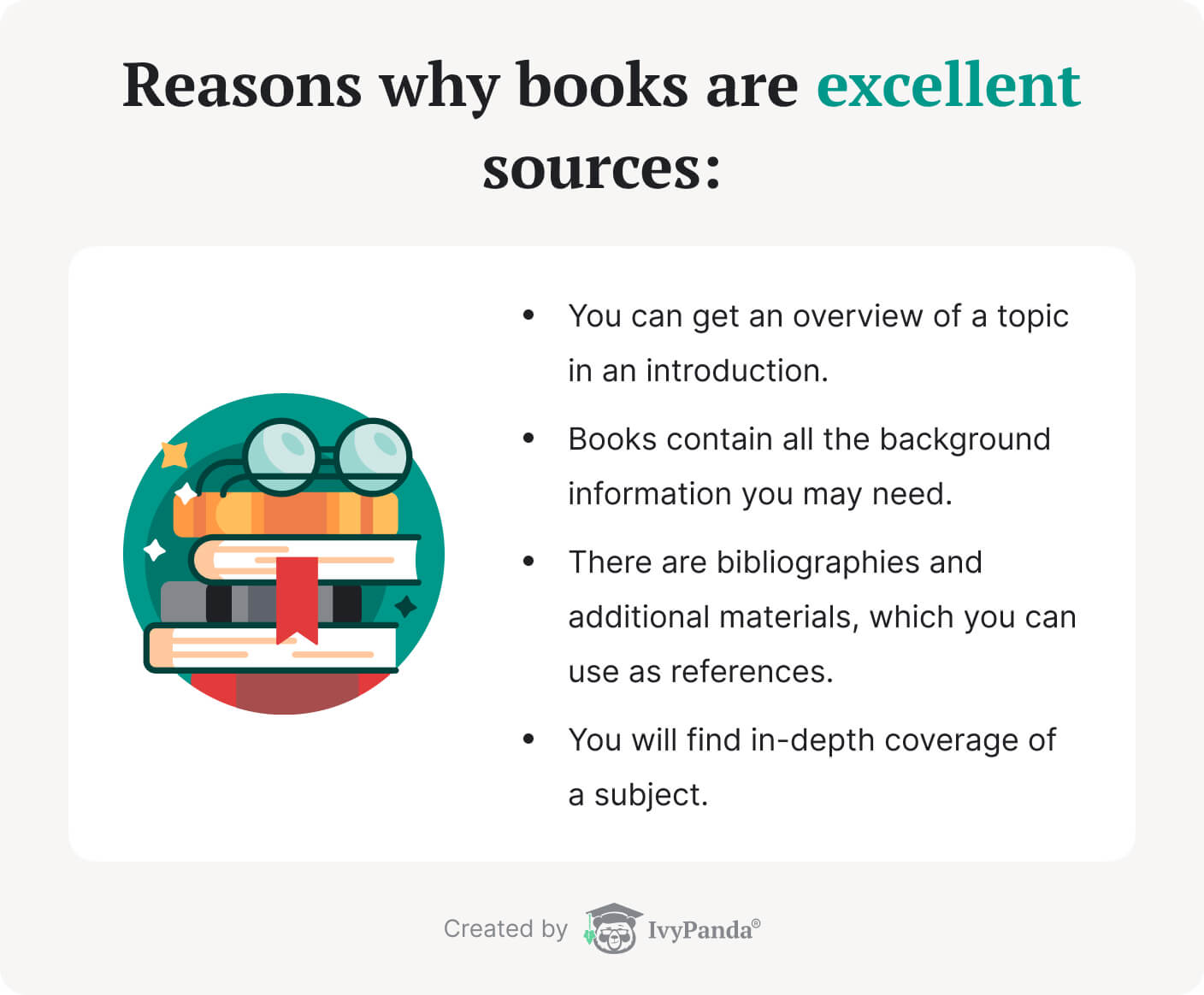
If you are a student, you probably do not have time to read every single book. When working on a short paper, essay, or presentation with limited time, you are simply looking for citations. Luckily, there is no need to waste your time examining each book thoroughly. Skimming is enough to understand if the source works for you or not.
To get the needed information in the book, look at the following elements:
- Title Page. There, you can find all the essential details about the book, the author’s name, title, the publisher’s name, the date of publication, etc.
- Table of Contents. This part provides you with a list of all the chapters in the book. You can get a general idea of what topics the author covered.
- List of Illustrations. In some books, authors use illustrations, tables, drawings to support the arguments and the facts. Looking through them can help you see the stats or some other facts quickly.
- Preface or Introduction. Usually, this part of the book provides the author’s intentions and the purpose of the book. Read it to see whether the book’s topic is necessary for your research.
- Bibliography. This part of the book provides a list of materials that the author used. You can check the bibliography for additional resources or references.
- Index. Skimming an index is excellent for identifying where the relevant information is located in the book. It can also give you some additional keywords that might be helpful for your research.
How to Find Books: Free Resources
You can find paperback books in your school’s library or ask your professor if he can lend you some helpful resources. To look for ebooks, we recommend using one of the following services:
For more free books and textbooks, check out the list of online learning resources for different subjects.
2.3. Find Relevant Articles
Scholarly articles are essential parts of every research. Even small argumentative essays usually contain citations from these resources. Here, we will explain how to work with them.
But first, you have to understand how to differentiate based on where these articles are being published. There are two types:
- Peer-reviewed journals
These journals include articles written by an expert in the field. Another expert (experts) read the article and provided feedback. Thus, the author implemented the needed changes based on the review.
- Scholarly journals
Experts write articles for these journals. They address the papers to other academics in the same field. Usually, scholarly journals are written by professional associations or academic press.
Usually, students can use academic and scholarly journals interchangeably. However, you should ask your instructor to explain if sources called “academic” are acceptable.
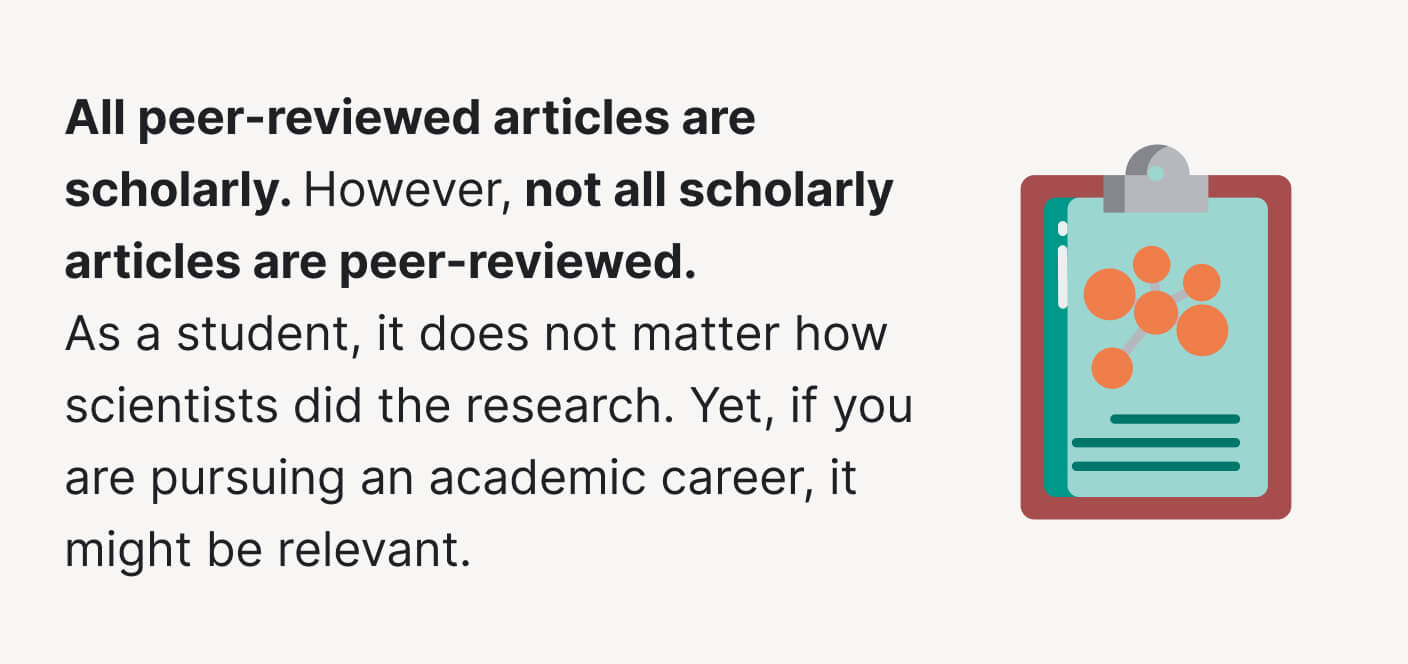
Not to read every single piece of writing, you need to learn how to identify if the article is credible or not. For that, pay attention to the following elements:
- Author. Look out for the author’s degrees and credentials. Additionally, see if they are a member of any association or work at a university or official organization.
- Intended audience. Understanding the article’s aim is essential. If the author intends to entertain and inform the general public, it may not be the best source for a student. You can still read and learn from without citing.
- Publication type. Some of the ways to recognize the type are:
- Go online and read the sections’ “aims and scope.”
- Check the visual appearance. If the article has colorful images and graphics, it is most probably written for the general public.
- Structure. You can also look at the length and formatting of the article. If it has a clear organization with headings, then most probably, the piece is scholarly. Same with the size. Short papers (with less than five pages) in general are likely to be not academic articles.
- Style. Examine the language, the point of view, and the tone of the article. If the document has many technical terms and professional jargon, then it is usually scholarly or peer-reviewed. Ask yourself what level of education one needs to comprehend the text entirely.
If all of the following parameters fit your expectations, you can only start by reading and analyzing the article.
How to Find Articles: Free Resources
Not sure where to look for articles? Check the following resources that our team recommends:
2.4. Examine Useful Databases
If you still don’t know what sources to use, you can study databases. These collections contain many high-quality books and articles and conference presentations, video lectures, illustrations, etc. In this section, see how to use them and how to benefit from doing this.
A database is a collection of stored and structured information, usually controlled by a dates management system (DBMS). Information is generally modeled in rows and columns in different tables. Thus, even your university’s online library can be considered a database.

Here are some crucial tips on using databases:
- AND ➡️ when you want to use both terms.
- OR ➡️ when you can choose either time.
- NOT ➡️ when you want to exclude words.
- Type asterisks, exclamation points, and questions marks. If you don’t use asterisks and wildcards, some databases will not provide the search you need. They are also beneficial in making your search more specific.
- Look out for the “subject search” option. This way, you will search for information located on the heading field. It is possible due to a system called controlled vocabulary .
- Improve your keywords. Try to be creative with your key phrases and words. Look for all the possible ways to express your topic by using synonyms and associated concepts.
- Try using parentheses . When you look for complex queries, use parentheses. They will allow you to group terms together.
- Search for clues. Carefully look for tips and hints in the results. Analysis of the trends, indications, and numbers can help you understand the information better.
- Check the stacks . Stacks are linear data structures that follow a specific pattern. As collections of elements, they can help you with one particular search.
- Look through different databases. You can look across other databases and combine what you’ve found. The more data you will consider, the more precise your results are.
Free Databases to Use for Research
There are many open-access databases that you can use when conducting your research. Our experts previously mentioned a lot of those in the sections about ebooks and scholarly articles.
Here are some more databases that you can find to be helpful:
We also recommend looking at the available open databases prepared by the University of California at Santa Barbara and Elmira College .
2.5. See Other Websites
Besides search engines and databases, there are other online resources that you can use as a starting point for your research. The only issue is that you might not know if the information is legit.
These websites are suitable for academic research:
- Educational sites (*.edu)
- Government sites (*.gov)
- News sites (CNN, NBC News, FOX News, etc.)
- Professional, nonprofit organizations (Unicef, WWF, etc.)
- General informative websites (Wikipedia)
Of course, you can use online resources for research. They are especially great when you’re looking for background information or defining the topic. Yet, one thing to keep in mind is to choose the websites and data from them carefully.
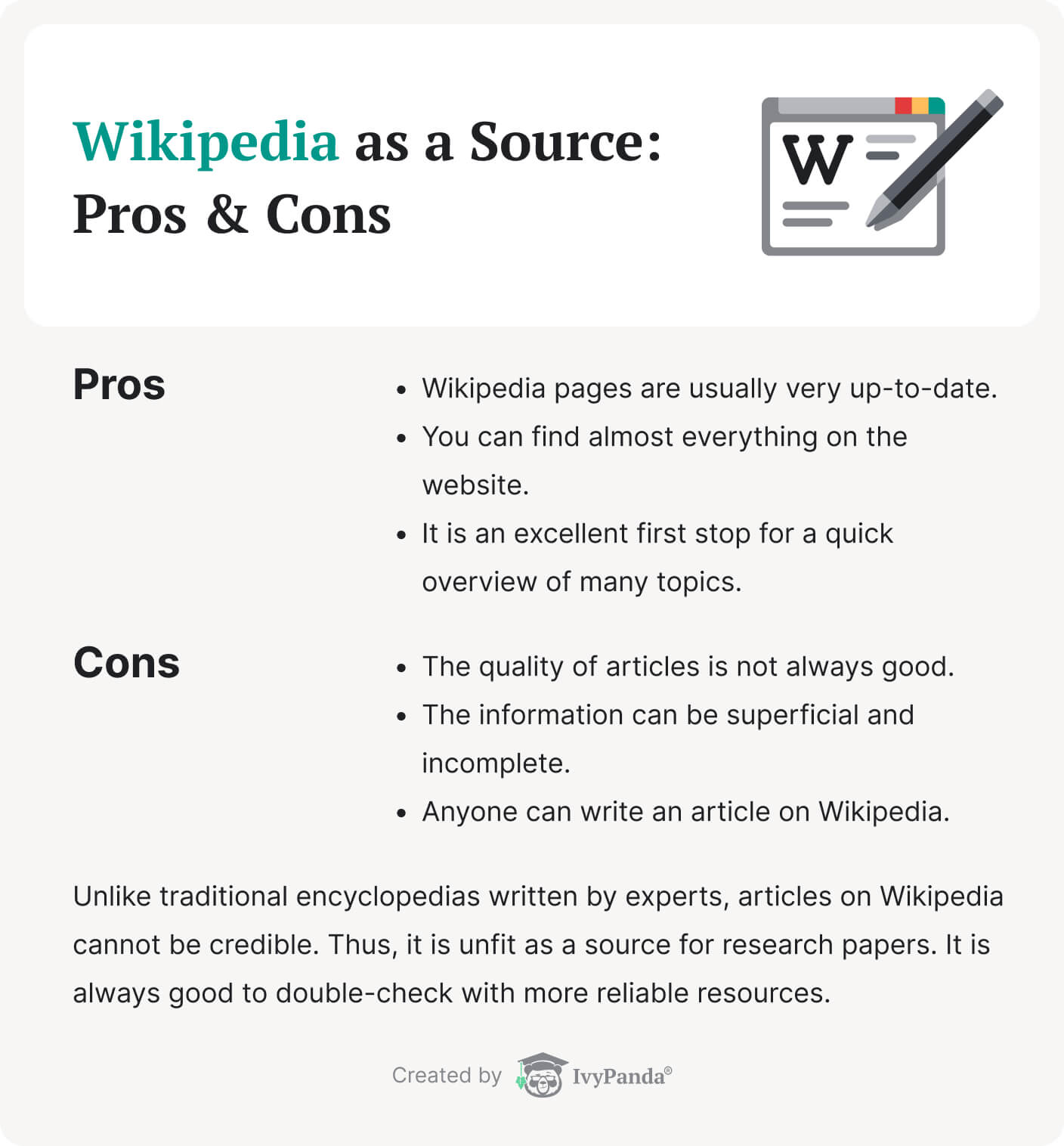
Here are some cons of using these online sources:
- Unreliable. Anyone can write websites, and they are rarely checked for accuracy, bias, and credibility. They are also regularly filled with old content.
- Chargeable. A lot of websites are free of charge. Yet, very often, to read the full article or cite the page you need, you have to pay.
- Tricky to cite. Most websites do not have any citation tools, so it can be hard to add them as references.
- Unstable. Websites are usually not permanent. Both the content and the address change – the link might not be available later on.
Free Websites to Use for Research
Using different websites for background information search and a general understanding of a given topic makes total sense. But when needed, you can use them for actual research.
For this purpose, we recommend the following websites:
3. Evaluate the Sources
3.1. select what sources to use.
By this step, you have collected many sources for your work. Now is the time to sort through them and get rid of the ones you don’t need. Here, we will explain how to choose appropriate sources for your research.
When checking the quality and credibility of a source, use this checklist:
3.2. Take Notes
When you have sorted through your sources, you can start reading through them at length. You will still have the opportunity to filter out unneeded information. To accomplish this, we recommend marking down the relevant fragments that you will use in your work.
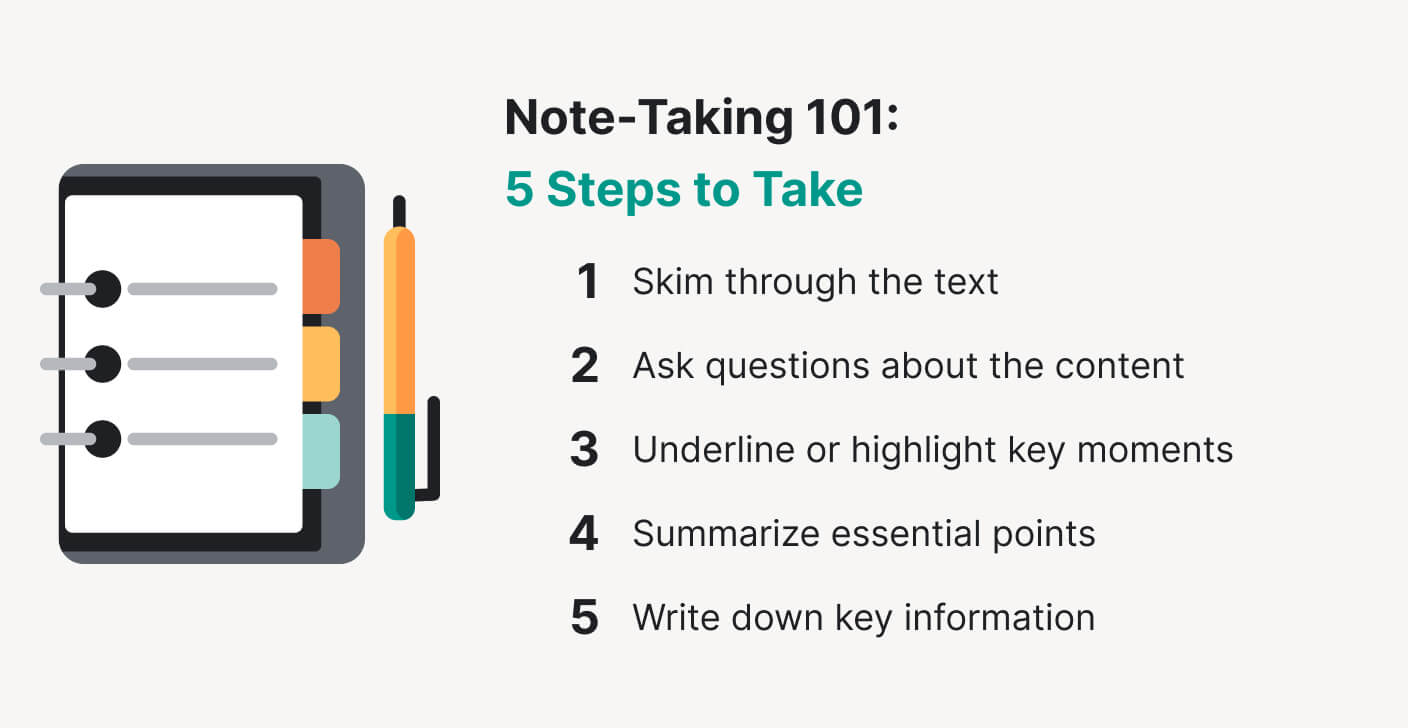
We advise you to study your sources in the following order:
Step 1 : Skim through the text.
Don’t immediately spend an excessive amount of time reading paragraphs and paragraphs of text. First, run through the source to identify the most relevant passages and headings. Note any words or terminology that catch your eye. It will allow you to form a rough idea of the author’s main arguments.
Step 2 : Ask questions.
After you finish skimming through the text, write down any questions that formed in your mind. Make sure that you keep them relevant to your topic. These questions will help you figure out what information you are hoping to obtain from the source.
Step 3 : Underline or highlight.
It’s time to read the source actively. Grab a highlighter or a pen and note down anything that seems relevant or interesting. Pay special attention to the passages that caught your eye earlier. Once you find answers to your questions (or think of even more questions), make sure to jot them in the margins.
Step 4 : Summarize .
As you have finished reading, write down a quick summary of your findings. Do this immediately after you finish while the information is still fresh in your mind. Organize your notes and look up any terminology that isn’t familiar. Also, take a quick look at the bibliography provided by the source – you could find something useful!
Step 5 : Write down key information.
Before moving on to the next source, don’t forget to note everything you need for the bibliography. Write down the title, the author’s name, the publisher, and the date of publishing. If you are using a website, save the URL. Double-check which citation format you’re required to use.
4. Write Your Paper
4.1. formulate your thesis.
A thesis statement is often referred to as the heart of your work since it contains the main idea and stance of the author. The writing process starts with figuring out what you want to say. State it in one sentence, referring back to all the research that you have conducted thus far.
Here are a few tips you could use in writing a compelling thesis statement based on your research:
- State your point clearly. Your argument needs to be explicit and direct. Remember that you will have to address it within the limited confines of your work. There isn’t the space to consider too many points of view. That is why your audience must be clear on the direction your debate is going to follow.
- Be specific. You have to ensure that your wording is as clear-cut as possible. The thesis needs to state the exact idea you will be exploring. If you formulate it too vaguely, the content of your work will be all over the place. Polish your thesis until it becomes specific to your argument.
- Question what you think. To accomplish this, you will need to keep your target audience in mind. Consider what views your readers must have to understand the point you are trying to make. Your statement must be grounded to those who don’t necessarily have the same ideas as you.
- Showcase a strong position. Don’t forget that your thesis statement is a reflection of your comprehension of the topic. While it must be clear and coherent, it should also advance your unique position on the matter. Instead of simply making an observation about something, don’t hesitate to take a stance.
Formulating a successful thesis statement takes time and practice. It is likely that you will not get it completely right on your first try. If you feel like you need some training or require examples, try using our thesis statement generator .
4.2. Outline Your Paper
If you have reached this stage in your work process, it means that you have everything you need. You have composed a strong thesis statement and have your notes and arguments beside you. Now, you have to put them together in a logical order. This way, your reader will see your thought process clearly.

To organize your paper , try this approach:
- Determine the research problem. This isn’t just your thesis statement but is also the key to creating your title. It is the central point of your work. Try formulating it in a single sentence or phrase for efficiency.
- Identify the key arguments. Think of what points you are trying to make with your research. Very briefly note them in your introduction. You will proceed to explore and build on them throughout the rest of your paper.
- Formulate the first category. Consider which point you should cover first. Typically, it is a good idea to start with definitions and clarifications of any critical terminology. You may also want to introduce the background of a particular theory or concept you are exploring.
- Include subcategories if needed. For now, try listing them in the form of a bullet list. The subcategories should provide the basis and support the main points you’re making.
- Sum up and conclude. Once you have created the rough draft, tie everything together. Conclude your project and refer back to your thesis. Make sure that you haven’t strayed away from your research question in creating your outline.
If you have followed these steps, you should end up with a defined beginning, middle, and end. Naturally, different research papers will have carrying outlines. For example, a term paper will have a smaller number of subcategories than a dissertation. Moreover, some projects will require you to mention your research methods, results, etc. You can find more information on how to write an essay or another type of paper in specialized online guides.
4.3. Add Quotes and Examples
To prove that you aren’t making up arguments on the fly, you should provide supporting evidence. You have to refer back to your sources and cite articles and books found during your research.
You can cite a source as supporting evidence like this:
You will be rephrasing and analyzing others’ opinions on your chosen topic for most of your work. However, from time to time, a direct quotation is necessary to support your arguments. This is suitable in the following cases:
- You don’t want to lose the author’s original meaning by summarizing or paraphrasing their words.
- The language in the source material is very effective and would be weakened if you tried to reword it.
- The language that the author is using is important historically.
- The authority found in the source will lend more credibility to the point you are trying to make.
5. Cite Your Sources
Congratulations – your work is nearly finished! You have only a couple of steps left. To round up your research, compile a list of sources you have used. You should also indicate which parts you have cited in your text. That is what we are going to discuss in this section.
Simply put, a citation is used to refer back to the source material. You can cite anything, from an academic article or book to a video or even a viral tweet. This is how you give credit to the original author for their work.
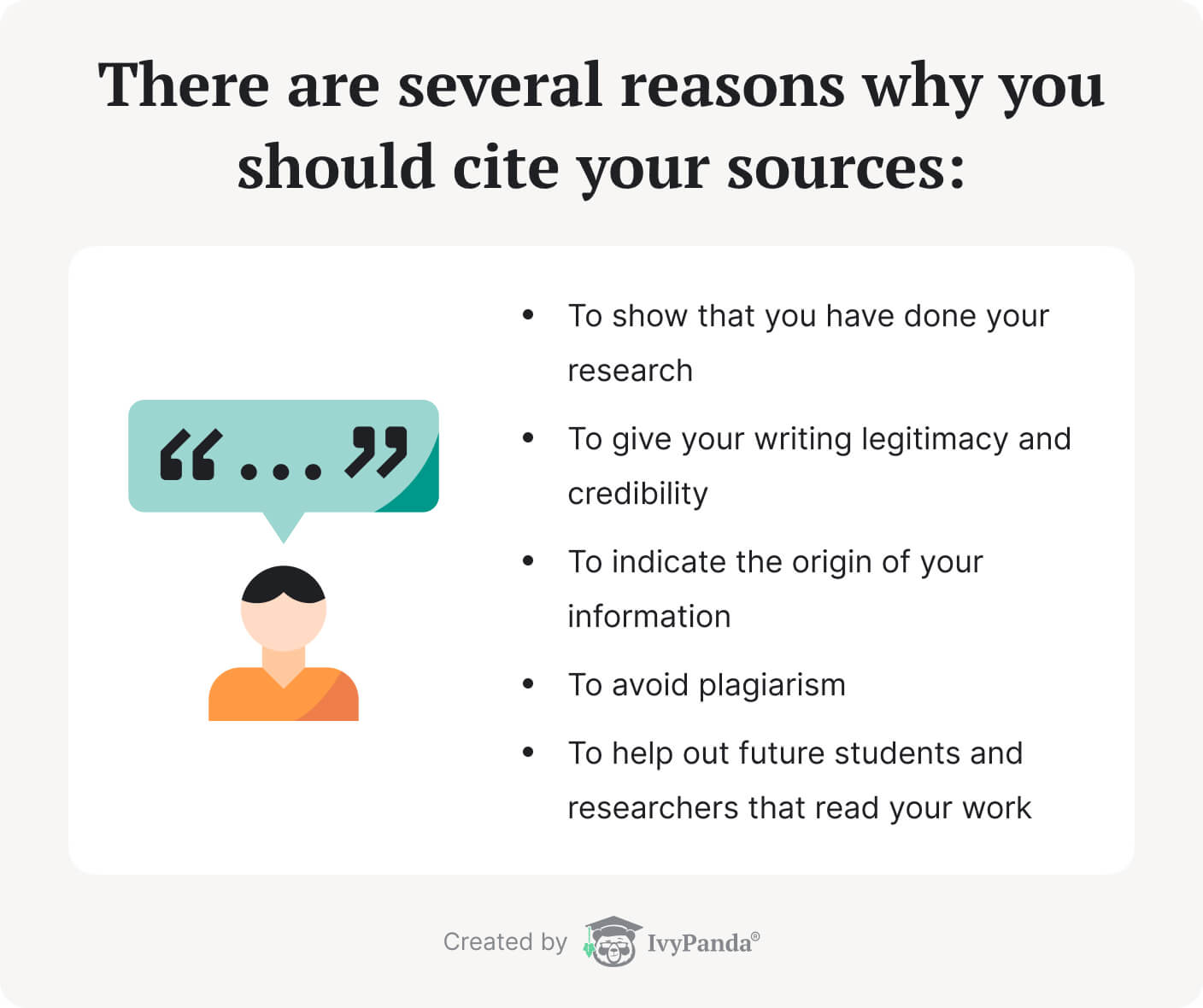
There are a couple of ways to utilize citations in your work correctly:
- When employing quotations, summarizing, or paraphrasing in your text, use in-text citations . These must be placed directly in the body of the work in parenthesis, following the cited fragment. The in-text citations are always shortened, referring only to the author and the year of publishing. Sometimes, for larger works, the page number is also included.
- The full citations go into the references/works cited page at the end of your work. This is also sometimes referred to as a bibliography. These include various features, such as the title of the work, the author’s name, date of publishing, etc. Different citation styles require different elements to be mentioned. Make sure to double-check which one your institution expects you to use.
As we mentioned, while creating any academic work, you are expected to use references. You will have to choose a particular citation style or be directed to one by your instructor. This style will be used consistently throughout your work. Each one has its specific features and guidelines.
Here is what you can expect from them:
You can read more about each citation style if you follow the links for the related referencing guides .
In the previous sections, we have examined search engines, databases, and websites that you can use in your research. However, there are plenty of other online tools that can be very useful for your work process. We are going to talk about them here.
The following online tools can help you immensely while you research:
- ProCon.org is a website that allows you to consider several viewpoints on debatable issues. It features multiple controversial topics and lets the readers experience different sides of the arguments in a non-biased manner.
- Journal TOCs is a service that allows you to discover the newest academic papers as soon as they are available online. When writing about current events, it is essential to stay up-to-date, especially concerning research.
- EndNote is a multifunctional tool with many valuable features. It provides you with fast database search, automatic bibliography, and more. Research takes an incredible amount of time and effort, and this program is determined to save you time and resources.
- Paperpile is an extension for your browser and can be installed on your mobile devices as well. Tracking down and compiling your references can become a hassle – this is why Paperpile manages them for you.
- Zotero is another useful extension for your browser. It collects and organizes your research for you. It can also help you with the creation of your citations and allows you to collaborate with others.
- RefWorks is a tool that allows you to save your references from any webpage. It also helps you import them from online databases. You will be able to annotate and highlight your texts, as well as quickly search through them.
- Science Daily allows its readers to browse through all the latest news in several different spheres. Keeping up with updates in the scientific sphere is essential for any researcher, but especially those in the STEM fields. ScienceDaily is a must-have if you need to save time.
- DeepDyve gives you access to different current research articles for a limited time. A large number of valuable sources online are locked behind a paywall. It tends to be troublesome and expensive. DeepDyve allows you to check articles for free to see whether you need them for your research or not.
Thank you for your attention! We hope that you are now feeling more prepared to approach research in any sphere. Share this page with other students who you think could use our guide.
🔗 References
- Basic Steps in the Research Process – North Hennepin Community College
- How to Do Research A Step-By-Step Guide: Get Started – LibGuides at Elmira College
- Conducting Research: the Process – Research Guides at Washington University in St. Louis
- Research Process: Select your Topic – Nash Library & Student Learning Commons at Gannon University
- Developing Research Questions – Research & Learning Online, Monash University
- How to Write a Research Question – Guides at The Writing Center, George Mason University
- Research Process Step by Step: Identify Keywords – Subject and Course Guides at University of Texas at Arlington
- Start Your Research: Evaluate Your Info – Library Guides at University of California, Santa Cruz
- 19 Notetaking Tips for College Students – Post University
- Writing a Paper: Outlining – Academic Guides at Walden University
- How to Outline – Purdue Online Writing Lab, College of Liberal Arts, Purdue University
- What Is Research: Definition, Types, Methods & Examples – QuestionPro
- Thesis Statements – The Writing Center, University of North Carolina at Chapel Hill
- 5 Steps to Create the Perfect Outline – Brandon Ramey, Herzing University
- How to Cite – University of Arizona Libraries
- The Research Process: How to Cite – LibGuides at Franklin & Marshall College
- Share via Facebook
- Share via Twitter
- Share via LinkedIn
- Share via email
Productive tips of information in advancing research skills. I recommend this content to all potential professionals. Thanks for your anticipatory contribution to all the budding academic and research communities.
This is strictly a rich content that goes along way in advancing the research prowess more importantly to the budding researchers. Thank you so much for this.
We are glad to hear your opinion! Thank you, Benard!
Something went wrong when searching for seed articles. Please try again soon.
No articles were found for that search term.
Author, year The title of the article goes here
LITERATURE REVIEW SOFTWARE FOR BETTER RESEARCH
“This tool really helped me to create good bibtex references for my research papers”
Ali Mohammed-Djafari
Director of Research at LSS-CNRS, France
“Any researcher could use it! The paper recommendations are great for anyone and everyone”
Swansea University, Wales
“As a student just venturing into the world of lit reviews, this is a tool that is outstanding and helping me find deeper results for my work.”
Franklin Jeffers
South Oregon University, USA
“One of the 3 most promising tools that (1) do not solely rely on keywords, (2) does nice visualizations, (3) is easy to use”
Singapore Management University
“Incredibly useful tool to get to know more literature, and to gain insight in existing research”
KU Leuven, Belgium
“Seeing my literature list as a network enhances my thinking process!”
Katholieke Universiteit Leuven, Belgium
“I can’t live without you anymore! I also recommend you to my students.”
Professor at The Chinese University of Hong Kong
“This has helped me so much in researching the literature. Currently, I am beginning to investigate new fields and this has helped me hugely”
Aran Warren
Canterbury University, NZ
“It's nice to get a quick overview of related literature. Really easy to use, and it helps getting on top of the often complicated structures of referencing”
Christoph Ludwig
Technische Universität Dresden, Germany
“Litmaps is extremely helpful with my research. It helps me organize each one of my projects and see how they relate to each other, as well as to keep up to date on publications done in my field”
Daniel Fuller
Clarkson University, USA
“Litmaps is a game changer for finding novel literature... it has been invaluable for my productivity.... I also got my PhD student to use it and they also found it invaluable, finding several gaps they missed”
Varun Venkatesh
Austin Health, Australia

Our Course: Learn and Teach with Litmaps
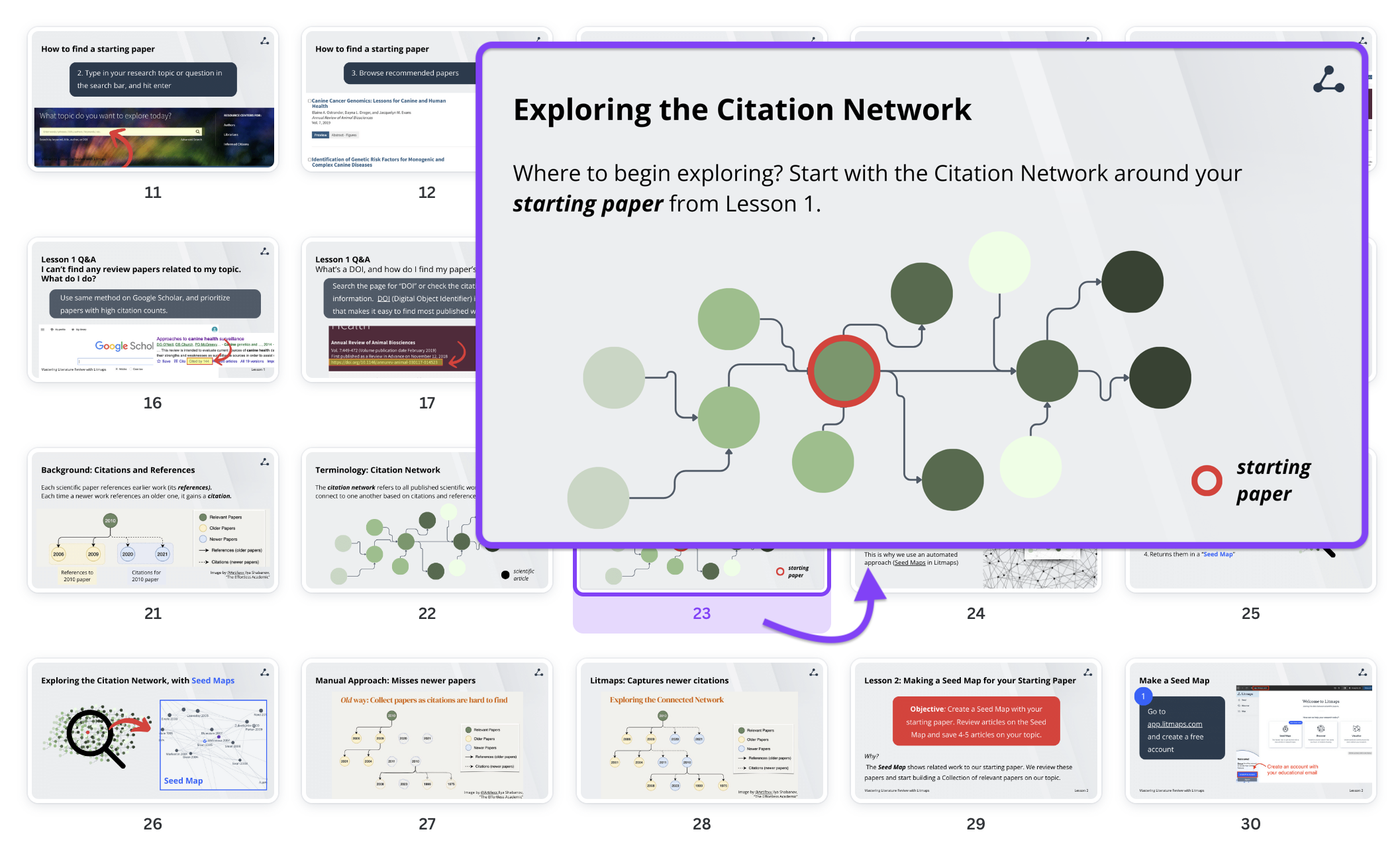
- Get One: Tornado Alert Apps
- The Best Tech Gifts Under $100
15 Best Free Web Tools to Organize Your Research
How to stay organized when researching and writing papers
:max_bytes(150000):strip_icc():format(webp)/tim-fisher-5820c8345f9b581c0b5a63cf.jpg)
- Emporia State University
- Cloud Services
- Error Messages
- Family Tech
- Home Networking
- Around the Web
Organizing research is important not only for your own sanity, but because when it comes time to unfold the data and put it to use, you want the process to go as smoothly as possible. This is where research organizers come in.
There are lots of free web-based organizers that you can use for any purpose. Maybe you're collecting interviews for a news story, digging up newspaper archives for a history project, or writing a research paper over a science topic. Research organizers are also helpful for staying productive and preparing for tests.
Regardless of the topic, when you have multiple sources of information and lots to comb through later, optimizing your workflow with a dedicated organizer is essential.
Patrick Tomasso / Unsplash
Many of these tools provide unique features, so you might decide to use multiple resources simultaneously in whatever way suits your particular needs.
Research and Study
You need a place to gather the information you're finding. To avoid a cluttered space when collecting and organizing data, you can use a tool dedicated to research.
- Pocket : Save web pages to your online account to reference them again later. It's much tidier than bookmarks, and it can all be retrieved from the web or the Pocket mobile app .
- Mendeley : Organize papers and references, and generate citations and bibliographies.
- Quizlet : Learn vocabulary with these free online flashcards .
- Wikipedia : Find information on millions of different topics.
- Quora : This is a question and answer website where you can ask the community for help with any question.
- SparkNotes : Free online study guides on a wide variety of subjects, anything from famous literary works of the past century to the present day.
- Zotero : Collect, manage, and cite your research sources. Lets you organize data into collections and search through them by adding tags to every source. This is a computer program, but there's a browser extension that helps you send data to it.
- Google Scholar : A simple way to search for scholarly literature on any subject.
- Diigo : Collect, share, and interact with information from anywhere on the web. It's all accessible through the browser extension and saved to your online account.
- GoConqr : Create flashcards, mind maps, notes, quizzes, and more to bridge the gap between your research and studying.
Writing Tools
Writing is the other half of a research paper, so you need somewhere useful to go to jot down notes, record information you might use in the final paper, create drafts, track sources, and finalize the paper.
- Web Page Sticky Notes : For Chrome users, this tool lets you place sticky notes on any web page as you do your research. There are tons of settings you can customize, they're backed up to your Google Drive account, and they're visible not only on each page you created them on but also on a single page from the extension's settings.
- Google Docs or Word Online : These are online word processors where you can write the entire research paper, organize lists, paste URLs, store off-hand notes, and more.
- Google Keep : This note-taking app and website catalogs notes within labels that make sense for your research. Access them from the web on any computer or from your mobile device. It supports collaborations, custom colors, images, drawings, and reminders.
- Yahoo Notepad : If you use Yahoo Mail , the notes area of your account is a great place to store text-based snippets for easy recall when you need them.
- Notion : Workflows, notes, and more, in a space where you can collaborate with others.
Get the Latest Tech News Delivered Every Day
- The 10 Best Bookmarking Tools for the Web
- The 10 Best Free Online Classes for Adults in 2024
- The 8 Best Search Engines of 2024
- 17 Best Sites to Download Free Books in 2024
- The 8 Best Free Genealogy Websites of 2024
- The 10 Best Note Taking Apps of 2024
- 5 Best Free Online Word Processors for 2024
- The 10 Best Productivity Apps of 2024
- The 10 Best Chrome Extensions for Android in 2024
- The Best Mac Shortcuts in 2024
- The Best Brainstorming Tools for 2024
- The 15 Best Free AI Courses of 2024
- The 10 Best Writing Apps of 2024
- The 20 Best Free iPhone Apps of 2024
- The 10 Best Word Processing Apps for iPad in 2024
- The Top 10 Internet Browsers for 2024

13 Market Research Tools: Best in Class for 2023

Most market research tools are designed to make it quicker and easier to find relevant data . Whatever the market, product, or purpose, the right research tools can do just that.
But, let’s be honest, some do it far better than others.
Whether you’re an enterprise firm with complex needs and a budget to suit or a smaller business needing free market research tools, read on to discover which online tools for market research are hot right now.
Note: The top market research tools list has been collated using review platforms like G2 , along with direct feedback I collected from over 500 business leaders in June, 2o22.
#1 Best overall market research tool: Similarweb Digital Research Intelligence
Most-loved feature: The Benchmarking tool
We might be a little biased, but this really is the fastest way to see how you measure up against competitors in any sector or location. Analyze market leaders and rising stars to unpack and track their digital success instantly.
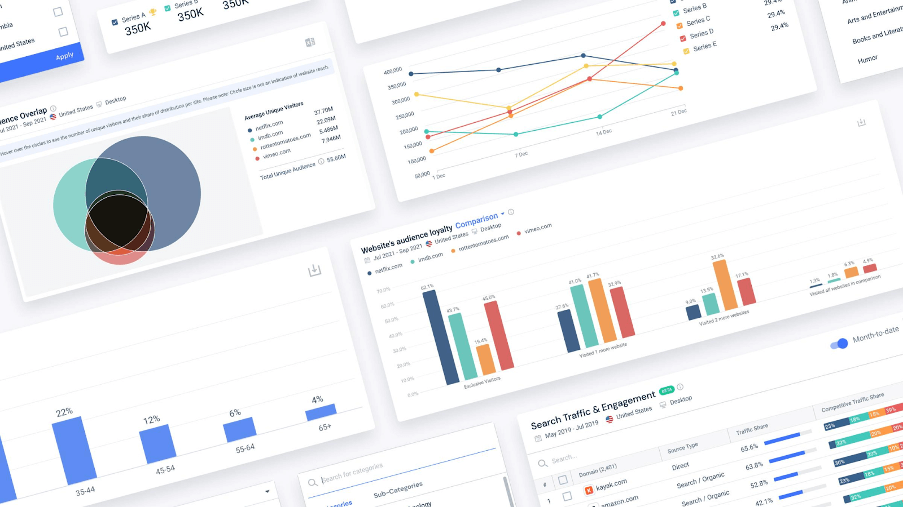
Quick Explainer
Similarweb Research Intelligence is a single source of truth for the online world. Giving any business the ability to quickly analyze the online aspects of any industry or market in an instant. It displays critical insights in a way that makes it easy to view trends, competitive performance, audience insights, growth opportunities, and more. It’s the only market research analysis tool that brings together data from desktop, mobile web, and apps to provide a complete view of the digital landscape.
Key abilities
- Competitive benchmarking
- Market research
- Company research tool
- Audience analysis
- Consumer journey tracker
- Mobile app intelligence
Freemium Version: Yes, there is a lite version of the product that provides limited data for a single user, and a single location.
Free Trial: Yes, there’s a 7-day trial available. Try it out here .
Ongoing Subscription: Yes, you can pay monthly or annually for a subscription. Different levels are available, and each package is tailored. Review pricing and plans for Similarweb here.
Like what you’ve seen so far?
See our market-leading digital research tool in action in this quick 2-minute clip.
#2 Best free market research tool: Think with Google
Most-loved feature: Find my Audience
A way to discover new audiences on YouTube based on things like habits, interests, and intended plans to purchase.
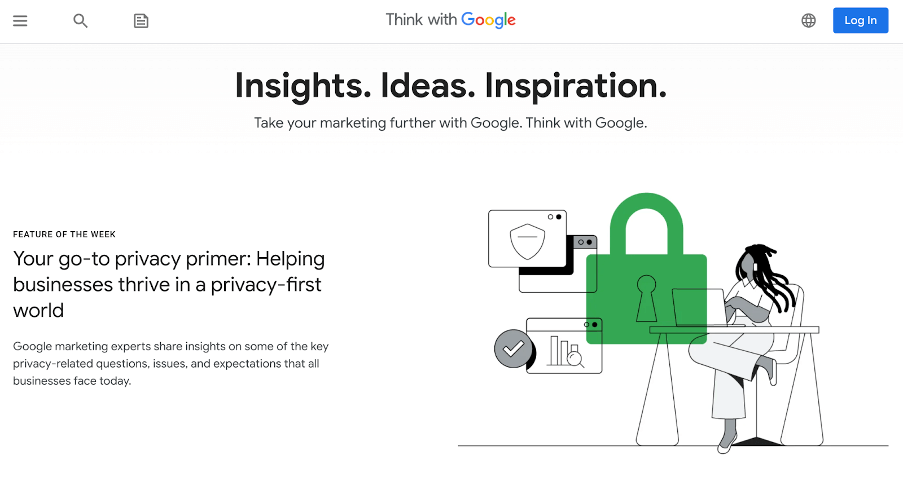
Think with Google is a suite of digital research tools that curate resources from a huge pool of data across the web. It presents them as insights that aren’t typically available elsewhere. It’s a unique way to view trends, insights, and stats. Data isn’t offered in real-time but serves more as a library of figures and facts that take the form of articles, videos, interviews, case studies, and more. In addition to being a place people can go for forward-looking perspectives and data, there are several tools designed to help marketers.
Key functions
- High-level insights into most local or national markets
- Behind the scenes look at cross-platform digital campaigns
- Consumer insights
- Deck-ready stats (not in real-time)
- A range of tools to inform marketing objectives and actions
Freemium Version: The entire suite of market intelligence tools is free.
Free Trial: As a free market research tool, no trial is needed.
Ongoing Subscription: You can subscribe to a newsletter, but not the product.
#3 Best digital research tool for content and FAQ development: Answer the Public
Most-loved feature: Search listening alerts
A pro feature that sends you weekly emails that indicate how search behaviors shift over time. It takes the specific phrase or keywords you’re tracking in the platform and updates you weekly.
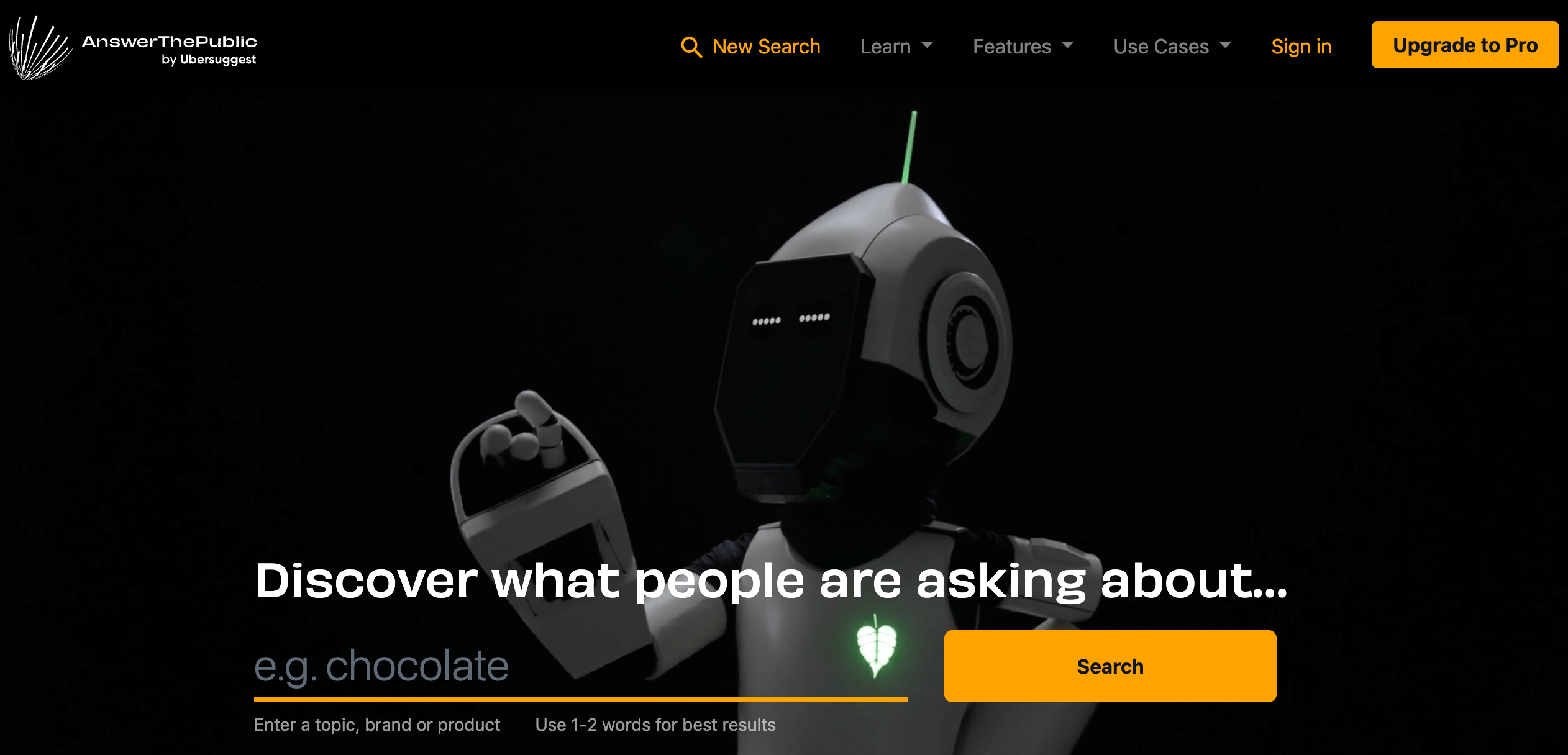
Quick Explainer
Discover the questions people are asking online about key terms, products, or services. It’s designed to help content teams and website owners develop new content ideas, and relevant FAQs that are based on the types of queries people ask online.
- Track important keywords and phrases
- Get weekly emails about changes in search behavior
- Enter any keyword to uncover relevant questions or search terms
- Folders to help organize your research
Freemium Version: Yes. You get a limited number (3) of searches per day.
Free Trial: No.
Ongoing Subscription: Yes. You can pay monthly or annually for this service. Pay-monthly fees are a flat rate of $99. Discounts are offered for yearly subscriptions.
#4 Best tool for market research surveys: SurveyMonkey
Most-loved feature: Question bank
A library of hundreds of questions, pre-written by survey methodologists.

As far as market research surveys go, it’s the leading online research tool for surveys worldwide. With plans to suit the individual through to the enterprise, it’s a feature-rich, easy-to-use platform that encompasses creation, collection, and analysis under one roof. Surveys are optimized for any device and integrate with platforms like Zoom, Salesforce, Marketo, and more.
Key functions
- Create and send unlimited surveys, quizzes, and polls
- Pop-up online surveys
- Mobile app access to create, send and analyze surveys on-the-go
- Team collaboration function (unlocked with a team plan)
- Survey builder
- Customization and branded surveys (available with advantage or premier plans only)
Freemium Version: Yes
Free Trial: Occasionally, free trials are offered for premium plans.
Ongoing Subscription: Yes, you can pay annually or monthly. There are three different plans to choose from, ranging from $25 to $129 per month.
Helpful: Check out our blog and see 18 different ways to use market research surveys .
#5 Best online research tool for marketplaces: Similarweb Shopper Intelligence
Most-loved feature: Cross-shopping analysis
Cross-shopping analysis shows you how loyal a segment of customers is to a brand, along with what other brands they browsed or bought from. Uncover competitors and discover new partnership opportunities; these are game-changing insights if you sell on any marketplace.
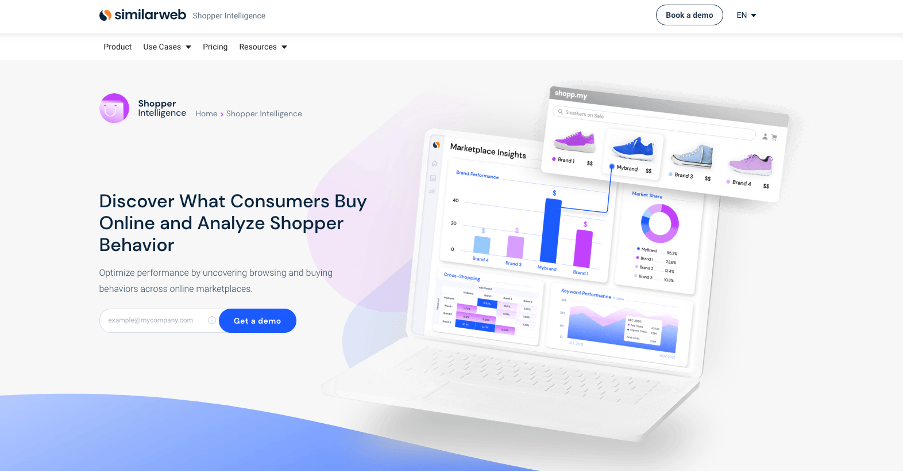
Similarweb Shopper Intelligence is a type of online market research tool that helps you uncover and analyze browsing and buying behavior across marketplaces. Using its data, businesses can track category, product, and brand performance with ease. It helps ecommerce organizations to detect potential threats, unearth new product or category opportunities, discover new potential partnerships, and optimize search strategy and performance.
- Monitor consumer demand for any product, brand, or category
- Retail search strategy optimization
- Consumer behavior insights
- Track cross-shopping, loyalty, and purchase frequency
- Analyze brand awareness
Note: This solution uses a unique data methodology via multiple networks and partnerships. At the time of writing, there is no other consumer behavior insights tool for market research that offers this quality of data for marketplaces.
Freemium Version: No.
Free Trial: Yes. There is usually a 7-day trial available here .
Ongoing Subscription: The price is determined by things like the number of categories and/or domains you want to access. Each quote is customized to a client’s specific needs.
Want to know a little more?
Watch this quick clip to see the best ecommerce digital market research tool in action.
#6 Best market research tool for brand tracking: Latana
Most-loved feature: MoE (margin of error) Readings
To deliver transparency on data confidence levels, Latana’s dashboard includes a feature that allows clients to toggle-on, or toggle-off, margin of error (MoE) readings on all data points. These are highlighted using a traffic-light system of confidence (red=low confidence, orange=medium confidence, and green=high confidence). This small feature makes a big impact — it helps clients to correctly interpret the data and to visibly see quality shortcomings.
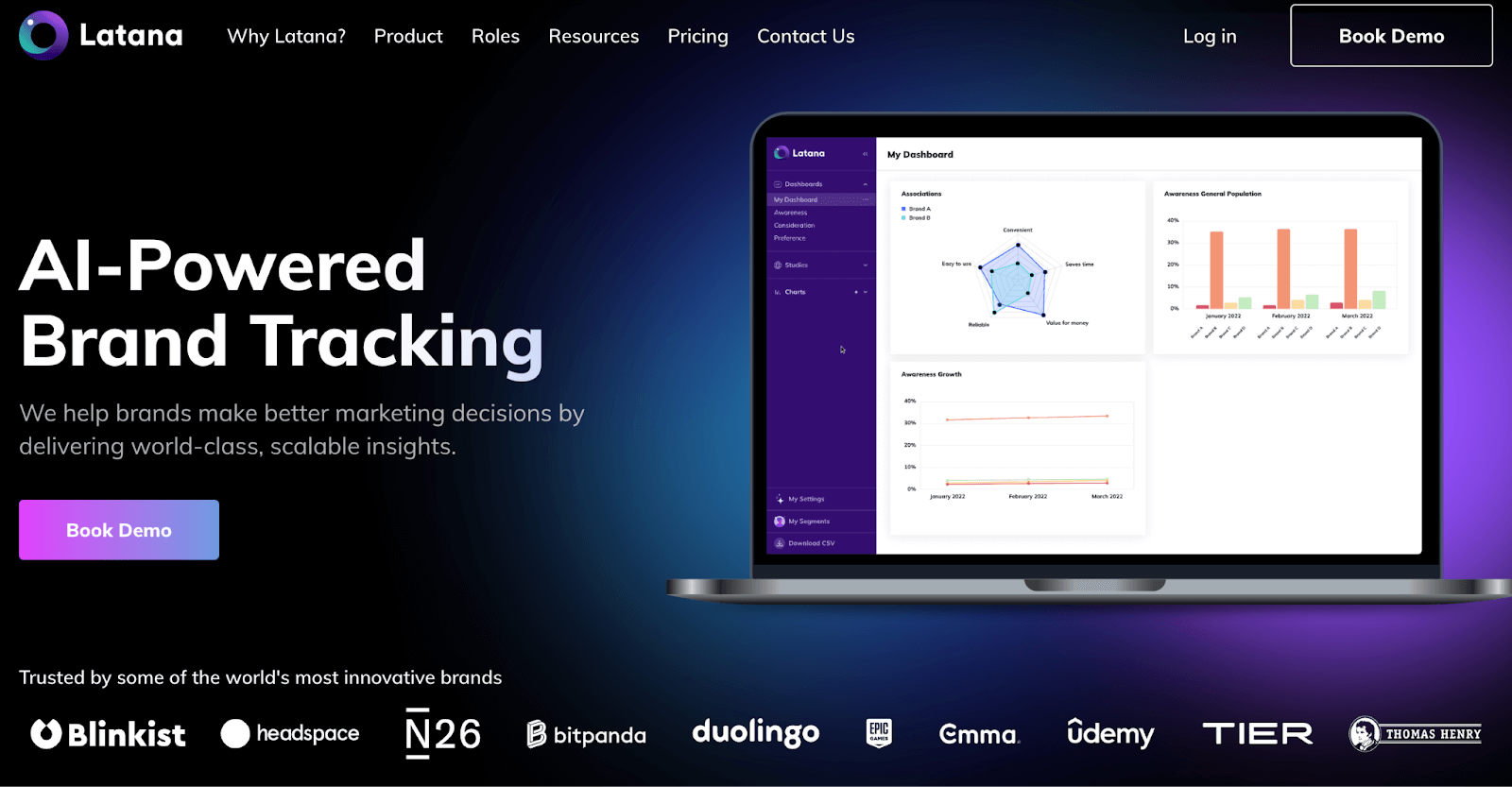
Latana is a B2C brand tracking tool that provides granular insights about online audiences. It helps organizations understand how key segments of consumers feel about brands and portrays relevant standings vs. industry rivals.
- Focus on niche consumer segments that matter to your business
- Uncover rival’s audience data and identify opportunities to grow
- Understand brand perception, and track how it changes over time
- Discover the most well-known brands in your industry
- Track rival’s brand awareness across gender, age income, location, and education
- Find out the main purchase drivers for your industry
- Infrastructure gives reach to over 6 billion smartphone users globally for representative brand opinions
I caught up with Latana’s CMO, Angeley Mullens. Here’s what she has to say about their offering.
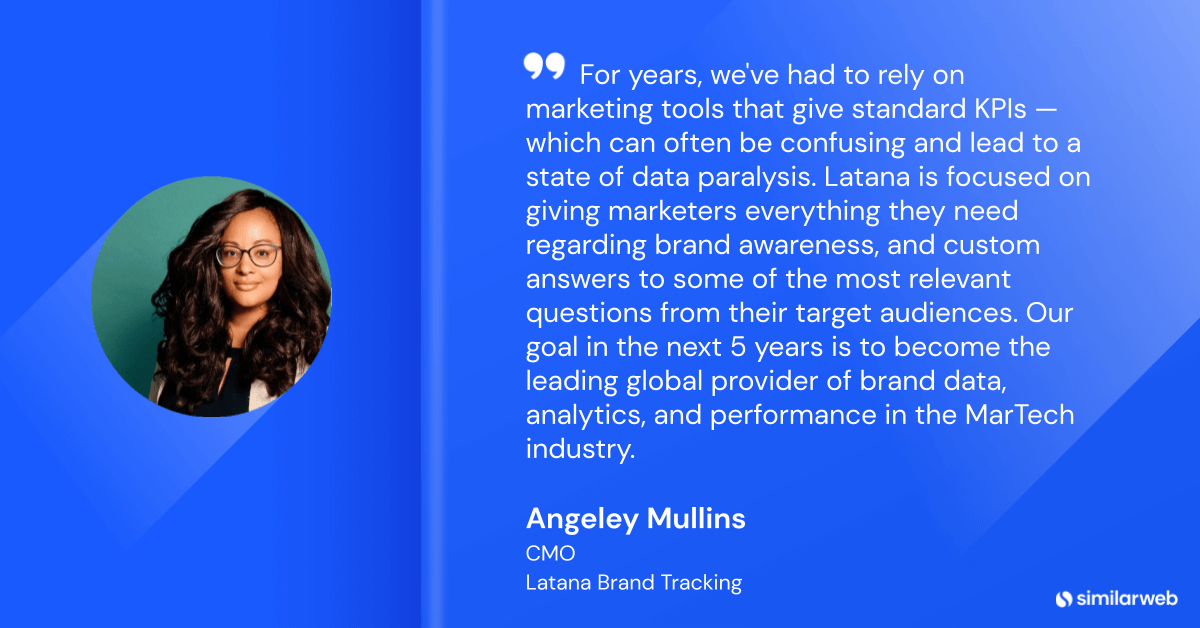
Ongoing Subscription: Pricing for Latana isn’t available online. All packages are tailored to individual brands and their specific needs.
Enjoy 360 Visibility 24/7
Get the data you need to adapt to market changes and industry trends in an instant.
#7 Best research tool for social media listening: Hootsuite
Most-loved feature: Multi-channel insights
It’s a legacy feature, but one which makes it the best online research tool for social listening and monitoring. Having the ability to easily schedule posts, ad campaigns, and handle responses for every social media channel from within a single platform is what makes this a market-leading digital research tool.

Hootsuite continues to claim the number 1 spot on G2’s list of digital research tools for social media monitoring . It’s a tool to help you manage all aspects of business social media, across multiple channels, in a single platform. As well as being able to manage your socials, it also keeps you up-to-date with the latest trends and activities of your rival’s social media channels.
- Publish and schedule social media posts
- Measure cross-platform results
- Message management
- Social media trend analysis
- Social media ad-campaign management
Freemium Version: Yes. You can get a free version that supports 2 social accounts and 1 user.
Free Trial: Yes. A 30-day free trial is available here .
Ongoing Subscription: There are four plans; professional, team, business, and enterprise; ranging from $49-$739.
#8 Best digital research tool for prospecting: Similarweb Sales Intelligence
Most-loved feature: Insights generator tool
The insights generator shows you unique facts for your prospects and accounts; with complete visibility into their digital strategy and performance. It’s ideal for refining sales and marketing efforts while staying focused on growth.
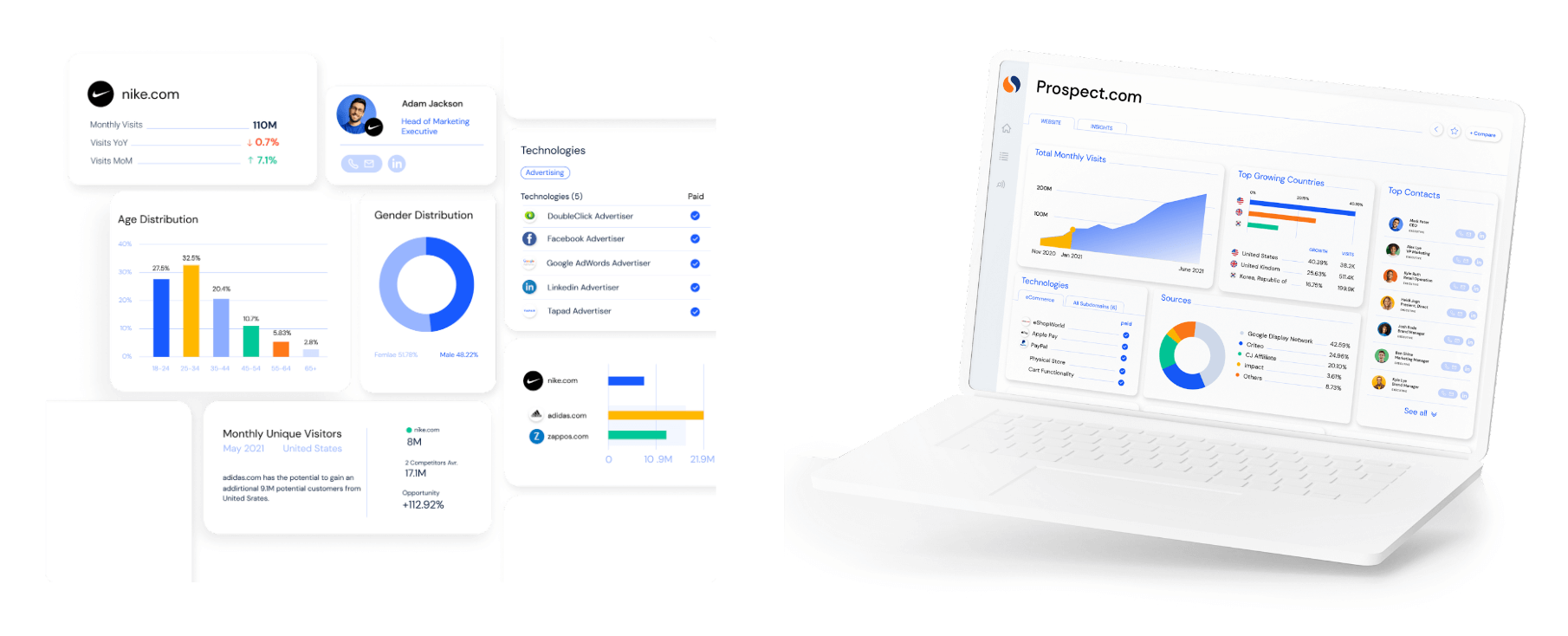
Similarweb Sales Intelligence helps organizations find viable prospects by showing you who to reach out to, when to do it, and how to capture their attention. The lead generator tool helps you find the right prospects, and key insights help create engaging outreach emails. For sales departments, ecommerce and mar-tech sectors, this type of digital research tool can take prospecting and engagement to a completely new level; along with revenue and growth.
Key functions:
- Lead generation and enrichment
- Digital insights for 100M+ ecommerce websites, publishers, and advertisers
- Fraud detection
- Sales engagement
- SFDC integration
Free Trial: Yes, if you would like a free trial, please request that here.
Ongoing Subscription: Prices for this digital market research tool varies depending on the package and options chosen. Grab a live demo of the product and get a tailored quote here .
Insightful : If you’re looking at market research tools for the ecommerce industry, bookmark our Ecommerce Trends and Predictions for 2023 to read later.
#9 Best market research analysis tool for data visualization: Tableau
Most-loved feature : Connects to almost any data source

As a clear market leader, and a no-brainer for larger organizations with business intelligence analytics and teams. Tableau leads the way in online research tools for data visualization. It connects to a huge range of data sources and pulls information into a highly-appealing dashboard that is designed to make it easier and faster to explore and manage data. It takes data from platforms like Similarweb, then combines it with other data sources before presenting crisp, clear, insights that have the power to shape strategies and drive key transformations.
- Lightning-fast analytics
- Smart dashboards for richer insights
- Live connection to almost any data source, with automatic updates
- Drag-and-drop style UI: easy to use
Freemium Version: No. However, students and teachers get a year’s free access to the platform.
Free Trial: Yes. You can subscribe to a free 30-day trial.
Ongoing Subscription: Most plans are offered annually, with prices ranging from $15 per month upwards. The price depends on whether you use their hosted or on-premise versions, the number of users, and the inclusion of specific plugins.
#10 Best market research tool for UX testing: Loop11
Most-loved feature: Online usability testing
This feature analyzes the usability of a website with users performing live tasks on a site. It helps you understand user behavior, and shows how and why a website is used.
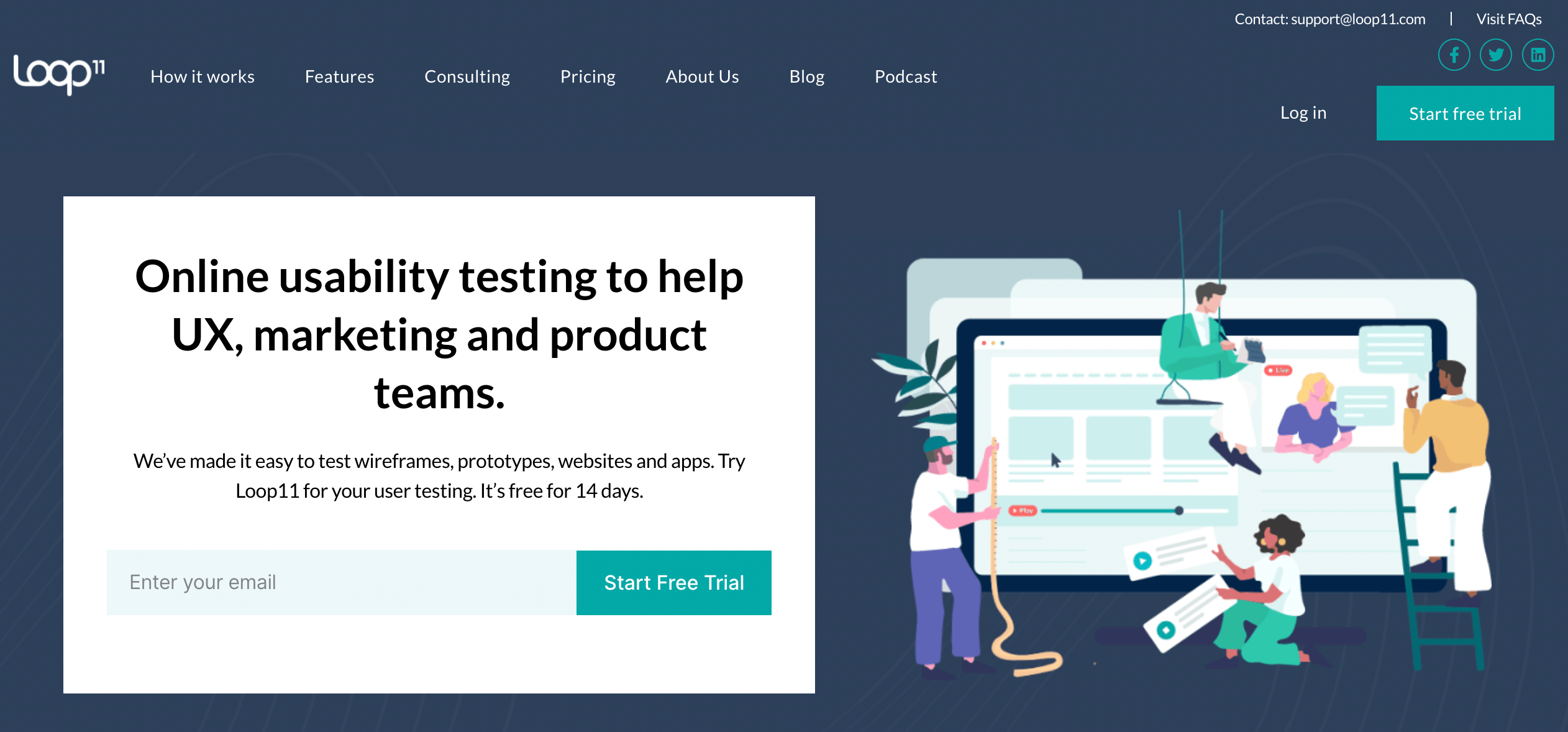
Loop11 is a market research tool that provides usability testing to help organizations build better websites and products. It comes with a pack of useful features that provide both moderated and unmoderated testing, helping businesses to find the right audience to test prototypes and products. It’s designed to help you see how appealing a product is to a particular audience, determine their preferences, then build these insights into a design.
- Ability to test across multiple devices, including tablet, mobile, or desktop
- User-friendly test builder that requires no coding
- Easy-to-add surveys that collect psychographic and demographic data
- Provides useful metrics like time on task, task completion rates, and NPS
- Mapping of customer journeys during a test period
Free Trial: Yes, a 14-day trial is available here .
Ongoing Subscription: All plans come with the option to pay monthly or annually. Prices range from $199-$599 per month.
#11 Best research tool for measuring customer experience: Temper
Most-loved feature: Rating stream
See real-time feedback as customers respond to questions via website or email channels. The stream provides a detailed view of ratings, comments, locations, referrers, email addresses, and more.
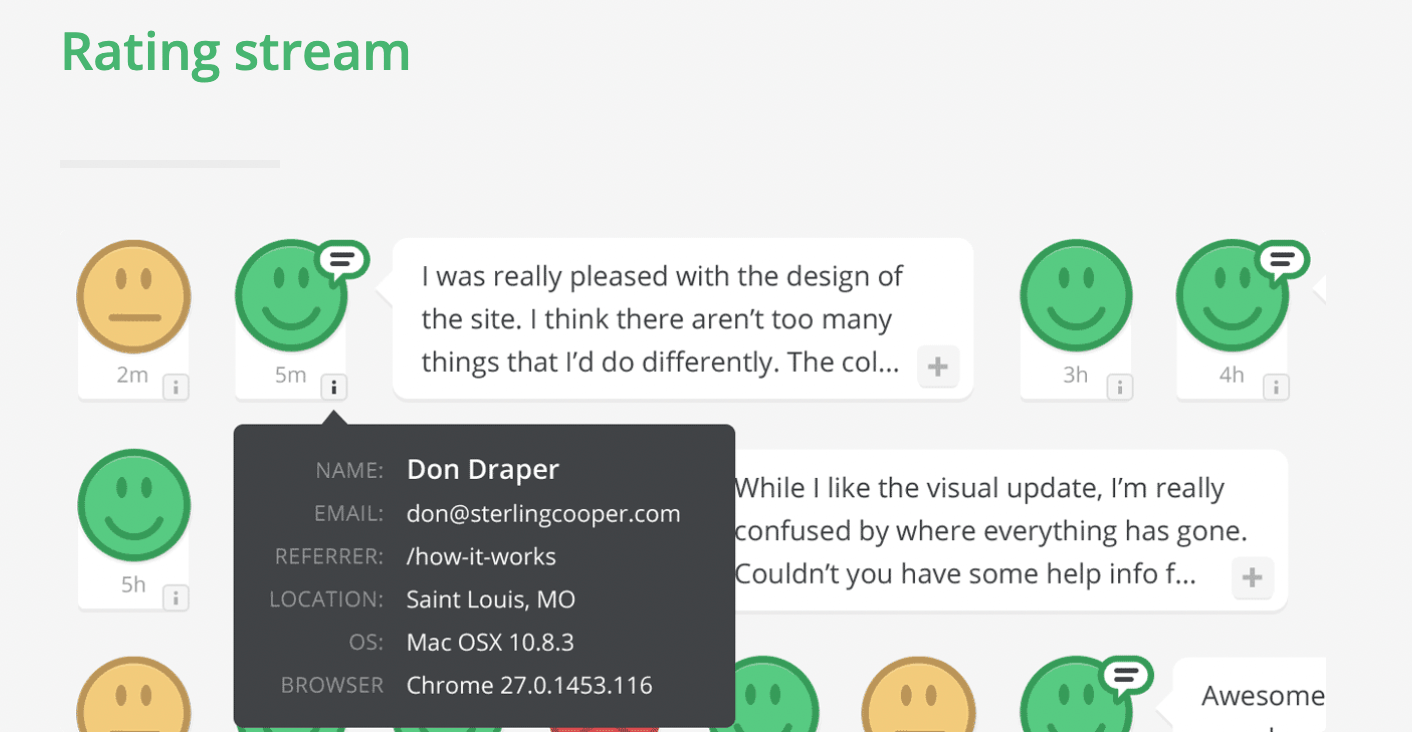
Temper allows any company to find out how customers feel about their product at all times. It directly provides first-party data to a business, preventing the need to design and distribute complex surveys. It can be placed as a widget on the site or in emails, and questions are asked to gain real-time feedback from visitors and customers alike.
- Easily deploy questions across website and email channels
- Quickly spot poor experiences to identify problematic areas of a business or product
- The rating graph gives you a real-time view of results for any question asked
- Public rating wall shows how you’re performing, instilling confidence and trust
- Ratings come with open text fields to give additional context to responses
- Referrer data gives you the ability to segment feedback and relative performance
- Tracking variables let you send data with ratings, such as order numbers, user IDs, etc.
- User targeting lets you determine who sees questions and how often they see them
Freemium Version: There is no freemium version. However, their hobby plan gives you a slimmed-down version of the product and costs $12 per month.
Ongoing Subscription: Four plans are available, ranging from hobbyist to enterprise. The lowest pricing tier starts at $12 monthly, and their top-tier solution costs $199 monthly. All plans are pay-monthly, with a 60-day money-back guarantee.
#12 Best online market research tool for focus groups: Remesh
Most-loved feature: Common topics
In just a few clicks, you can view the themes and topics that are most common with your focus group across an entire session. It groups similar responses, specific phrases, and interesting responses in seconds.
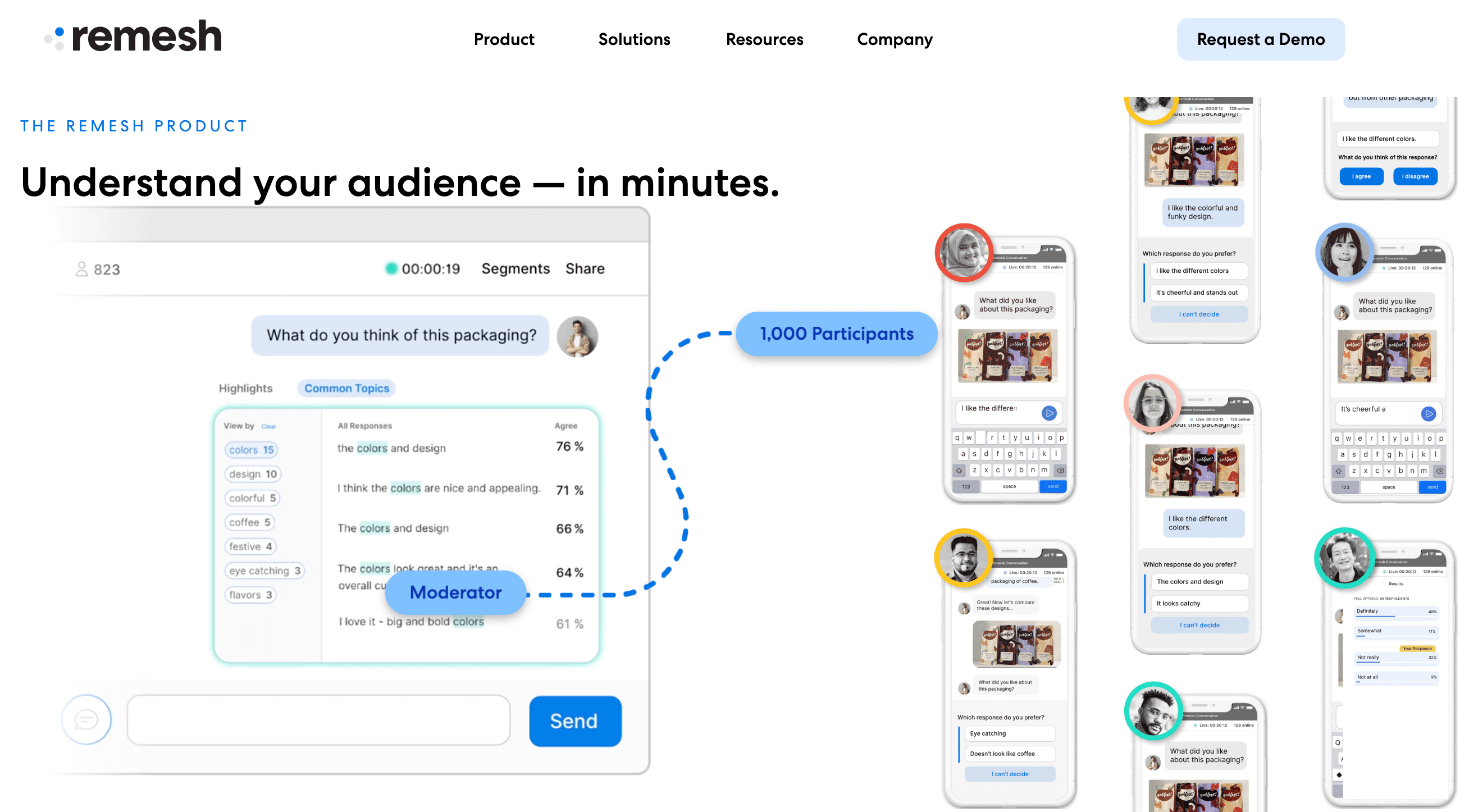
Remesh facilitates live, qualitative conversations with focus groups of up to 1000 people at a time. Replicating the focus group format online delivers powerful segmentation and dynamic capabilities that speed up your time to insight and let you hold a real-time conversation at scale.
- Launch a live conversation with up to 1000 people at a time
- Organize and analyze responses in an instant
- Segment your audience based on demographic and response data
- Share visuals and text-based content with the group to get instant feedback
- The algorithm analyzes open-ended responses in real-time
Freemium Version: No
Free Trial: Yes. However, you must first book a demo with a member of their team.
Ongoing Subscription: Remesh provides custom pricing plans that can only be obtained once you’ve taken a demonstration of their platform with a member of their team.
#13 Top collaboration and documentation tool for market research: BIT.AI
Most-loved feature: Content library + smart search
While it sounds quite basic; in essence, this tool for market research professionals makes it quicker and easier to keep track, share, and store key data. Forget trawling through emails, slack, and g-docs to find files; the smart search feature helps you locate files in an instant.

A dynamic platform that helps researchers collaborate, track, share, and manage research data in a single place. This is one of the best online market research tools for those who need a place to bring together resources like websites, PDFs, articles, images, infographics, blogs, reports, videos, etc. it’s low-cost and connects to some of the most widely used tools. Being able to share multidimensional data with others, or simply keeping track of secondary market research in a single place makes it a firm favorite.
- Over 100 integrations with applications like Tableau, Miro, G-docs, Onedrive, and more
- Real-time editing and live collaboration
- Content Library
- Smart search
- Supports a huge range of content and file types
Freemium Version: Yes. Available for teams of up to 5 collaborators.
Free Trial: Yes, a free trial is available here .
Ongoing Subscription: A range of packages are available, costing between $8-$20 monthly.
Best market research tools for startups
There is another often-forgotten set of tools used for market research that are ideal for startups. If you’ve got zero budget and a little time on your hands, you can do most types of desk research for free. Sources include:
- Company reports, case studies, and whitepapers
- Research and trade associations
- Media coverage
- Internal sales or usage reports
- Academic or scientific journals
- Government and non-government agencies
- Public library records
- Competitor websites
- Educational institutions
Helpful: Check out this article about how to do market research for a startup .
Wrapping up….
With cost and time key considerations for anyone looking at tools for market research, it’s vital to choose wisely. While free market research tools are all good and well, they won’t always serve you when you’re on a deadline or require key insights on a specific competitor, market, or product.
Similarweb helps companies win in the digital world. Whatever the market, goal, or business size, its solutions are designed to help organizations understand their market and compete and beat rivals.
Take it for a test run today. Trial any Similarweb solution free for the first 7-days using this link .
Need to know more about the ROI of Similarweb?
What are the best market research tools for secondary research?
The internet is probably the best tool for market research there is. It’s a goldmine of secondary market research data. But beware of data validity and check your information is coming from a trusted source.
What are the best market research tools for surveys?
Survey monkey is considered the best online market research tool for surveys, but key players like Typeform and Zoho follow closely behind. Budget and features usually determine the right tool for your needs.
What are the best free market research tools?
The best free tools for market research include: Answer the Public, Think with Google, Similarweb lite, SurveyMonkey’s basic plan, and Hootsuite’s free plan.
What are the best market research tools for qualitative research?
Qualitative research includes things like focus groups, open-ended surveys, case studies, and observation research. As such, the best tool for online research like this would be something like BIT.ai’s documentation and collaboration tool. Another useful tool for qualitative market research would be an online survey provider, like SurveyMonkey, Typeform, or Google Forms.
What are the best market research tools for quantitative research?
As this type of research is focused more on numbers, the best quantitative market research tools include things like Similarweb Digital Research Intelligence and Tableau. Each performs a different function but works together to collect, analyze, and present data in the most useful way possible.
Related Posts

What is a Niche Market? And How to Find the Right One

The Future of UK Finance: Top Trends to Watch in 2024

From AI to Buy: The Role of Artificial Intelligence in Retail

How to Conduct a Social Media Competitor Analysis: 5 Quick Steps

Industry Research: The Data-Backed Approach

How to Do a Competitive Analysis: A Complete Guide
Wondering what similarweb can do for you.
Here are two ways you can get started with Similarweb today!



Conduct High Quality Online Research: Process, Types, Tools, Tips & More
If there’s one constant in modern life it’s this: research. No matter the topic, it’s imperative that most of us conduct thorough research for a variety of purposes online.
We research products and options when we want to buy something. We research markets and competitors when we want to sell something. We research topics and exes when we want to know or learn something.
We do research on the internet for so many different reasons, it can be hard to think about “online research” as one task—but if you add it all up, many of us spend a lot of time doing research on the internet. So there’s some serious value in understanding how to do that research more thoroughly, accurately, and quickly.
In this article we will cover:
- PROCESS: The online research process
- METHODS: Research methods and strategies
- TYPES: Some of the most common types of research you can do online
- TIPS: 7 tips for better online research
- TOOLS: Research tools and companies to improve and expedite the research process
- RESOURCES: 35 great internet research resources
- DELEGATING: How you can delegate your research to a virtual assistant (VA)
The Online Research Process in 6 Steps
Broadly speaking, the typical online research project goes through 6 key steps. While you probably don’t tick off all these steps every time you research something online, following them can help ensure your research is complete, accurate, and useful.
Let’s talk about what those steps are and why each one is worthwhile for just about any online research you do.

1. Choose and define your topic of interest
This first step is where you’ll get specific about just what it is you’re looking for. What’s your end-goal? Why are you conducting this research? What are you hoping to learn or achieve?
For market research, this might be developing a full understanding of the competitors in the space and their positioning. For product research, you might be trying to arrive at the best option for you to buy.
The key is to make a comprehensive list of the research questions you want to answer and the individual items that interest you. This list will help inform where and how you do your research and ensure you don’t wind up with a bunch of information that doesn’t help or interest you.
2. Determine which fields of study you’ll need to look into
This step will help you define and narrow down the type of journals, databases, websites, etc. that you’ll look to for information.
For example, if you’re doing product research and you want to know how valuable existing customers find a given product, you may turn to prominent third-party review websites. If you’re doing medical research, you may look into the relevant medical journals for your topic.
3. See what research has been done and conclusions have been drawn
Step 3 is likely the part of the process you most often associate with “research.” Now’s the time to dig into your research sources, read up on the topic, and look to see how other people have answered the questions you laid out for your research.
The important part of this step is to stay organized and on-task. It’s easy to get lost in all the information, so it’s best to have a clear process and to keep your sources and learnings organized.
4. Evaluate your sources and information
In today’s digital world, this step is even more important than the rest. No matter the topic of your research, you need to take the time to understand and evaluate your sources . Who’s writing about the topic? Why are they interested or invested in it? Do they have anything to gain from what they’re saying?
This step is when you can identify any biases you or your sources have. Think of these biases as gaps in your research—and fill them in with opposing viewpoints and additional information.
5. Determine additional research data collection methods needed and conduct
Whether as a result of biases or something else, it’s not uncommon to find gaps in the research that’s already been done. When that happens, you may consider conducting your own primary research to help fill in those holes in your information.
For example, if you’re missing qualitative market research, you may choose to conduct an online focus group of consumers in that market. For medical research, filling in the gaps might mean conducting an extensive clinical trial. For research into your own customers, on the other hand, it might be as simple as sending out a brief online survey asking for feedback. You can also use online survey platforms to reach a broader base.
6. Organize your full body of research and draw conclusions
Once steps 1 through 5 are finished, you’re ready to start digging into your body of research and drawing your conclusions. This is where you’ll make a final decision on which product to buy or identify where in the market to position your own business, for example.
Online Research Methods & Strategies
When you think about “online research,” what sort of research method do you imagine? Many of us likely think about Googling and reading articles—and that is one method for doing research online. But it isn’t the only one—far from it.
Below are some of the other common online resources for research methods and strategies you can draw on during your research.
Content analysis and social media or social network analysis
Content analysis is the typical web search and read method of conducting research. In this case, you’re consuming secondary research that’s already been conducted and learning from that.
Focus groups
A focus group is when you bring together a group of people to take part in a guided discussion—often this discussion is about their experience with a particular product, brand, political campaign, ad, or TV series/movie. You might picture these happening in-person, but they can also be conducted online using video chat or conferencing software.
Interviews are similar to focus groups—you’re asking real people for very specific information. The difference is that interviews are more often done one-on-one versus in a group. Interviews can also follow a less conversational and more transactional question-answer approach.
Questionnaires and surveys
Questionnaires and surveys share the question-and-answer approach of an interview, but they aren’t typically done live or in real-time. Surveys can be emailed or mailed out to respondents or shared on social media. The respondent completes the questionnaire on their own time and returns it to the researcher when finished.
Web-based experiments
Web-based experiments follow a more regimented and traditional set of processes designed to yield scientifically significant results. There are three main types of experiments:
- Controlled experiments
- Natural experiments
- Field experiments
While the topic varies, many of these experiments can be adapted to take place online.
Clinical trials
Clinical trials are a type of experiment most often done in medical and psychological research. In a clinical trial, the experiment is designed to answer a very specific set of questions. The classic example of a clinical trial is a drug or pharmaceutical trial—designed to answer whether a particular drug affects a given disease or injury.
Online ethnography
In an ethnographic study, the researcher essentially lives among their research subjects and observes their behavior, social structures, and more. Ethnography is most commonly used in behavioral research like sociological and anthropological studies. Online ethnography simply refers to the method by which the researcher interacts with subjects—online.

Common Types of Online Research
Online research comes in all shapes and forms, but talking about “research” in the abstract can feel a little nebulous. To help you wrap your head around the kinds of online research we’re referring to for our purposes, here are some of the most common types of online research.
Basic Research
Basic research refers to broad studies and experiments done, not to answer a specific question or prove a hypothesis, but to create a foundation for additional studies or experiments.
For example, a study of how caffeine affects the brain would be considered basic research. Its results would increase general knowledge on the topic and likely inspire more specific experimentation.
Here’s another example of what basic research looks like—and how it can often blend into applied research:
- EXAMPLE: via Verywell Mind
- RESEARCH: To start, “researchers might conduct basic research on how stress levels impact students academically, emotionally, and socially.” That might involve content analysis of existing research on the topic, empirical research around students’ moods and performance, and interviews or surveys completed by the students themselves.
- FINDINGS: At the end of the basic research process, researchers have a better understanding of how stress impacts students—but they don’t know why stress has those effects or how to change or solve the effect.
- CONCLUSIONS: Because of that, “the results of these theoretical explorations might lead to further studies designed to solve specific problems. Researchers might initially observe that students with high stress levels are more prone to dropping out of college before graduating. As a result, scientists might then design research to determine what interventions might best lower these stress levels. Such studies would be examples of applied research.”
Quantitative Research
Quantitative research involves studying something using statistical or mathematical techniques and it’s used to understand how often a particular phenomenon occurs. The “quantitative” part of this type of research refers simply to numbers.
Here’s a common example of what quantitative research looks like in action:
- EXAMPLE: via QuestionPro
- RESEARCH: “If any organization would like to conduct a customer satisfaction (CSAT) survey, a customer satisfaction survey template can be used. Data can be collected by asking a net promoter score (NPS) question, matrix table questions, etc.”
- FINDINGS: The survey method above provides “data in the form of numbers that can be analyzed and worked upon.”
- CONCLUSIONS: “Through this survey, an organization can collect quantitative data and metrics on the goodwill of the brand or organization in the mind of the customer based on multiple parameters such as product quality, pricing, customer experience, etc.”
Qualitative Research
Qualitative research , on the flipside, focuses more on observations and non-numerical qualities. It’s used to answer questions about how and why phenomena occur, versus how often.
Here’s an example of what a typical qualitative research study looks like:
- RESEARCH: “A bookstore owner who is looking for ways to improve their sales and customer outreach. An online community of members who were loyal patrons of the bookstore were interviewed and related questions were asked and the questions were answered by them.”
- FINDINGS: “At the end of the interview, it was realized that most of the books in the stores were suitable for adults and there were not enough options for children or teenagers.”
- CONCLUSIONS: “By conducting this qualitative research the bookstore owner realized the shortcomings and the feelings of readers. Through this research now the bookstore owner can keep books for different age categories and can improve his sales and customer outreach.”
Market Research and Competitive Research
Market research and competitive research refer to gathering information about a particular industry and the companies currently doing business in it. It often involves mapping out the positioning of competing companies or products and is usually done by the companies in the market (or those hoping to be).
Here’s what a typical market research study looks like:
- EXAMPLE: A software company is looking to launch a new product into an unfamiliar market.
- RESEARCH: They conduct research to figure out the features their product will need, what price will be competitive, and where in the market there’s an opportunity to serve an underserved segment of consumers. Research includes basic informational research about competitors, their products, and pricing, content analysis of industry publications, and focus groups with potential customers.
- FINDINGS: The company finds that a small but dedicated segment of consumers in the market have a particular need that isn’t being met by any of the current competitors in the space.
- CONCLUSIONS: They design their product to solve that specific issue and create marketing and advertising campaigns targeted toward only that small niche market.
Customer Research
Customer research is when a business seeks to learn more about their customers (or their competitors’ customers). Often, customer and consumer research are included in the overall market research process we mentioned above.
Here’s what a typical customer research study looks like:
- EXAMPLE: via Hotjar
- RESEARCH: A software company wanted to learn more about what their customers needed from their software, and how they could build a better product and customer experience. They used on-page surveys on their website and some observational research to dig deeper into their customers.
- FINDINGS: Based on their research, the company created in-depth customer personas that exemplified their 3 most common customers, who they are, and what challenges they face.
- CONCLUSIONS: Based on what the company learned about challenges faced by one particular customer segment, they improved a particular feature of the product to improve that customer’s experience.
Other Common Types of Research
- Comparative research , done primarily in the social sciences, refers to studies that compare a given data set across different geographic locations or cultures. For example, a study may look at the differences in poverty between the U.S. and Canada.
- Medical research can make up a wide range of studies and experiments. The most obvious example is clinical drug trials, which are run to determine the efficacy and safety of new pharmaceuticals. But medical research can also involve observational studies to better understand new diseases and other basic research.
- Legal research most typically refers to two scenarios: 1) finding an answer to a particular legal question or decision that needs to be made and 2) looking for precedent to support a legal argument.
- Product research refers to research done by companies to better understand what their customers are looking for. It can be done during the ideation or new product development phase or to further improve an existing product.
- Empirical research data is collected by observation. In other words, it’s a record of someone’s experience, defined via the 5 senses. For example, an experiment done to figure out if listening to happy music improves subjects’ moods would be considered empirical research.
- Descriptive research is done with the intention of better understanding something. Customer and consumer research are often done in a descriptive way—describing customers and their attributes rather than trying to explain or quantify them.
- Experimental research refers to a more rigid research process than many other research types listed here. In experiential research, researchers follow the research method. They utilize strictly controlled experiments in which one variable is altered and the results either support or refute a specific hypothesis.
- Exploratory research is similar to basic research. It’s done with the goal of better understanding a given problem or phenomenon, and its findings typically inform further research to solve the problem.
Tips for Better, Faster Online Research
Whether you’re new to conducting research online or you’ve been doing it for years, there are always tips and tricks you can employ to streamline, strengthen, and refocus your research process. With that in mind, here are our top tips for conducting high-quality research online.
Know the Information You’re Looking For
With all of the information available on the internet, it’s really easy to get lost. Maybe you end up chasing down rabbit holes or trying to answer new questions every time they arise. Either way, you’re distracted from answering the original questions you set out to.
That’s why it’s so important to get clear about what those questions are, and hold yourself to researching those answers. This is what steps 1 and 2 in our online research process above are designed to help with.
Get Clear About Your Goal for Researching
While similar to the previous tip, defining your goal for research is more action-oriented. When you get answers to the questions outlined above, what will you do with them? All the questions you seek to answer with your online research should serve this overarching goal—helping you make a decision or choose your next course of action.
For example, your goal for travel research might be to choose and book a destination for your next family vacation. For competitive research, your goal may be to identify a niche audience to target within your industry.
Check the Abstract First
If you’re using scientific papers, medical studies, legal reviews, and other academic research, you know you’re in for some dense, lengthy reading. So before you commit to reading anything, check out the abstract first. If you don’t find anything compelling in the abstract, you can safely skip that paper.
Have a System and Stay Organized
As we mentioned before, the internet completely changes the stakes when it comes to research. There’s almost no limit to the amount of research you can do. That’s why it’s vital that you create a system for determining which information you’ll look at, plus how and where you’ll store it. Here are a few suggestions for staying organized:
- Create Google Drive folders to store PDFs and other documents
- Create a designated folder in your Bookmarks to store websites and URLs
- Use a reference management software (like Mendeley ) designed to help organize extensive research
- Delegate the organizing part to a virtual assistant (VA)
Get Started with a Virtual Assistant
Avoid analysis paralysis.
Online research can be incredibly valuable in helping you make informed decisions on a whole range of topics—but it is possible to take research too far, ending up with way more information than you can adequately process. Avoiding analysis paralysis is the only way to ensure your research makes your life easier, instead of the other way around.
Clearly outlining your goals and questions to answer is a good first step in avoiding analysis paralysis. The second part comes down to recognizing when you have enough information to make a decision. Once that happens, it’s usually time to set the research aside and act.
Evaluate Your Sources and Check Your Own Biases
In the time of #fakenews and corporation-funded scientific research, it’s more important than ever to evaluate your sources for online research. To start, just get in the habit of paying attention to who ran the study, wrote the paper, or created an article.
From there, you can look deeper into their objectivity (or lack thereof). Ask yourself whether the researcher has something to gain or lose from the information they’re sharing. Are they interpreting objective information through their own angle? Equally important: how current is the information presented?
In addition to evaluating the objectivity of your research sources, it’s even more important to identify and be aware of your own biases toward the subject matter.
Delegate Research to a Virtual Assistant
Whether you lack the time, expertise, or just desire to conduct thorough online research, there are many reasons to delegate your research to someone else. Online research, in particular, can easily be handled by a virtual assistant ( more on that later! )

Research Tools and Resources to Help with Your Online Research
When the time comes to dive into online research, most of us default to starting with an internet search on Google, followed by trying different search terms and combing through endless search result listings. That’s a fine place to start, but there are also tons of other reputable databases and search engines that can help you get straight to the most accurate and up-to-date research on just about any topic.
Below, we recommend 13 tools that can help you find reputable sources, organize your research, and even conduct your own primary research.
For General Research Articles
- Google Scholar and Google Books
- Library of Congress and LexisNexis
- Project Gutenberg
- Student’s Online Research Guide via AllConnect
- Yale University Research Guides by Subject
Academic Journals
- AcademicJournals.org
For Specialized Research
- Medical: BioMed Central , The Lancet , New England Journal of Medicine , NCBI (Nat’l Center for Biotechnology News)
- Legal: American Law Reports
- Business and industry: Nielsen and Pew Research Center
Online Research Management and Organization
Online research companies.
- 20|20 Research
- Facts ‘n Figures
Virtual Research Assistant Companies
Other great online resources for research.
If you’re looking for more info on various aspects of researching online, here are a few more top-notch resources you can reference.
- For psychological, sociological, and other behavior research: Psychology.org
- For business (market, competitive, and new product) research: QuestionPro
- For market research: Inc.
- To better understand online research and “big data:” Online Research Methods, Quantitative by Hocevar and Flanagin
- On conducting your own survey research: SurveyMonkey
- For legal, news, and public records: LexisNexis online library
Delegating Research to a Virtual Assistant
The advice and resources above are enough to turn anyone into a pro online researcher—but do you really have the time or desire to do your own research online? Regardless of how well done, effective internet research always requires one big investment: time . There’s no getting around the time investment it takes to conduct valuable online research.
Instead of investing that time out of your own busy schedule, you could outsource your online research efforts to a virtual assistant (VA). That way, you get the benefit of making informed decisions without spending days or even weeks wading through abstracts and research articles.
When you work with a Delegated virtual research assistant:
- You can hand-off basic research, competitor and market research, comparative research and more from day one
- You can work with your VA and train them to handle more specialized types of research like medical and legal
In both cases, as your VA gains experience working with you, they’ll get better and better at pulling together exactly the kind of research and insights you’re looking for. Some aspects of research they can tackle include:
- Pulling together research articles and data
- Research annotation and summaries
- Research management and organization
- Various aspects of conducting primary research
How does this work?
We know that delegating something as broad and nebulous as “research” can feel a little foreign if you haven’t outsourced it before. Most of the concerns we hear from people are very quickly quelled by the time savings that come with delegating their research.
That said, if you’re feeling unsure, here are a few of the questions we hear frequently:
How does all this work?
Your Delegated VA is available to you whenever you need them. They can pull together research articles and sources, organize and annotate them, present research summaries and conclusions, and help with many of the tasks involved with conducting your own primary research.
What kind of research can a Delegated VA handle?
Delegated VAs can handle these types of research right off the bat:
- Basic research
- Market research
- Competitive research
- Comparative research
- Data research
- Information research
That said, with a little guidance and training from you, our VAs can take over just about any kind of research you need done.
How will my VA know what information to look for?
Initially, your VA will base this judgment on the information you provide to them. Any information you ask for, they’ll pull together for you. For basic research, they’ll be able to handle most anything you need.
For more specialized research areas (like medical and legal research), your VA may need a little more help from you in the beginning. Rest assured, after a few projects, they’ll be able to handle just about everything you can throw at them.
Can my VA handle next steps after research is done?
If you provide your Delegated VA with the access and information they need to take the next step, they can do that—whether that’s booking a trip based on travel research, purchasing their recommended product, or something else entirely.
How will my VA communicate with me?
Your Delegated VA will communicate with you any way you prefer. If you choose to communicate via Slack, email, phone, or morse code, your VA will work with your preferences to streamline communication.

Wrapping Up
Whether it’s product research, medical research, or something else entirely, conducting thorough and accurate research online takes time—and going without isn’t a great option either.
If you don’t have the time, desire, or expertise to perform your own internet research, you can easily turn the keys over to a virtual assistant. With a little guidance, they can handle a lot more than you may think.
Then, you can spend less time Googling around and more time acting on your research findings.
Glossary of Online Research Terms to Know
Research problem and research question: The central question your research sets out to answer, or the central problem your research sets out to solve.
Correlation: A connection or relationship between two variables.
Causation: A connection or relationship between two variables where a change in one variable creates a change in the other.
Findings: The results and conclusions of your research.
Scientific method: An empirical, step-by-step method whereby hypotheses are formed and experiments/observations either affirm or disprove the hypothesis.
Sampling method: A method for collecting data from a small sample of a given population.
Research methodology: The specific techniques and procedures you use to identify and analyze information about your topic.
Control group: A group within an experiment to which no changes are made in the variable being studied. Control groups are used for comparison to better identify how changes in a variable affect the other group.
Experimental group: The group within an experiment which is changed or manipulated.
Primary research: Data collected directly by you, the researcher.
Secondary research: Data previously collected by other researchers.
Hypothesis: An educated guess or theory about how an experiment will turn out.
Abstract: A brief summary of the contents of a research paper or study.
Bias: Assumptions made without credible evidence, often that skew the ultimate outcome of a study. Bias can be caused by beliefs held by the researcher or by errors in sampling or data analysis.

Kiera's a content writer who works with SaaS and ecommerce companies. Located in Boston, MA, she loves cinnamon coffee and a good baseball game. Catch up with her @Kieraabbamonte or KieraAbbamonte.com.
Start growing your business and reducing overhead with Delegated
1. meet your assistant , 2. create a workflow , 3. start delegating , other resources.

Guide to Time Management Skills

Guide to Email Management

Guide to Scheduling Like a Pro
Loved by top companies and entrepreneurs.

Specialized Tasks

Research Our Records

Online Research Tools and Aids
Find records and information about records.
Our website contains answers to many of the preliminary research-related questions you might have.
- To find copies of Federal records on our website and/or information about the records and their historical context, you will have to look in several places.
- Some sources listed below are databases while others are online guides, publications, and exhibits.
Ways to Search Online
National archives catalog.
Our National Archives Catalog is the online portal to our records and information about our records. It provides access to data, digitized records, selected series from Access to Archival Databases (AAD), over one million electronic records from the Electronic Records Archives (ERA), all of the web pages from Archives.gov, and all of the web pages from the Presidential Libraries. Go to the National Archives Catalog
History Hub
Get help with your research and find answers to your questions at History Hub, a crowdsourcing platform sponsored by the National Archives. Experts from the National Archives as well as other experts, history enthusiasts, and citizen archivists are available to help with your research. Go to History Hub
Microfilm Catalog
This is a searchable database of more than 3,400 numbered microfilm. The described microfilm include those created by or purchased by NARA for researcher use. Determine which rolls of microfilm may be the most relevant for your research at NARA. You can search for microfilm by keyword, microfilm number, Record Group number, and/or location of our nationwide research facilities. Researchers at our research facilities may use this material for free. Go to the Microfilm Catalog
Access to Archival Databases (AAD)
AAD is a search engine into some of NARA's holdings of electronic records. There are databases and indexes from more than 30 archival series, including over 350 data files totaling well over 50 million unique records; this number will continue to grow. Search by person, geographic areas, organizations, or dates. Go to AAD
Archives Library Information Center (ALIC)
ALIC, part of the National Archives, provides sources for research about American history and government, archival administration, information management, and government documents to archives and records management professionals, the general public, and National Archives staff. Search their online catalog for holdings of the Archives libraries in Washington, DC and College Park, MD. Go to ALIC
Additionally, ALIC's Reference at Your Desk feature provides quick access to online resources on many diverse subjects.
Guide to Federal Records
Search NARA's holdings of federal records at a very high level, to identify which record groups may have material relevant to your research topics. This includes records that originated in the executive, judicial, and legislative branches. Go to the Guide to Federal Records
Finding Aids
Reference Reports
Filing Manuals
Filing manuals outline the filing classification systems used by staff in the Army, Navy, Coast Guard, and various departments and agencies of the federal government.
NARA Publications
Published research guides, articles, and papers These include guides, articles, reference papers, inventories, and more, all designed to help prepare you for your research at NARA.
New Accessions and Openings
View our latest Accessions and Openings for all our locations.
Search by Topic
Research Topics For many topics, we have included related articles, finding aids, and search tips. Links to online information about selected topics in National Archives records.
Search by Federal Government Agency
Look for the Federal Government organization that created the records you are interested in.
Search by Media Type or Format
Search for records based on media-type or format of the records (such as paper documents, photographs, motion picture film or video, audio recordings, maps and drawings, aerial film, microfilm, databases and electronic records)
If you need to see records that are not available on our website or other websites, you may need to contact us , visit us , or hire an independent researcher to continue your research. Decide if You Should Visit Us in Person and Plan Your Visit
What are people asking on History Hub?

- RE: Location of the DoD archive Hi-Res image of "Fritz Kuhn leading a Nazi Rally at Madison Square Gardens" in 1939 (ARC Identifier 36068)?
- RE: Woman and Jaguar Leave for South America
- RE: How do I find my Basic training picture from 1979 fort Benning Georgia
- Looking for dates of imprisonment and name of Camp for POW
- RE: HI! I am looking for information on the birth of Rosa Santini born in Brooklyn in 1904 to Vincenza Santini and Filippo Napodano. Thanks so much to anyone who wanted to help me!
Find answers to your research questions at History Hub

Top 13 Tools for Researchers in 2024!
Gone are the days of going to the library, studying numerous books, taking notes on paper, and doing research. Thanks to technology, we no longer have to do this tedious routine to do research. However, research is still a meticulous, painstaking process.
This is why we decided to uncover some of the best software tools for researchers that are going to help you conduct and maintain your research with ease. Read on…
List of Top 13 Best Tools for Researchers for better results:
Research today is dynamic. We often use the internet to browse websites, watch videos, study analytics, and conduct our research by exploring different types of digital content, making technology a major stakeholder in making our research success .
While the internet has made it easy for us to access worldly information with the click of a button (or mouse!), it has created a whole new set of problems.
Sorting through a seemingly infinite number of websites, verifying content, and curating only the best stuff can take a lot of time and effort. This is why we have brought you 13 essential research tools every researcher should use while working on the internet.
1. Bit.ai

Online research means going through numerous websites, articles, blogs, images, videos, infographics, and more to find what you are looking for.
For our dynamic, interactive, and media-rich research, we need a tool that incorporates all facets of modern-day research under one roof. Simple text editors of the past just won’t cut it anymore! This is where Bit comes in.
Bit allows researchers and teams to collaborate, share, track, and manage all knowledge and research in one place.
It’s the perfect research tool to share multi-dimensional research with your peers and not just plain, boring text and slides.
Add articles, PDFs, videos, white papers, ebooks, audio samples- basically anything you can think of – and share it with your peers easily!
Other notable features of Bit include:
- An easy-to-use, minimal editor that supports Markdown.
- Collaborative, real-time editing, and communication with peers.
- Add any type of digital content (images, videos, etc) to your Bit document.
- A content library to save all your media files for quick access.
- Smart search, allows anyone to search and find any files, images, documents, links, etc quickly.
All-in-all, Bit is a must-have writing tool for researchers and authors!

Key Features of Bit:
- Workspaces to store different research content easily
- Content library to store media assets
- Real-time collaboration with fellow researchers
- Free with limited functionality
- Paid plans start from Pro ($8/month), Business ($15/month), Enterprise (contact sales)
Read more: How Bit.ai Can Help You Manage Your Academic Research?
2. elink.io
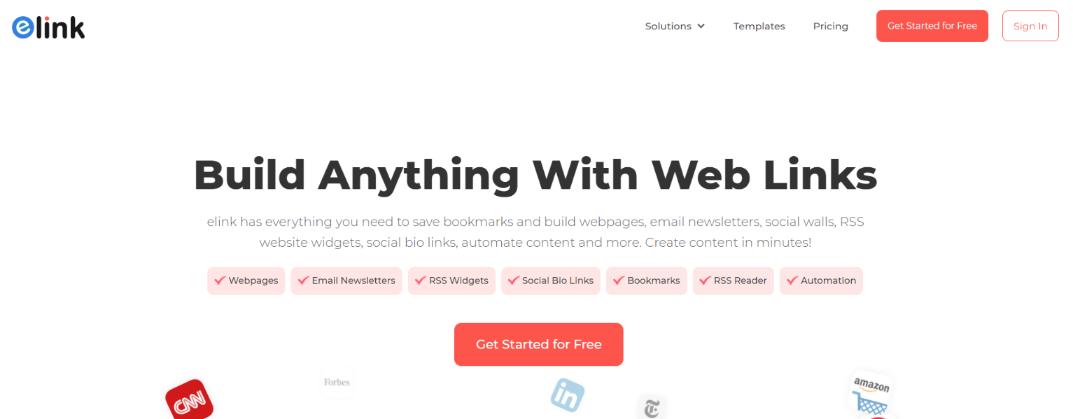
Research often involves going through hundreds of links and articles and compiling them in one safe space for future reference or publishing them for your audience.
This is why many researchers use bookmarking and curation tools like elink to quickly save their links under one roof and share them with their peers.
elink makes it easy for researchers to save content from around the web. They can save article links, videos, cloud files, social media posts, and much more!
Researchers have the option of saving content to their link library or adding them directly to content collections and sharing their research with their peers . To make the bookmarking process a breeze, elink also has a chrome extension .
Simply click on the extension or right-click on any webpage to save the content directly to your elink dashboard.
Researchers can edit the title and description to add their own voices or notes. They can even bundle links together and share their link collection with others as a newsletter or embed the collection on your blog/website!
Key Features of elink:
- Save links quickly using the chrome extension
- Create and share research links as a newsletter or embed it on your website
- Easy user-interface
- Paid plans start at Pro Monthly ($15/month), Pro 1 Year ($12/month), and Pro 2 years ($10/month).
3. GanttPRO
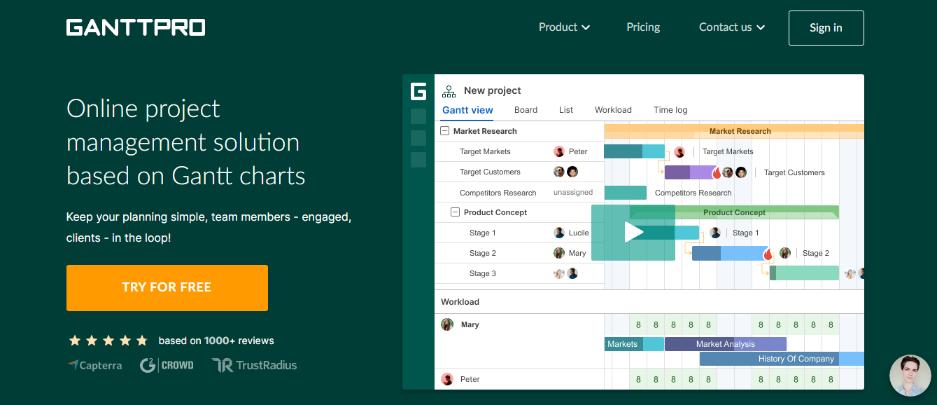
No matter what kind of research you do, you need to organize, plan, and stay focused on all of your activities.
Without a robust planning tool, researchers may fall behind the schedule and lose their progress.
GanttPRO project and task management tool makes it easy for single researchers and groups of any size to plan their tasks on a visually appealing Gantt chart timeline, follow their progress, and all the deadlines.
GanttPRO allows researchers to create a limitless number of tasks, groups of tasks, and subtasks on one timeline.
Besides, it’s a perfect planning tool for assigning tasks to your fellow researchers or creating virtual resources, whoever or whatever they may be. The software is a good choice for collaboration, time tracking, as well as sharing and exporting your schedules.
Key Features of GanttPRO:
- Dozens of ready-made templates.
- Real-time collaboration with fellow researchers.
- Elegant user interface with a short learning curve.
- Free 14-day trial with all features available.
- Paid plans start from Team ($4.5/user/month), Individual ($15/month), Enterprise (contact sales).
4. Grammarly
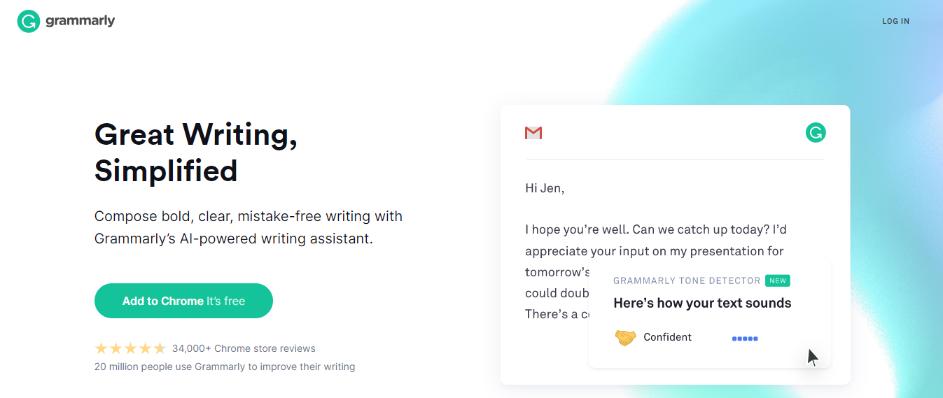
Research work often involves hours of proofreading and spellchecking to make your research professional .
Grammarly, a writing enhancement tool will save you a ton of time and effort doing this dreaded task! Apart from basic spellchecking and corrections, Grammarly includes a grammar checker, a punctuation checker, a vocabulary enhancer, and even a plagiarism checker tool!
This awesome tool scans your research for more than 250 types of grammar mistakes in six distinct writing genres and leaves you with error-free writing. With thorough explanations for all your errors and weekly progress reports .
Grammarly is a must-have tool for researchers. It’s available as a browser extension, a desktop app, a web-based app, and a Microsoft add-in. Many of the Grammarly alternatives are also available in the market that is equally good.
Key Features of Grammarly:
- Works with the majority of online tools like Word, Slack, etc.
- Plagiarism checker tool
- Tone detector
- Paid plans start from: Premium ($11.66/month), Business ($12.50/month)
Read more: 10 Best Writing Apps To Make You A Better Writer!
5. Typeset.io

With over 100,000+ verified journal formats to choose from, Typeform makes the process of research a bit too easy! Quickly copy-paste or upload your paper on Typeset and follow any citation style you need.
Typeset also has a plagiarism and grammar checker built in to ensure your writing is error-free. Once done uploading and citing, click on autoformat to generate your report in seconds.
You can also download your research in PDF , Docx, LaTeX file, or even as a Zip file. With collaboration features built-in, you can invite your fellow researchers to the platform and work together.
Key Features of Typeset:
- Over 100,000+ journal formats to choose from
- Plagiarism and grammar checker tool
- Editing services to improve your publication chances
- Paid plans start from: Researcher ($8/month), Team($6/month), Journals / Publishers (contact sales)
6. Scrivener

Scrivener is another great tool for research writing and keeping your notes organized.
Used by researchers, screenwriters, novelists, non-fiction writers, students, journalists, academics, lawyers, translators, and more, Scrivener is a tool made for long writing projects.
On signing up, you are quickly presented with its editor, with a sidebar to keep everything in place. You can also break your content into manageable sections of any size and leave Scrivener to join them together.
For novelists and storytellers, there’s also a corkboard to visualize your storyline and move cards around as you like.
The outliner keeps a synopsis of what you have already written, along with word count data and metadata. Users can arrange their research articles and other files in folders and subfolders.
Key Features of Scrivener:
- Desktop and mobile apps
- Outline creator
- Easy organization
- Paid plans start from $40.84/one-time fee
7. ProofHub
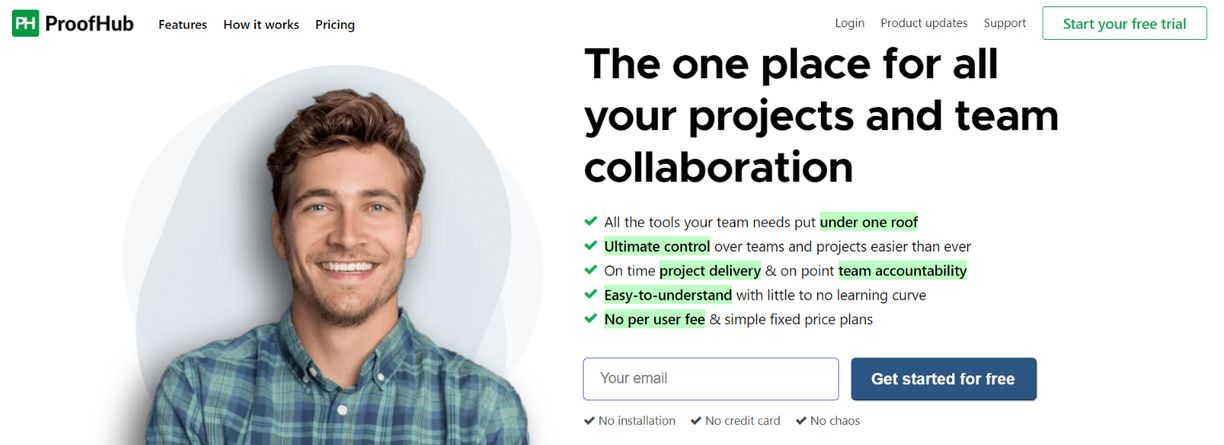
You must organize, prepare, and stay focused on all of your efforts, regardless of the type of research you conduct.
Researchers may go behind schedule and lose progress if they don’t have a good task management tool. ProofHub is an all-in-one project and team management application that allows research teams and organizations of any size to efficiently plan their research projects in one spot.
ProofHub allows you to create, assign and track tasks using effective task management features like Kanban boards and table view. Researchers can also get a visual idea of how their project is progressing using robust Gantt charts.
ProofHub also allows you to store and jot down all the data or information collected through your research in Notes. You can even create different notebooks and store your information according to the topic. Not just that, you can even share your research work with your team members.
Teams can also share and store files, documents, and images in ProofHub’s files section. Managers can track their team’s time spent on a specific research task using automatic and manual timers.
Team members can also brainstorm ideas or have real-time discussions in ProofHub’s discussions section and make way for better research work.
Key features of ProofHub:
- Ready to use project templates
- Task management
- Time tracking and project reporting
- Team collaboration (chat, notes, and discussions)
- File management
- Online proofing
- 14-day free trial with all the features.
8. Google Scholar

Next up is an amazing research tool by Google called Google Scholar. Google Scholar provides a quick way to broadly search for scholarly literature from one location.
Look for articles, theses, books, abstracts, and court opinions, from professional societies, online repositories, universities, academic publishers, and other websites.
Researchers can also explore related works, citations, authors, and publications easily. Create a public author profile and see who’s citing your recent publication. Google Scholar also allows its users to keep up with recent developments in any area of research.
Key Features of Google Scholar:
- Create a public author page
- Look for information across Google’s database
- Easy to use
- Free to use
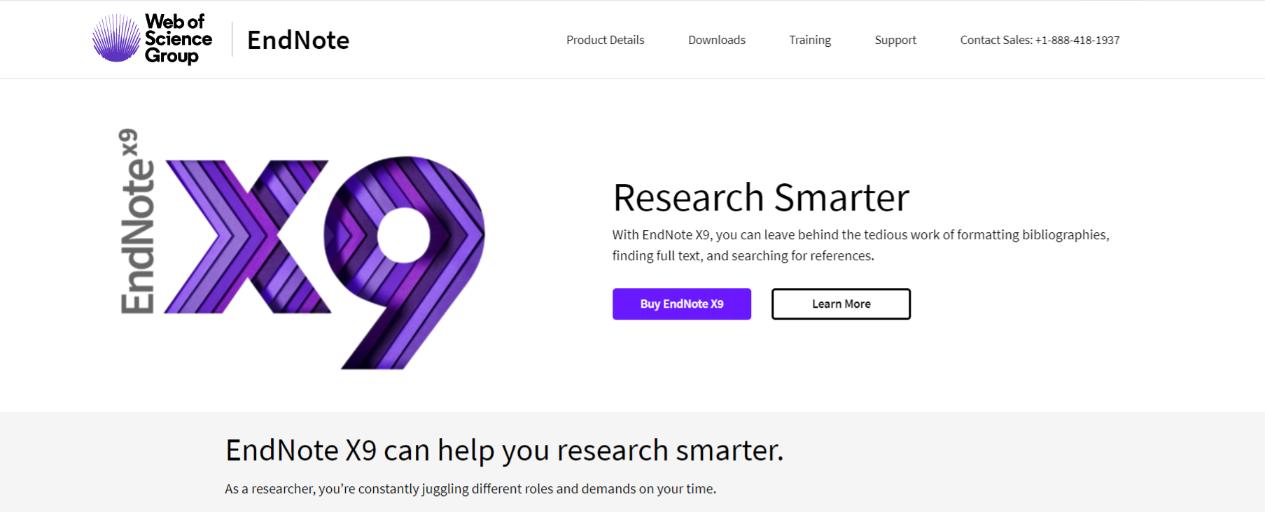
Endnote wants you to research smarter by simplifying the tiresome work of formatting bibliographies, finding full text, and searching for references.
Endnote is collaborative in nature as it allows you to share selected groups of references, manage team access, and track activity and changes from one single dashboard.
With smarter insights, Endnote automatically finds the impact of your references and finds the best-fit journal for your papers.
The platform also enables users to automatically create, format, and update bibliographies. Quickly export your references and full-text PDFs into EndNote and start working instantly.
With a bunch of EndNote templates and plug-ins, researchers can enhance their Endnote experience and get the most out of the platform.
Key Features of Endnote:
- Import filters for prior research
- Track your teammates’ activity on your shared library
- Automatic reference and link updating
- Paid plans start from $249
10. Evernote
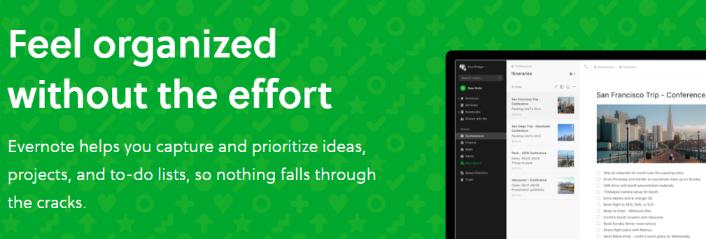
Evernote is a note-taking app that can be very useful while conducting research . The app helps you store all your personal ideas, to-do listsm4, notes, and research links in one place.
Create separate tags and folders for the different types of information you are saving and keep it all organized.
Evernote auto-syncs across all your devices, including desktop, smartphone, and tablet, so you can switch between devices without losing your data.
Its Chrome browser extension called the Evernote web clipper is a great add-on for saving articles or other content on the internet while doing your research.
Just click the browser extension to save the entire page or highlights to your Evernote notebook along with any notes you have about that page.
Key Features of Evernote:
- Keep notes, articles, and other content in one place
- Chrome extension for clipping content
- Set reminders
- Paid plans start from Plus ($34.99 per year or $3.99 per month), Premium ($69.99 per year or $7.99 per month), and Evernote Business (contact sales)
11. Mendeley

Mendeley is a reference management software that allows researchers to create references, citations, and bibliographies in multiple journal styles with just a few clicks.
Quickly access your library from anywhere – from anywhere. Windows, Mac, Linux, etc and add papers directly from your browser with a few clicks or import any documents from your desktop to your library.
With its research network, researchers connect and network with over 6 million users. Users can create groups to carry out discussions, discover research, and follow curated bibliographies.
There are also over 250,000 + science, technology, and health jobs to advance your career and grant info from over 5000 organizations to fund your next research !
Key Features of Mendeley:
- Annotate and organize documents
- Find and create groups with fellow researchers
- Grant information from over 5000 organizations
- Paid plans start from $55/year for 5 GB to $165/year to unlimited storage
12. ContentMine
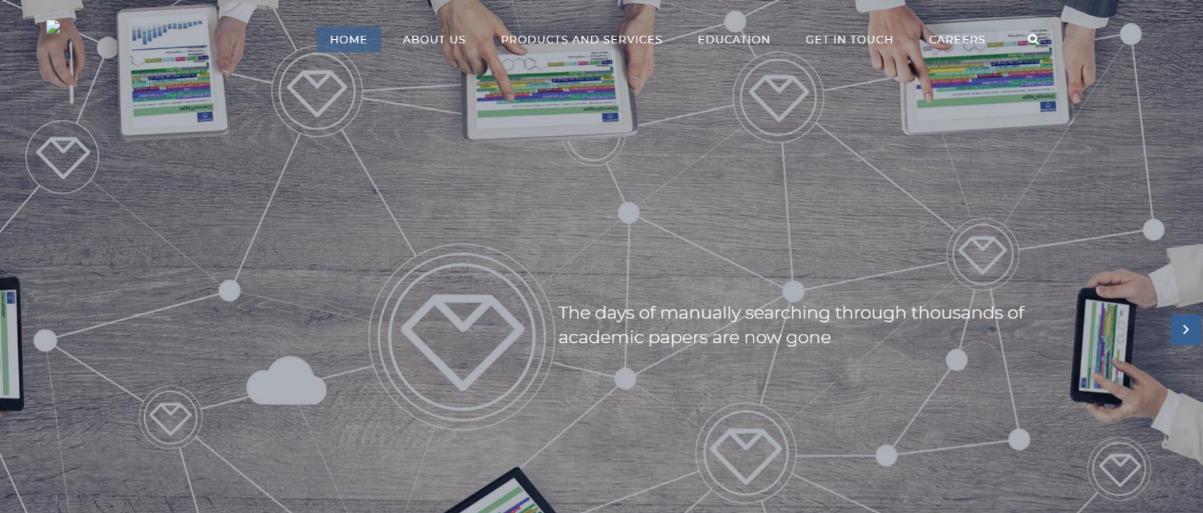
ContentMine offers a variety of text mining services to help researchers find, download, analyze, and extract knowledge from academic papers.
ContentMine builds its own open-source code to help out researchers find papers and not waste time on the internet doing so. They can also convert academic papers , PDFs to HTML, or to almost any format.
ContentMine can also extract data from tables and graphs, reducing the time taken to conduct a meta-analysis. The platform also offers consultancy as well as training workshops to educate people on the work they do and how.
Key Features of ContentMine:
- Extract data from tables and graphs
- Quickly mine text from hundreds of papers
- Workshops and training
- Contact sales
13. ResearchGate

The last tool on our list of awesome tools for researchers is a platform called ResearchGate. ResearchGate gives you access to over 135 million publication pages, allowing you to stay up to date with what’s happening in your field.
With a built-in community, researchers can share their research, collaborate with peers, and discover new papers and bibliographies.
ResearchGate also provides deep analytics on who’s been reading your work and keeps track of your citations. With over 17 million users, ResearchGate is a research community to join!
Key Features of ResearchGate:
- Share and find researchers
- Analytics to see who’s reading your work
- Citation tracking
Before you go!
Our team at bit.ai has created a few awesome templates to make your research process more efficient. Make sure to check them out before you go, y our team might need them!
- Case Study Template
- Research Paper Template
- Competitor Research Template
- Brainstorming Template
- SWOT Analysis Template
- White Paper Template
Final Words
There you have it folks, our list of amazing websites, apps, and software to use while conducting your research. Research is hard work- from finding and managing content to organizing and publishing- research takes a lot of time and effort.
However, with our awesome list of tools, researchers are surely going to get out the most of their time and effort and get work done more efficiently. Did we miss any awesome tool for researchers out there? Let us know by tweeting us at @bit_docs.

Further reads:
- Top 11 Code Editors for Software Developers
- Collaborative Research: Definition, Benefits & Tips!
- Best Resource Management Tools and Software
- How to Write a Research Proposal?

11 Best Link in Bio Tools in 2024!
Writing Vision Statement: Definition, Examples and Best Practices!
Related posts
11 best video conferencing tools & software for teams, top 9 writing checkers every writer should use, leave of absence letter: what is it & how to write it, what is pair programming & how does it work, action plan: definition, importance & how to steps, why workplace collaboration is more important than ever.

About Bit.ai
Bit.ai is the essential next-gen workplace and document collaboration platform. that helps teams share knowledge by connecting any type of digital content. With this intuitive, cloud-based solution, anyone can work visually and collaborate in real-time while creating internal notes, team projects, knowledge bases, client-facing content, and more.
The smartest online Google Docs and Word alternative, Bit.ai is used in over 100 countries by professionals everywhere, from IT teams creating internal documentation and knowledge bases, to sales and marketing teams sharing client materials and client portals.
👉👉Click Here to Check out Bit.ai.
Recent Posts
15 employee management software for 2024: a quick guide, document management workflow: what is it & how to create it, 10 best free small business software & tools in 2024, best 13 document management systems of 2024 (free & paid), internal knowledge base – a quick guide by bit.ai, developer experience(dx): importance, metrics, and best practices.
We're sorry, but some features of Research Randomizer require JavaScript. If you cannot enable JavaScript, we suggest you use an alternative random number generator such as the one available at Random.org .
RESEARCH RANDOMIZER
Random sampling and random assignment made easy.
Research Randomizer is a free resource for researchers and students in need of a quick way to generate random numbers or assign participants to experimental conditions. This site can be used for a variety of purposes, including psychology experiments, medical trials, and survey research.
GENERATE NUMBERS
In some cases, you may wish to generate more than one set of numbers at a time (e.g., when randomly assigning people to experimental conditions in a "blocked" research design). If you wish to generate multiple sets of random numbers, simply enter the number of sets you want, and Research Randomizer will display all sets in the results.
Specify how many numbers you want Research Randomizer to generate in each set. For example, a request for 5 numbers might yield the following set of random numbers: 2, 17, 23, 42, 50.
Specify the lowest and highest value of the numbers you want to generate. For example, a range of 1 up to 50 would only generate random numbers between 1 and 50 (e.g., 2, 17, 23, 42, 50). Enter the lowest number you want in the "From" field and the highest number you want in the "To" field.
Selecting "Yes" means that any particular number will appear only once in a given set (e.g., 2, 17, 23, 42, 50). Selecting "No" means that numbers may repeat within a given set (e.g., 2, 17, 17, 42, 50). Please note: Numbers will remain unique only within a single set, not across multiple sets. If you request multiple sets, any particular number in Set 1 may still show up again in Set 2.
Sorting your numbers can be helpful if you are performing random sampling, but it is not desirable if you are performing random assignment. To learn more about the difference between random sampling and random assignment, please see the Research Randomizer Quick Tutorial.
Place Markers let you know where in the sequence a particular random number falls (by marking it with a small number immediately to the left). Examples: With Place Markers Off, your results will look something like this: Set #1: 2, 17, 23, 42, 50 Set #2: 5, 3, 42, 18, 20 This is the default layout Research Randomizer uses. With Place Markers Within, your results will look something like this: Set #1: p1=2, p2=17, p3=23, p4=42, p5=50 Set #2: p1=5, p2=3, p3=42, p4=18, p5=20 This layout allows you to know instantly that the number 23 is the third number in Set #1, whereas the number 18 is the fourth number in Set #2. Notice that with this option, the Place Markers begin again at p1 in each set. With Place Markers Across, your results will look something like this: Set #1: p1=2, p2=17, p3=23, p4=42, p5=50 Set #2: p6=5, p7=3, p8=42, p9=18, p10=20 This layout allows you to know that 23 is the third number in the sequence, and 18 is the ninth number over both sets. As discussed in the Quick Tutorial, this option is especially helpful for doing random assignment by blocks.
Please note: By using this service, you agree to abide by the SPN User Policy and to hold Research Randomizer and its staff harmless in the event that you experience a problem with the program or its results. Although every effort has been made to develop a useful means of generating random numbers, Research Randomizer and its staff do not guarantee the quality or randomness of numbers generated. Any use to which these numbers are put remains the sole responsibility of the user who generated them.
Note: By using Research Randomizer, you agree to its Terms of Service .
Artificial Intelligence (Generative) Resources
Ai research tools, additional ai tools.
- How to Craft Prompts
- Research Resources on AI
- Latest News on AI
- Ethics & AI
- Citing Generative AI
- AI, Authorship, & Copyright
- Campus Resources and Policies
About This Table
The resources described in the table represent an incomplete list of tools specifically geared towards exploring and synthesizing research. As generative AI becomes more integrated in online search tools , even the very early stages of research and topic development could incorporate AI. If you have any questions about using these tools for your research, please Email a Librarian .
AI tools for research can help you to discover new sources for your literature review or research assignment. These tools will synthesize information from large databases of scholarly output with the aim of finding the most relevant articles and saving researchers' time. As with our research databases or any other search tool, however, it's important not to rely on one tool for all of your research, as you will risk missing important information on your topic of interest.
Georgetown University's Center for New Designs in Learning and Scholarship (CNDLS) offers a list of additional AI tools with a range of different purposes including visual design, writing, time management, and more.
- << Previous: Home
- Next: How to Craft Prompts >>
- Last Updated: Apr 22, 2024 2:36 PM
- URL: https://guides.library.georgetown.edu/ai
Numbers, Facts and Trends Shaping Your World
Read our research on:
Full Topic List
Regions & Countries
- Publications
- Our Methods
- Short Reads
- Tools & Resources
Read Our Research On:
What we know about online learning and the homework gap amid the pandemic

America’s K-12 students are returning to classrooms this fall after 18 months of virtual learning at home during the COVID-19 pandemic. Some students who lacked the home internet connectivity needed to finish schoolwork during this time – an experience often called the “ homework gap ” – may continue to feel the effects this school year.
Here is what Pew Research Center surveys found about the students most likely to be affected by the homework gap and their experiences learning from home.
Children across the United States are returning to physical classrooms this fall after 18 months at home, raising questions about how digital disparities at home will affect the existing homework gap between certain groups of students.
Methodology for each Pew Research Center poll can be found at the links in the post.
With the exception of the 2018 survey, everyone who took part in the surveys is a member of the Center’s American Trends Panel (ATP), an online survey panel that is recruited through national, random sampling of residential addresses. This way nearly all U.S. adults have a chance of selection. The survey is weighted to be representative of the U.S. adult population by gender, race, ethnicity, partisan affiliation, education and other categories. Read more about the ATP’s methodology .
The 2018 data on U.S. teens comes from a Center poll of 743 U.S. teens ages 13 to 17 conducted March 7 to April 10, 2018, using the NORC AmeriSpeak panel. AmeriSpeak is a nationally representative, probability-based panel of the U.S. household population. Randomly selected U.S. households are sampled with a known, nonzero probability of selection from the NORC National Frame, and then contacted by U.S. mail, telephone or face-to-face interviewers. Read more details about the NORC AmeriSpeak panel methodology .
Around nine-in-ten U.S. parents with K-12 children at home (93%) said their children have had some online instruction since the coronavirus outbreak began in February 2020, and 30% of these parents said it has been very or somewhat difficult for them to help their children use technology or the internet as an educational tool, according to an April 2021 Pew Research Center survey .
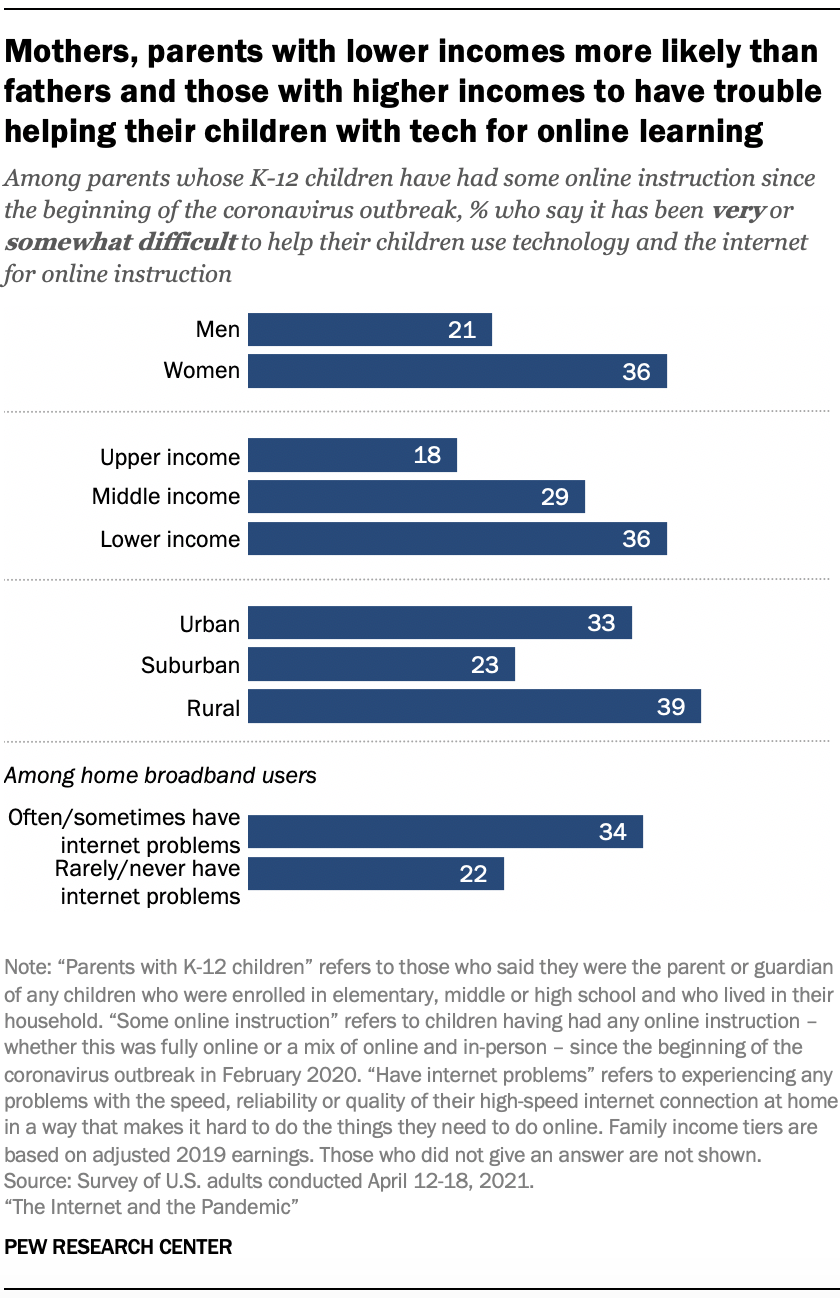
Gaps existed for certain groups of parents. For example, parents with lower and middle incomes (36% and 29%, respectively) were more likely to report that this was very or somewhat difficult, compared with just 18% of parents with higher incomes.
This challenge was also prevalent for parents in certain types of communities – 39% of rural residents and 33% of urban residents said they have had at least some difficulty, compared with 23% of suburban residents.
Around a third of parents with children whose schools were closed during the pandemic (34%) said that their child encountered at least one technology-related obstacle to completing their schoolwork during that time. In the April 2021 survey, the Center asked parents of K-12 children whose schools had closed at some point about whether their children had faced three technology-related obstacles. Around a quarter of parents (27%) said their children had to do schoolwork on a cellphone, 16% said their child was unable to complete schoolwork because of a lack of computer access at home, and another 14% said their child had to use public Wi-Fi to finish schoolwork because there was no reliable connection at home.
Parents with lower incomes whose children’s schools closed amid COVID-19 were more likely to say their children faced technology-related obstacles while learning from home. Nearly half of these parents (46%) said their child faced at least one of the three obstacles to learning asked about in the survey, compared with 31% of parents with midrange incomes and 18% of parents with higher incomes.
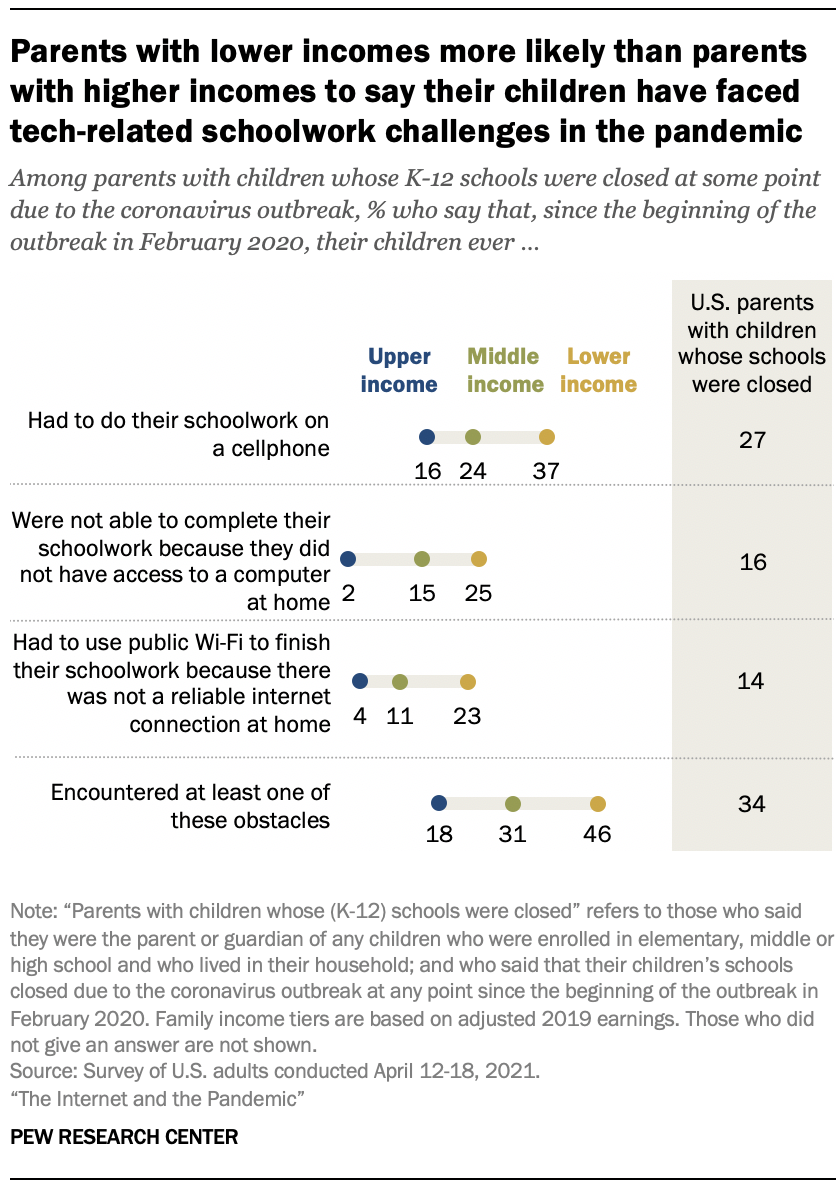
Of the three obstacles asked about in the survey, parents with lower incomes were most likely to say that their child had to do their schoolwork on a cellphone (37%). About a quarter said their child was unable to complete their schoolwork because they did not have computer access at home (25%), or that they had to use public Wi-Fi because they did not have a reliable internet connection at home (23%).
A Center survey conducted in April 2020 found that, at that time, 59% of parents with lower incomes who had children engaged in remote learning said their children would likely face at least one of the obstacles asked about in the 2021 survey.
A year into the outbreak, an increasing share of U.S. adults said that K-12 schools have a responsibility to provide all students with laptop or tablet computers in order to help them complete their schoolwork at home during the pandemic. About half of all adults (49%) said this in the spring 2021 survey, up 12 percentage points from a year earlier. An additional 37% of adults said that schools should provide these resources only to students whose families cannot afford them, and just 13% said schools do not have this responsibility.
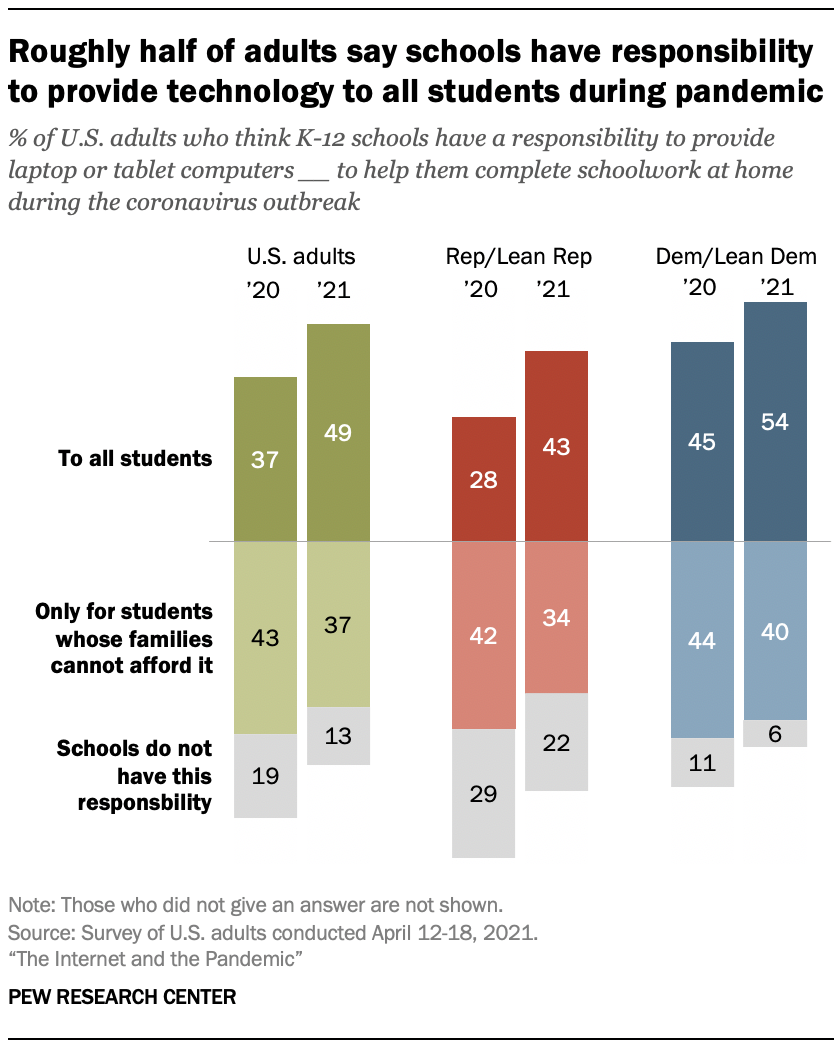
While larger shares of both political parties in April 2021 said K-12 schools have a responsibility to provide computers to all students in order to help them complete schoolwork at home, there was a 15-point change among Republicans: 43% of Republicans and those who lean to the Republican Party said K-12 schools have this responsibility, compared with 28% last April. In the 2021 survey, 22% of Republicans also said schools do not have this responsibility at all, compared with 6% of Democrats and Democratic leaners.
Even before the pandemic, Black teens and those living in lower-income households were more likely than other groups to report trouble completing homework assignments because they did not have reliable technology access. Nearly one-in-five teens ages 13 to 17 (17%) said they are often or sometimes unable to complete homework assignments because they do not have reliable access to a computer or internet connection, a 2018 Center survey of U.S. teens found.
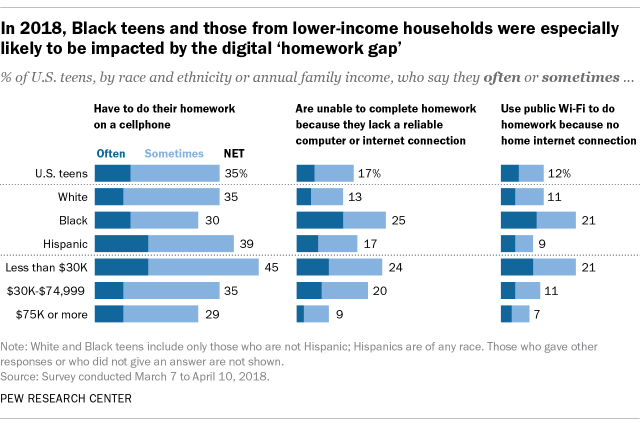
One-quarter of Black teens said they were at least sometimes unable to complete their homework due to a lack of digital access, including 13% who said this happened to them often. Just 4% of White teens and 6% of Hispanic teens said this often happened to them. (There were not enough Asian respondents in the survey sample to be broken out into a separate analysis.)
A wide gap also existed by income level: 24% of teens whose annual family income was less than $30,000 said the lack of a dependable computer or internet connection often or sometimes prohibited them from finishing their homework, but that share dropped to 9% among teens who lived in households earning $75,000 or more a year.
- Coronavirus (COVID-19)
- COVID-19 & Technology
- Digital Divide
- Education & Learning Online

Katherine Schaeffer is a research analyst at Pew Research Center
How Americans View the Coronavirus, COVID-19 Vaccines Amid Declining Levels of Concern
Online religious services appeal to many americans, but going in person remains more popular, about a third of u.s. workers who can work from home now do so all the time, how the pandemic has affected attendance at u.s. religious services, mental health and the pandemic: what u.s. surveys have found, most popular.
1615 L St. NW, Suite 800 Washington, DC 20036 USA (+1) 202-419-4300 | Main (+1) 202-857-8562 | Fax (+1) 202-419-4372 | Media Inquiries
Research Topics
- Age & Generations
- Economy & Work
- Family & Relationships
- Gender & LGBTQ
- Immigration & Migration
- International Affairs
- Internet & Technology
- Methodological Research
- News Habits & Media
- Non-U.S. Governments
- Other Topics
- Politics & Policy
- Race & Ethnicity
- Email Newsletters
ABOUT PEW RESEARCH CENTER Pew Research Center is a nonpartisan fact tank that informs the public about the issues, attitudes and trends shaping the world. It conducts public opinion polling, demographic research, media content analysis and other empirical social science research. Pew Research Center does not take policy positions. It is a subsidiary of The Pew Charitable Trusts .
Copyright 2024 Pew Research Center
Terms & Conditions
Privacy Policy
Cookie Settings
Reprints, Permissions & Use Policy
- Open access
- Published: 19 April 2024
A scoping review of continuous quality improvement in healthcare system: conceptualization, models and tools, barriers and facilitators, and impact
- Aklilu Endalamaw 1 , 2 ,
- Resham B Khatri 1 , 3 ,
- Tesfaye Setegn Mengistu 1 , 2 ,
- Daniel Erku 1 , 4 , 5 ,
- Eskinder Wolka 6 ,
- Anteneh Zewdie 6 &
- Yibeltal Assefa 1
BMC Health Services Research volume 24 , Article number: 487 ( 2024 ) Cite this article
841 Accesses
Metrics details
The growing adoption of continuous quality improvement (CQI) initiatives in healthcare has generated a surge in research interest to gain a deeper understanding of CQI. However, comprehensive evidence regarding the diverse facets of CQI in healthcare has been limited. Our review sought to comprehensively grasp the conceptualization and principles of CQI, explore existing models and tools, analyze barriers and facilitators, and investigate its overall impacts.
This qualitative scoping review was conducted using Arksey and O’Malley’s methodological framework. We searched articles in PubMed, Web of Science, Scopus, and EMBASE databases. In addition, we accessed articles from Google Scholar. We used mixed-method analysis, including qualitative content analysis and quantitative descriptive for quantitative findings to summarize findings and PRISMA extension for scoping reviews (PRISMA-ScR) framework to report the overall works.
A total of 87 articles, which covered 14 CQI models, were included in the review. While 19 tools were used for CQI models and initiatives, Plan-Do-Study/Check-Act cycle was the commonly employed model to understand the CQI implementation process. The main reported purposes of using CQI, as its positive impact, are to improve the structure of the health system (e.g., leadership, health workforce, health technology use, supplies, and costs), enhance healthcare delivery processes and outputs (e.g., care coordination and linkages, satisfaction, accessibility, continuity of care, safety, and efficiency), and improve treatment outcome (reduce morbidity and mortality). The implementation of CQI is not without challenges. There are cultural (i.e., resistance/reluctance to quality-focused culture and fear of blame or punishment), technical, structural (related to organizational structure, processes, and systems), and strategic (inadequate planning and inappropriate goals) related barriers that were commonly reported during the implementation of CQI.
Conclusions
Implementing CQI initiatives necessitates thoroughly comprehending key principles such as teamwork and timeline. To effectively address challenges, it’s crucial to identify obstacles and implement optimal interventions proactively. Healthcare professionals and leaders need to be mentally equipped and cognizant of the significant role CQI initiatives play in achieving purposes for quality of care.
Peer Review reports
Continuous quality improvement (CQI) initiative is a crucial initiative aimed at enhancing quality in the health system that has gradually been adopted in the healthcare industry. In the early 20th century, Shewhart laid the foundation for quality improvement by describing three essential steps for process improvement: specification, production, and inspection [ 1 , 2 ]. Then, Deming expanded Shewhart’s three-step model into ‘plan, do, study/check, and act’ (PDSA or PDCA) cycle, which was applied to management practices in Japan in the 1950s [ 3 ] and was gradually translated into the health system. In 1991, Kuperman applied a CQI approach to healthcare, comprising selecting a process to be improved, assembling a team of expert clinicians that understands the process and the outcomes, determining key steps in the process and expected outcomes, collecting data that measure the key process steps and outcomes, and providing data feedback to the practitioners [ 4 ]. These philosophies have served as the baseline for the foundation of principles for continuous improvement [ 5 ].
Continuous quality improvement fosters a culture of continuous learning, innovation, and improvement. It encourages proactive identification and resolution of problems, promotes employee engagement and empowerment, encourages trust and respect, and aims for better quality of care [ 6 , 7 ]. These characteristics drive the interaction of CQI with other quality improvement projects, such as quality assurance and total quality management [ 8 ]. Quality assurance primarily focuses on identifying deviations or errors through inspections, audits, and formal reviews, often settling for what is considered ‘good enough’, rather than pursuing the highest possible standards [ 9 , 10 ], while total quality management is implemented as the management philosophy and system to improve all aspects of an organization continuously [ 11 ].
Continuous quality improvement has been implemented to provide quality care. However, providing effective healthcare is a complicated and complex task in achieving the desired health outcomes and the overall well-being of individuals and populations. It necessitates tackling issues, including access, patient safety, medical advances, care coordination, patient-centered care, and quality monitoring [ 12 , 13 ], rooted long ago. It is assumed that the history of quality improvement in healthcare started in 1854 when Florence Nightingale introduced quality improvement documentation [ 14 ]. Over the passing decades, Donabedian introduced structure, processes, and outcomes as quality of care components in 1966 [ 15 ]. More comprehensively, the Institute of Medicine in the United States of America (USA) has identified effectiveness, efficiency, equity, patient-centredness, safety, and timeliness as the components of quality of care [ 16 ]. Moreover, quality of care has recently been considered an integral part of universal health coverage (UHC) [ 17 ], which requires initiatives to mobilise essential inputs [ 18 ].
While the overall objective of CQI in health system is to enhance the quality of care, it is important to note that the purposes and principles of CQI can vary across different contexts [ 19 , 20 ]. This variation has sparked growing research interest. For instance, a review of CQI approaches for capacity building addressed its role in health workforce development [ 21 ]. Another systematic review, based on random-controlled design studies, assessed the effectiveness of CQI using training as an intervention and the PDSA model [ 22 ]. As a research gap, the former review was not directly related to the comprehensive elements of quality of care, while the latter focused solely on the impact of training using the PDSA model, among other potential models. Additionally, a review conducted in 2015 aimed to identify barriers and facilitators of CQI in Canadian contexts [ 23 ]. However, all these reviews presented different perspectives and investigated distinct outcomes. This suggests that there is still much to explore in terms of comprehensively understanding the various aspects of CQI initiatives in healthcare.
As a result, we conducted a scoping review to address several aspects of CQI. Scoping reviews serve as a valuable tool for systematically mapping the existing literature on a specific topic. They are instrumental when dealing with heterogeneous or complex bodies of research. Scoping reviews provide a comprehensive overview by summarizing and disseminating findings across multiple studies, even when evidence varies significantly [ 24 ]. In our specific scoping review, we included various types of literature, including systematic reviews, to enhance our understanding of CQI.
This scoping review examined how CQI is conceptualized and measured and investigated models and tools for its application while identifying implementation challenges and facilitators. It also analyzed the purposes and impact of CQI on the health systems, providing valuable insights for enhancing healthcare quality.
Protocol registration and results reporting
Protocol registration for this scoping review was not conducted. Arksey and O’Malley’s methodological framework was utilized to conduct this scoping review [ 25 ]. The scoping review procedures start by defining the research questions, identifying relevant literature, selecting articles, extracting data, and summarizing the results. The review findings are reported using the PRISMA extension for a scoping review (PRISMA-ScR) [ 26 ]. McGowan and colleagues also advised researchers to report findings from scoping reviews using PRISMA-ScR [ 27 ].
Defining the research problems
This review aims to comprehensively explore the conceptualization, models, tools, barriers, facilitators, and impacts of CQI within the healthcare system worldwide. Specifically, we address the following research questions: (1) How has CQI been defined across various contexts? (2) What are the diverse approaches to implementing CQI in healthcare settings? (3) Which tools are commonly employed for CQI implementation ? (4) What barriers hinder and facilitators support successful CQI initiatives? and (5) What effects CQI initiatives have on the overall care quality?
Information source and search strategy
We conducted the search in PubMed, Web of Science, Scopus, and EMBASE databases, and the Google Scholar search engine. The search terms were selected based on three main distinct concepts. One group was CQI-related terms. The second group included terms related to the purpose for which CQI has been implemented, and the third group included processes and impact. These terms were selected based on the Donabedian framework of structure, process, and outcome [ 28 ]. Additionally, the detailed keywords were recruited from the primary health framework, which has described lists of dimensions under process, output, outcome, and health system goals of any intervention for health [ 29 ]. The detailed search strategy is presented in the Supplementary file 1 (Search strategy). The search for articles was initiated on August 12, 2023, and the last search was conducted on September 01, 2023.
Eligibility criteria and article selection
Based on the scoping review’s population, concept, and context frameworks [ 30 ], the population included any patients or clients. Additionally, the concepts explored in the review encompassed definitions, implementation, models, tools, barriers, facilitators, and impacts of CQI. Furthermore, the review considered contexts at any level of health systems. We included articles if they reported results of qualitative or quantitative empirical study, case studies, analytic or descriptive synthesis, any review, and other written documents, were published in peer-reviewed journals, and were designed to address at least one of the identified research questions or one of the identified implementation outcomes or their synonymous taxonomy as described in the search strategy. Based on additional contexts, we included articles published in English without geographic and time limitations. We excluded articles with abstracts only, conference abstracts, letters to editors, commentators, and corrections.
We exported all citations to EndNote x20 to remove duplicates and screen relevant articles. The article selection process includes automatic duplicate removal by using EndNote x20, unmatched title and abstract removal, citation and abstract-only materials removal, and full-text assessment. The article selection process was mainly conducted by the first author (AE) and reported to the team during the weekly meetings. The first author encountered papers that caused confusion regarding whether to include or exclude them and discussed them with the last author (YA). Then, decisions were ultimately made. Whenever disagreements happened, they were resolved by discussion and reconsideration of the review questions in relation to the written documents of the article. Further statistical analysis, such as calculating Kappa, was not performed to determine article inclusion or exclusion.
Data extraction and data items
We extracted first author, publication year, country, settings, health problem, the purpose of the study, study design, types of intervention if applicable, CQI approaches/steps if applicable, CQI tools and procedures if applicable, and main findings using a customized Microsoft Excel form.
Summarizing and reporting the results
The main findings were summarized and described based on the main themes, including concepts under conceptualizing, principles, teams, timelines, models, tools, barriers, facilitators, and impacts of CQI. Results-based convergent synthesis, achieved through mixed-method analysis, involved content analysis to identify the thematic presentation of findings. Additionally, a narrative description was used for quantitative findings, aligning them with the appropriate theme. The authors meticulously reviewed the primary findings from each included material and contextualized these findings concerning the main themes1. This approach provides a comprehensive understanding of complex interventions and health systems, acknowledging quantitative and qualitative evidence.
Search results
A total of 11,251 documents were identified from various databases: SCOPUS ( n = 4,339), PubMed ( n = 2,893), Web of Science ( n = 225), EMBASE ( n = 3,651), and Google Scholar ( n = 143). After removing duplicates ( n = 5,061), 6,190 articles were evaluated by title and abstract. Subsequently, 208 articles were assessed for full-text eligibility. Following the eligibility criteria, 121 articles were excluded, leaving 87 included in the current review (Fig. 1 ).
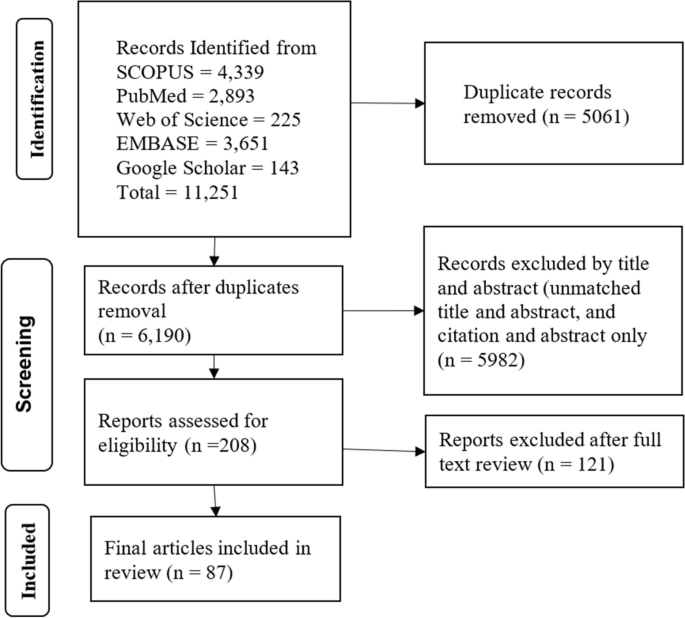
Article selection process
Operationalizing continuous quality improvement
Continuous Quality Improvement (CQI) is operationalized as a cyclic process that requires commitment to implementation, teamwork, time allocation, and celebrating successes and failures.
CQI is a cyclic ongoing process that is followed reflexive, analytical and iterative steps, including identifying gaps, generating data, developing and implementing action plans, evaluating performance, providing feedback to implementers and leaders, and proposing necessary adjustments [ 31 , 32 , 33 , 34 , 35 , 36 , 37 , 38 ].
CQI requires committing to the philosophy, involving continuous improvement [ 19 , 38 ], establishing a mission statement [ 37 ], and understanding quality definition [ 19 ].
CQI involves a wide range of patient-oriented measures and performance indicators, specifically satisfying internal and external customers, developing quality assurance, adopting common quality measures, and selecting process measures [ 8 , 19 , 35 , 36 , 37 , 39 , 40 ].
CQI requires celebrating success and failure without personalization, leading each team member to develop error-free attitudes [ 19 ]. Success and failure are related to underlying organizational processes and systems as causes of failure rather than blaming individuals [ 8 ] because CQI is process-focused based on collaborative, data-driven, responsive, rigorous and problem-solving statistical analysis [ 8 , 19 , 38 ]. Furthermore, a gap or failure opens another opportunity for establishing a data-driven learning organization [ 41 ].
CQI cannot be implemented without a CQI team [ 8 , 19 , 37 , 39 , 42 , 43 , 44 , 45 , 46 ]. A CQI team comprises individuals from various disciplines, often comprising a team leader, a subject matter expert (physician or other healthcare provider), a data analyst, a facilitator, frontline staff, and stakeholders [ 39 , 43 , 47 , 48 , 49 ]. It is also important to note that inviting stakeholders or partners as part of the CQI support intervention is crucial [ 19 , 38 , 48 ].
The timeline is another distinct feature of CQI because the results of CQI vary based on the implementation duration of each cycle [ 35 ]. There is no specific time limit for CQI implementation, although there is a general consensus that a cycle of CQI should be relatively short [ 35 ]. For instance, a CQI implementation took 2 months [ 42 ], 4 months [ 50 ], 9 months [ 51 , 52 ], 12 months [ 53 , 54 , 55 ], and one year and 5 months [ 49 ] duration to achieve the desired positive outcome, while bi-weekly [ 47 ] and monthly data reviews and analyses [ 44 , 48 , 56 ], and activities over 3 months [ 57 ] have also resulted in a positive outcome.
Continuous quality improvement models and tools
There have been several models are utilized. The Plan-Do-Study/Check-Act cycle is a stepwise process involving project initiation, situation analysis, root cause identification, solution generation and selection, implementation, result evaluation, standardization, and future planning [ 7 , 36 , 37 , 45 , 47 , 48 , 49 , 50 , 51 , 53 , 56 , 57 , 58 , 59 , 60 , 61 , 62 , 63 , 64 , 65 , 66 , 67 , 68 , 69 , 70 ]. The FOCUS-PDCA cycle enhances the PDCA process by adding steps to find and improve a process (F), organize a knowledgeable team (O), clarify the process (C), understand variations (U), and select improvements (S) [ 55 , 71 , 72 , 73 ]. The FADE cycle involves identifying a problem (Focus), understanding it through data analysis (Analyze), devising solutions (Develop), and implementing the plan (Execute) [ 74 ]. The Logic Framework involves brainstorming to identify improvement areas, conducting root cause analysis to develop a problem tree, logically reasoning to create an objective tree, formulating the framework, and executing improvement projects [ 75 ]. Breakthrough series approach requires CQI teams to meet in quarterly collaborative learning sessions, share learning experiences, and continue discussion by telephone and cross-site visits to strengthen learning and idea exchange [ 47 ]. Another CQI model is the Lean approach, which has been conducted with Kaizen principles [ 52 ], 5 S principles, and the Six Sigma model. The 5 S (Sort, Set/Straighten, Shine, Standardize, Sustain) systematically organises and improves the workplace, focusing on sorting, setting order, shining, standardizing, and sustaining the improvement [ 54 , 76 ]. Kaizen principles guide CQI by advocating for continuous improvement, valuing all ideas, solving problems, focusing on practical, low-cost improvements, using data to drive change, acknowledging process defects, reducing variability and waste, recognizing every interaction as a customer-supplier relationship, empowering workers, responding to all ideas, and maintaining a disciplined workplace [ 77 ]. Lean Six Sigma, a CQI model, applies the DMAIC methodology, which involves defining (D) and measuring the problem (M), analyzing root causes (A), improving by finding solutions (I), and controlling by assessing process stability (C) [ 78 , 79 ]. The 5 C-cyclic model (consultation, collection, consideration, collaboration, and celebration), the first CQI framework for volunteer dental services in Aboriginal communities, ensures quality care based on community needs [ 80 ]. One study used meetings involving activities such as reviewing objectives, assigning roles, discussing the agenda, completing tasks, retaining key outputs, planning future steps, and evaluating the meeting’s effectiveness [ 81 ].
Various tools are involved in the implementation or evaluation of CQI initiatives: checklists [ 53 , 82 ], flowcharts [ 81 , 82 , 83 ], cause-and-effect diagrams (fishbone or Ishikawa diagrams) [ 60 , 62 , 79 , 81 , 82 ], fuzzy Pareto diagram [ 82 ], process maps [ 60 ], time series charts [ 48 ], why-why analysis [ 79 ], affinity diagrams and multivoting [ 81 ], and run chart [ 47 , 48 , 51 , 60 , 84 ], and others mentioned in the table (Table 1 ).
Barriers and facilitators of continuous quality improvement implementation
Implementing CQI initiatives is determined by various barriers and facilitators, which can be thematized into four dimensions. These dimensions are cultural, technical, structural, and strategic dimensions.
Continuous quality improvement initiatives face various cultural, strategic, technical, and structural barriers. Cultural dimension barriers involve resistance to change (e.g., not accepting online technology), lack of quality-focused culture, staff reporting apprehensiveness, and fear of blame or punishment [ 36 , 41 , 85 , 86 ]. The technical dimension barriers of CQI can include various factors that hinder the effective implementation and execution of CQI processes [ 36 , 86 , 87 , 88 , 89 ]. Structural dimension barriers of CQI arise from the organization structure, process, and systems that can impede the effective implementation and sustainability of CQI [ 36 , 85 , 86 , 87 , 88 ]. Strategic dimension barriers are, for example, the inability to select proper CQI goals and failure to integrate CQI into organizational planning and goals [ 36 , 85 , 86 , 87 , 88 , 90 ].
Facilitators are also grouped to cultural, structural, technical, and strategic dimensions to provide solutions to CQI barriers. Cultural challenges were addressed by developing a group culture to CQI and other rewards [ 39 , 41 , 80 , 85 , 86 , 87 , 90 , 91 , 92 ]. Technical facilitators are pivotal to improving technical barriers [ 39 , 42 , 53 , 69 , 86 , 90 , 91 ]. Structural-related facilitators are related to improving communication, infrastructure, and systems [ 86 , 92 , 93 ]. Strategic dimension facilitators include strengthening leadership and improving decision-making skills [ 43 , 53 , 67 , 86 , 87 , 92 , 94 , 95 ] (Table 2 ).
Impact of continuous quality improvement
Continuous quality improvement initiatives can significantly impact the quality of healthcare in a wide range of health areas, focusing on improving structure, the health service delivery process and improving client wellbeing and reducing mortality.
Structure components
These are health leadership, financing, workforce, technology, and equipment and supplies. CQI has improved planning, monitoring and evaluation [ 48 , 53 ], and leadership and planning [ 48 ], indicating improvement in leadership perspectives. Implementing CQI in primary health care (PHC) settings has shown potential for maintaining or reducing operation costs [ 67 ]. Findings from another study indicate that the costs associated with implementing CQI interventions per facility ranged from approximately $2,000 to $10,500 per year, with an average cost of approximately $10 to $60 per admitted client [ 57 ]. However, based on model predictions, the average cost savings after implementing CQI were estimated to be $5430 [ 31 ]. CQI can also be applied to health workforce development [ 32 ]. CQI in the institutional system improved medical education [ 66 , 96 , 97 ], human resources management [ 53 ], motivated staffs [ 76 ], and increased staff health awareness [ 69 ], while concerns raised about CQI impartiality, independence, and public accountability [ 96 ]. Regarding health technology, CQI also improved registration and documentation [ 48 , 53 , 98 ]. Furthermore, the CQI initiatives increased cleanliness [ 54 ] and improved logistics, supplies, and equipment [ 48 , 53 , 68 ].
Process and output components
The process component focuses on the activities and actions involved in delivering healthcare services.
Service delivery
CQI interventions improved service delivery [ 53 , 56 , 99 ], particularly a significant 18% increase in the overall quality of service performance [ 48 ], improved patient counselling, adherence to appropriate procedures, and infection prevention [ 48 , 68 ], and optimised workflow [ 52 ].
Coordination and collaboration
CQI initiatives improved coordination and collaboration through collecting and analysing data, onsite technical support, training, supportive supervision [ 53 ] and facilitating linkages between work processes and a quality control group [ 65 ].
Patient satisfaction
The CQI initiatives increased patient satisfaction and improved quality of life by optimizing care quality management, improving the quality of clinical nursing, reducing nursing defects and enhancing the wellbeing of clients [ 54 , 76 , 100 ], although CQI was not associated with changes in adolescent and young adults’ satisfaction [ 51 ].
CQI initiatives reduced medication error reports from 16 to 6 [ 101 ], and it significantly reduced the administration of inappropriate prophylactic antibiotics [ 44 ], decreased errors in inpatient care [ 52 ], decreased the overall episiotomy rate from 44.5 to 33.3% [ 83 ], reduced the overall incidence of unplanned endotracheal extubation [ 102 ], improving appropriate use of computed tomography angiography [ 103 ], and appropriate diagnosis and treatment selection [ 47 ].
Continuity of care
CQI initiatives effectively improve continuity of care by improving client and physician interaction. For instance, provider continuity levels showed a 64% increase [ 55 ]. Modifying electronic medical record templates, scheduling, staff and parental education, standardization of work processes, and birth to 1-year age-specific incentives in post-natal follow-up care increased continuity of care to 74% in 2018 compared to baseline 13% in 2012 [ 84 ].
The CQI initiative yielded enhanced efficiency in the cardiac catheterization laboratory, as evidenced by improved punctuality in procedure starts and increased efficiency in manual sheath-pulls inside [ 78 ].
Accessibility
CQI initiatives were effective in improving accessibility in terms of increasing service coverage and utilization rate. For instance, screening for cigarettes, nutrition counselling, folate prescription, maternal care, immunization coverage [ 53 , 81 , 104 , 105 ], reducing the percentage of non-attending patients to surgery to 0.9% from the baseline 3.9% [ 43 ], increasing Chlamydia screening rates from 29 to 60% [ 45 ], increasing HIV care continuum coverage [ 51 , 59 , 60 ], increasing in the uptake of postpartum long-acting reversible contraceptive use from 6.9% at the baseline to 25.4% [ 42 ], increasing post-caesarean section prophylaxis from 36 to 89% [ 62 ], a 31% increase of kangaroo care practice [ 50 ], and increased follow-up [ 65 ]. Similarly, the QI intervention increased the quality of antenatal care by 29.3%, correct partograph use by 51.7%, and correct active third-stage labour management, a 19.6% improvement from the baseline, but not significantly associated with improvement in contraceptive service uptake [ 61 ].
Timely access
CQI interventions improved the time care provision [ 52 ], and reduced waiting time [ 62 , 74 , 76 , 106 ]. For instance, the discharge process waiting time in the emergency department decreased from 76 min to 22 min [ 79 ]. It also reduced mean postprocedural length of stay from 2.8 days to 2.0 days [ 31 ].
Acceptability
Acceptability of CQI by healthcare providers was satisfactory. For instance, 88% of the faculty, 64% of the residents, and 82% of the staff believed CQI to be useful in the healthcare clinic [ 107 ].
Outcome components
Morbidity and mortality.
CQI efforts have demonstrated better management outcomes among diabetic patients [ 40 ], patients with oral mucositis [ 71 ], and anaemic patients [ 72 ]. It has also reduced infection rate in post-caesarean Sect. [ 62 ], reduced post-peritoneal dialysis peritonitis [ 49 , 108 ], and prevented pressure ulcers [ 70 ]. It is explained by peritonitis incidence from once every 40.1 patient months at baseline to once every 70.8 patient months after CQI [ 49 ] and a 63% reduction in pressure ulcer prevalence within 2 years from 2008 to 2010 [ 70 ]. Furthermore, CQI initiatives significantly reduced in-hospital deaths [ 31 ] and increased patient survival rates [ 108 ]. Figure 2 displays the overall process of the CQI implementations.
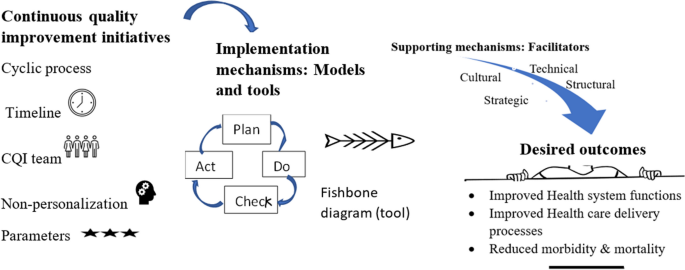
The overall mechanisms of continuous quality improvement implementation
In this review, we examined the fundamental concepts and principles underlying CQI, the factors that either hinder or assist in its successful application and implementation, and the purpose of CQI in enhancing quality of care across various health issues.
Our findings have brought attention to the application and implementation of CQI, emphasizing its underlying concepts and principles, as evident in the existing literature [ 31 , 32 , 33 , 34 , 35 , 36 , 39 , 40 , 43 , 45 , 46 ]. Continuous quality improvement has shared with the principles of continuous improvement, such as a customer-driven focus, effective leadership, active participation of individuals, a process-oriented approach, systematic implementation, emphasis on design improvement and prevention, evidence-based decision-making, and fostering partnership [ 5 ]. Moreover, Deming’s 14 principles laid the foundation for CQI principles [ 109 ]. These principles have been adapted and put into practice in various ways: ten [ 19 ] and five [ 38 ] principles in hospitals, five principles for capacity building [ 38 ], and two principles for medication error prevention [ 41 ]. As a principle, the application of CQI can be process-focused [ 8 , 19 ] or impact-focused [ 38 ]. Impact-focused CQI focuses on achieving specific outcomes or impacts, whereas process-focused CQI prioritizes and improves the underlying processes and systems. These principles complement each other and can be utilized based on the objectives of quality improvement initiatives in healthcare settings. Overall, CQI is an ongoing educational process that requires top management’s involvement, demands coordination across departments, encourages the incorporation of views beyond clinical area, and provides non-judgemental evidence based on objective data [ 110 ].
The current review recognized that it was not easy to implement CQI. It requires reasonable utilization of various models and tools. The application of each tool can be varied based on the studied health problem and the purpose of CQI initiative [ 111 ], varied in context, content, structure, and usability [ 112 ]. Additionally, overcoming the cultural, technical, structural, and strategic-related barriers. These barriers have emerged from clinical staff, managers, and health systems perspectives. Of the cultural obstacles, staff non-involvement, resistance to change, and reluctance to report error were staff-related. In contrast, others, such as the absence of celebration for success and hierarchical and rational culture, may require staff and manager involvement. Staff members may exhibit reluctance in reporting errors due to various cultural factors, including lack of trust, hierarchical structures, fear of retribution, and a blame-oriented culture. These challenges pose obstacles to implementing standardized CQI practices, as observed, for instance, in community pharmacy settings [ 85 ]. The hierarchical culture, characterized by clearly defined levels of power, authority, and decision-making, posed challenges to implementing CQI initiatives in public health [ 41 , 86 ]. Although rational culture, a type of organizational culture, emphasizes logical thinking and rational decision-making, it can also create challenges for CQI implementation [ 41 , 86 ] because hierarchical and rational cultures, which emphasize bureaucratic norms and narrow definitions of achievement, were found to act as barriers to the implementation of CQI [ 86 ]. These could be solved by developing a shared mindset and collective commitment, establishing a shared purpose, developing group norms, and cultivating psychological preparedness among staff, managers, and clients to implement and sustain CQI initiatives. Furthermore, reversing cultural-related barriers necessitates cultural-related solutions: development of a culture and group culture to CQI [ 41 , 86 ], positive comprehensive perception [ 91 ], commitment [ 85 ], involving patients, families, leaders, and staff [ 39 , 92 ], collaborating for a common goal [ 80 , 86 ], effective teamwork [ 86 , 87 ], and rewarding and celebrating successes [ 80 , 90 ].
The technical dimension barriers of CQI can include inadequate capitalization of a project and insufficient support for CQI facilitators and data entry managers [ 36 ], immature electronic medical records or poor information systems [ 36 , 86 ], and the lack of training and skills [ 86 , 87 , 88 ]. These challenges may cause the CQI team to rely on outdated information and technologies. The presence of barriers on the technical dimension may challenge the solid foundation of CQI expertise among staff, the ability to recognize opportunities for improvement, a comprehensive understanding of how services are produced and delivered, and routine use of expertise in daily work. Addressing these technical barriers requires knowledge creation activities (training, seminar, and education) [ 39 , 42 , 53 , 69 , 86 , 90 , 91 ], availability of quality data [ 86 ], reliable information [ 92 ], and a manual-online hybrid reporting system [ 85 ].
Structural dimension barriers of CQI include inadequate communication channels and lack of standardized process, specifically weak physician-to-physician synergies [ 36 ], lack of mechanisms for disseminating knowledge and limited use of communication mechanisms [ 86 ]. Lack of communication mechanism endangers sharing ideas and feedback among CQI teams, leading to misunderstandings, limited participation and misinterpretations, and a lack of learning [ 113 ]. Knowledge translation facilitates the co-production of research, subsequent diffusion of knowledge, and the developing stakeholder’s capacity and skills [ 114 ]. Thus, the absence of a knowledge translation mechanism may cause missed opportunities for learning, inefficient problem-solving, and limited creativity. To overcome these challenges, organizations should establish effective communication and information systems [ 86 , 93 ] and learning systems [ 92 ]. Though CQI and knowledge translation have interacted with each other, it is essential to recognize that they are distinct. CQI focuses on process improvement within health care systems, aiming to optimize existing processes, reduce errors, and enhance efficiency.
In contrast, knowledge translation bridges the gap between research evidence and clinical practice, translating research findings into actionable knowledge for practitioners. While both CQI and knowledge translation aim to enhance health care quality and patient outcomes, they employ different strategies: CQI utilizes tools like Plan-Do-Study-Act cycles and statistical process control, while knowledge translation involves knowledge synthesis and dissemination. Additionally, knowledge translation can also serve as a strategy to enhance CQI. Both concepts share the same principle: continuous improvement is essential for both. Therefore, effective strategies on the structural dimension may build efficient and effective steering councils, information systems, and structures to diffuse learning throughout the organization.
Strategic factors, such as goals, planning, funds, and resources, determine the overall purpose of CQI initiatives. Specific barriers were improper goals and poor planning [ 36 , 86 , 88 ], fragmentation of quality assurance policies [ 87 ], inadequate reinforcement to staff [ 36 , 90 ], time constraints [ 85 , 86 ], resource inadequacy [ 86 ], and work overload [ 86 ]. These barriers can be addressed through strengthening leadership [ 86 , 87 ], CQI-based mentoring [ 94 ], periodic monitoring, supportive supervision and coaching [ 43 , 53 , 87 , 92 , 95 ], participation, empowerment, and accountability [ 67 ], involving all stakeholders in decision-making [ 86 , 87 ], a provider-payer partnership [ 64 ], and compensating staff for after-hours meetings on CQI [ 85 ]. The strategic dimension, characterized by a strategic plan and integrated CQI efforts, is devoted to processes that are central to achieving strategic priorities. Roles and responsibilities are defined in terms of integrated strategic and quality-related goals [ 115 ].
The utmost goal of CQI has been to improve the quality of care, which is usually revealed by structure, process, and outcome. After resolving challenges and effectively using tools and running models, the goal of CQI reflects the ultimate reason and purpose of its implementation. First, effectively implemented CQI initiatives can improve leadership, health financing, health workforce development, health information technology, and availability of supplies as the building blocks of a health system [ 31 , 48 , 53 , 68 , 98 ]. Second, effectively implemented CQI initiatives improved care delivery process (counselling, adherence with standards, coordination, collaboration, and linkages) [ 48 , 53 , 65 , 68 ]. Third, the CQI can improve outputs of healthcare delivery, such as satisfaction, accessibility (timely access, utilization), continuity of care, safety, efficiency, and acceptability [ 52 , 54 , 55 , 76 , 78 ]. Finally, the effectiveness of the CQI initiatives has been tested in enhancing responses related to key aspects of the HIV response, maternal and child health, non-communicable disease control, and others (e.g., surgery and peritonitis). However, it is worth noting that CQI initiative has not always been effective. For instance, CQI using a two- to nine-times audit cycle model through systems assessment tools did not bring significant change to increase syphilis testing performance [ 116 ]. This study was conducted within the context of Aboriginal and Torres Strait Islander people’s primary health care settings. Notably, ‘the clinics may not have consistently prioritized syphilis testing performance in their improvement strategies, as facilitated by the CQI program’ [ 116 ]. Additionally, by applying CQI-based mentoring, uptake of facility-based interventions was not significantly improved, though it was effective in increasing community health worker visits during pregnancy and the postnatal period, knowledge about maternal and child health and exclusive breastfeeding practice, and HIV disclosure status [ 117 ]. The study conducted in South Africa revealed no significant association between the coverage of facility-based interventions and Continuous Quality Improvement (CQI) implementation. This lack of association was attributed to the already high antenatal and postnatal attendance rates in both control and intervention groups at baseline, leaving little room for improvement. Additionally, the coverage of HIV interventions remained consistently high throughout the study period [ 117 ].
Regarding health care and policy implications, CQI has played a vital role in advancing PHC and fostering the realization of UHC goals worldwide. The indicators found in Donabedian’s framework that are positively influenced by CQI efforts are comparable to those included in the PHC performance initiative’s conceptual framework [ 29 , 118 , 119 ]. It is clearly explained that PHC serves as the roadmap to realizing the vision of UHC [ 120 , 121 ]. Given these circumstances, implementing CQI can contribute to the achievement of PHC principles and the objectives of UHC. For instance, by implementing CQI methods, countries have enhanced the accessibility, affordability, and quality of PHC services, leading to better health outcomes for their populations. CQI has facilitated identifying and resolving healthcare gaps and inefficiencies, enabling countries to optimize resource allocation and deliver more effective and patient-centered care. However, it is crucial to recognize that the successful implementation of Continuous Quality Improvement (CQI) necessitates optimizing the duration of each cycle, understanding challenges and barriers that extend beyond the health system and settings, and acknowledging that its effectiveness may be compromised if these challenges are not adequately addressed.
Despite abundant literature, there are still gaps regarding the relationship between CQI and other dimensions within the healthcare system. No studies have examined the impact of CQI initiatives on catastrophic health expenditure, effective service coverage, patient-centredness, comprehensiveness, equity, health security, and responsiveness.
Limitations
In conducting this review, it has some limitations to consider. Firstly, only articles published in English were included, which may introduce the exclusion of relevant non-English articles. Additionally, as this review follows a scoping methodology, the focus is on synthesising available evidence rather than critically evaluating or scoring the quality of the included articles.
Continuous quality improvement is investigated as a continuous and ongoing intervention, where the implementation time can vary across different cycles. The CQI team and implementation timelines were critical elements of CQI in different models. Among the commonly used approaches, the PDSA or PDCA is frequently employed. In most CQI models, a wide range of tools, nineteen tools, are commonly utilized to support the improvement process. Cultural, technical, structural, and strategic barriers and facilitators are significant in implementing CQI initiatives. Implementing the CQI initiative aims to improve health system blocks, enhance health service delivery process and output, and ultimately prevent morbidity and reduce mortality. For future researchers, considering that CQI is context-dependent approach, conducting scale-up implementation research about catastrophic health expenditure, effective service coverage, patient-centredness, comprehensiveness, equity, health security, and responsiveness across various settings and health issues would be valuable.
Availability of data and materials
The data used and/or analyzed during the current study are available in this manuscript and/or the supplementary file.
Shewhart WA, Deming WE. Memoriam: Walter A. Shewhart, 1891–1967. Am Stat. 1967;21(2):39–40.
Article Google Scholar
Shewhart WA. Statistical method from the viewpoint of quality control. New York: Dover; 1986. ISBN 978-0486652320. OCLC 13822053. Reprint. Originally published: Washington, DC: Graduate School of the Department of Agriculture, 1939.
Moen R, editor Foundation and History of the PDSA Cycle. Asian network for quality conference Tokyo. https://www.deming.org/sites/default/files/pdf/2015/PDSA_History_Ron_MoenPdf . 2009.
Kuperman G, James B, Jacobsen J, Gardner RM. Continuous quality improvement applied to medical care: experiences at LDS hospital. Med Decis Making. 1991;11(4suppl):S60–65.
Article CAS PubMed Google Scholar
Singh J, Singh H. Continuous improvement philosophy–literature review and directions. Benchmarking: An International Journal. 2015;22(1):75–119.
Goldstone J. Presidential address: Sony, Porsche, and vascular surgery in the 21st century. J Vasc Surg. 1997;25(2):201–10.
Radawski D. Continuous quality improvement: origins, concepts, problems, and applications. J Physician Assistant Educ. 1999;10(1):12–6.
Shortell SM, O’Brien JL, Carman JM, Foster RW, Hughes E, Boerstler H, et al. Assessing the impact of continuous quality improvement/total quality management: concept versus implementation. Health Serv Res. 1995;30(2):377.
CAS PubMed PubMed Central Google Scholar
Lohr K. Quality of health care: an introduction to critical definitions, concepts, principles, and practicalities. Striving for quality in health care. 1991.
Berwick DM. The clinical process and the quality process. Qual Manage Healthc. 1992;1(1):1–8.
Article CAS Google Scholar
Gift B. On the road to TQM. Food Manage. 1992;27(4):88–9.
CAS PubMed Google Scholar
Greiner A, Knebel E. The core competencies needed for health care professionals. health professions education: A bridge to quality. 2003:45–73.
McCalman J, Bailie R, Bainbridge R, McPhail-Bell K, Percival N, Askew D et al. Continuous quality improvement and comprehensive primary health care: a systems framework to improve service quality and health outcomes. Front Public Health. 2018:6 (76):1–6.
Sheingold BH, Hahn JA. The history of healthcare quality: the first 100 years 1860–1960. Int J Afr Nurs Sci. 2014;1:18–22.
Google Scholar
Donabedian A. Evaluating the quality of medical care. Milbank Q. 1966;44(3):166–206.
Institute of Medicine (US) Committee on Quality of Health Care in America. Crossing the Quality Chasm: A New Health System for the 21st Century. Washington (DC): National Academies Press (US). 2001. 2, Improving the 21st-century Health Care System. Available from: https://www.ncbi.nlm.nih.gov/books/NBK222265/ .
Rubinstein A, Barani M, Lopez AS. Quality first for effective universal health coverage in low-income and middle-income countries. Lancet Global Health. 2018;6(11):e1142–1143.
Article PubMed Google Scholar
Agency for Healthcare Reserach and Quality. Quality Improvement and monitoring at your fingertips USA,: Agency for Healthcare Reserach and Quality. 2022. Available from: https://qualityindicators.ahrq.gov/ .
Anderson CA, Cassidy B, Rivenburgh P. Implementing continuous quality improvement (CQI) in hospitals: lessons learned from the International Quality Study. Qual Assur Health Care. 1991;3(3):141–6.
Gardner K, Mazza D. Quality in general practice - definitions and frameworks. Aust Fam Physician. 2012;41(3):151–4.
PubMed Google Scholar
Loper AC, Jensen TM, Farley AB, Morgan JD, Metz AJ. A systematic review of approaches for continuous quality improvement capacity-building. J Public Health Manage Pract. 2022;28(2):E354.
Hill JE, Stephani A-M, Sapple P, Clegg AJ. The effectiveness of continuous quality improvement for developing professional practice and improving health care outcomes: a systematic review. Implement Sci. 2020;15(1):1–14.
Candas B, Jobin G, Dubé C, Tousignant M, Abdeljelil AB, Grenier S, et al. Barriers and facilitators to implementing continuous quality improvement programs in colonoscopy services: a mixed methods systematic review. Endoscopy Int Open. 2016;4(02):E118–133.
Peters MD, Marnie C, Colquhoun H, Garritty CM, Hempel S, Horsley T, et al. Scoping reviews: reinforcing and advancing the methodology and application. Syst Reviews. 2021;10(1):1–6.
Arksey H, O’Malley L. Scoping studies: towards a methodological framework. Int J Soc Res Methodol. 2005;8(1):19–32.
Tricco AC, Lillie E, Zarin W, O’Brien KK, Colquhoun H, Levac D, et al. PRISMA extension for scoping reviews (PRISMA-ScR): checklist and explanation. Ann Intern Med. 2018;169(7):467–73.
McGowan J, Straus S, Moher D, Langlois EV, O’Brien KK, Horsley T, et al. Reporting scoping reviews—PRISMA ScR extension. J Clin Epidemiol. 2020;123:177–9.
Donabedian A. Explorations in quality assessment and monitoring: the definition of quality and approaches to its assessment. Health Administration Press, Ann Arbor. 1980;1.
World Health Organization. Operational framework for primary health care: transforming vision into action. Geneva: World Health Organization and the United Nations Children’s Fund (UNICEF); 2020 [updated 14 December 2020; cited 2023 Nov Oct 17]. Available from: https://www.who.int/publications/i/item/9789240017832 .
The Joanna Briggs Institute. The Joanna Briggs Institute Reviewers’ Manual :2014 edition. Australia: The Joanna Briggs Institute. 2014:88–91.
Rihal CS, Kamath CC, Holmes DR Jr, Reller MK, Anderson SS, McMurtry EK, et al. Economic and clinical outcomes of a physician-led continuous quality improvement intervention in the delivery of percutaneous coronary intervention. Am J Manag Care. 2006;12(8):445–52.
Ade-Oshifogun JB, Dufelmeier T. Prevention and Management of Do not return notices: a quality improvement process for Supplemental staffing nursing agencies. Nurs Forum. 2012;47(2):106–12.
Rubenstein L, Khodyakov D, Hempel S, Danz M, Salem-Schatz S, Foy R, et al. How can we recognize continuous quality improvement? Int J Qual Health Care. 2014;26(1):6–15.
O’Neill SM, Hempel S, Lim YW, Danz MS, Foy R, Suttorp MJ, et al. Identifying continuous quality improvement publications: what makes an improvement intervention ‘CQI’? BMJ Qual Saf. 2011;20(12):1011–9.
Article PubMed PubMed Central Google Scholar
Sibthorpe B, Gardner K, McAullay D. Furthering the quality agenda in Aboriginal community controlled health services: understanding the relationship between accreditation, continuous quality improvement and national key performance indicator reporting. Aust J Prim Health. 2016;22(4):270–5.
Bennett CL, Crane JM. Quality improvement efforts in oncology: are we ready to begin? Cancer Invest. 2001;19(1):86–95.
VanValkenburgh DA. Implementing continuous quality improvement at the facility level. Adv Ren Replace Ther. 2001;8(2):104–13.
Loper AC, Jensen TM, Farley AB, Morgan JD, Metz AJ. A systematic review of approaches for continuous quality improvement capacity-building. J Public Health Manage Practice. 2022;28(2):E354–361.
Ryan M. Achieving and sustaining quality in healthcare. Front Health Serv Manag. 2004;20(3):3–11.
Nicolucci A, Allotta G, Allegra G, Cordaro G, D’Agati F, Di Benedetto A, et al. Five-year impact of a continuous quality improvement effort implemented by a network of diabetes outpatient clinics. Diabetes Care. 2008;31(1):57–62.
Wakefield BJ, Blegen MA, Uden-Holman T, Vaughn T, Chrischilles E, Wakefield DS. Organizational culture, continuous quality improvement, and medication administration error reporting. Am J Med Qual. 2001;16(4):128–34.
Sori DA, Debelew GT, Degefa LS, Asefa Z. Continuous quality improvement strategy for increasing immediate postpartum long-acting reversible contraceptive use at Jimma University Medical Center, Jimma, Ethiopia. BMJ Open Qual. 2023;12(1):e002051.
Roche B, Robin C, Deleaval PJ, Marti MC. Continuous quality improvement in ambulatory surgery: the non-attending patient. Ambul Surg. 1998;6(2):97–100.
O’Connor JB, Sondhi SS, Mullen KD, McCullough AJ. A continuous quality improvement initiative reduces inappropriate prescribing of prophylactic antibiotics for endoscopic procedures. Am J Gastroenterol. 1999;94(8):2115–21.
Ursu A, Greenberg G, McKee M. Continuous quality improvement methodology: a case study on multidisciplinary collaboration to improve chlamydia screening. Fam Med Community Health. 2019;7(2):e000085.
Quick B, Nordstrom S, Johnson K. Using continuous quality improvement to implement evidence-based medicine. Lippincotts Case Manag. 2006;11(6):305–15 ( quiz 16 – 7 ).
Oyeledun B, Phillips A, Oronsaye F, Alo OD, Shaffer N, Osibo B, et al. The effect of a continuous quality improvement intervention on retention-in-care at 6 months postpartum in a PMTCT Program in Northern Nigeria: results of a cluster randomized controlled study. J Acquir Immune Defic Syndr. 2017;75(Suppl 2):S156–164.
Nyengerai T, Phohole M, Iqaba N, Kinge CW, Gori E, Moyo K, et al. Quality of service and continuous quality improvement in voluntary medical male circumcision programme across four provinces in South Africa: longitudinal and cross-sectional programme data. PLoS ONE. 2021;16(8):e0254850.
Article CAS PubMed PubMed Central Google Scholar
Wang J, Zhang H, Liu J, Zhang K, Yi B, Liu Y, et al. Implementation of a continuous quality improvement program reduces the occurrence of peritonitis in PD. Ren Fail. 2014;36(7):1029–32.
Stikes R, Barbier D. Applying the plan-do-study-act model to increase the use of kangaroo care. J Nurs Manag. 2013;21(1):70–8.
Wagner AD, Mugo C, Bluemer-Miroite S, Mutiti PM, Wamalwa DC, Bukusi D, et al. Continuous quality improvement intervention for adolescent and young adult HIV testing services in Kenya improves HIV knowledge. AIDS. 2017;31(Suppl 3):S243–252.
Le RD, Melanson SE, Santos KS, Paredes JD, Baum JM, Goonan EM, et al. Using lean principles to optimise inpatient phlebotomy services. J Clin Pathol. 2014;67(8):724–30.
Manyazewal T, Mekonnen A, Demelew T, Mengestu S, Abdu Y, Mammo D, et al. Improving immunization capacity in Ethiopia through continuous quality improvement interventions: a prospective quasi-experimental study. Infect Dis Poverty. 2018;7:7.
Kamiya Y, Ishijma H, Hagiwara A, Takahashi S, Ngonyani HAM, Samky E. Evaluating the impact of continuous quality improvement methods at hospitals in Tanzania: a cluster-randomized trial. Int J Qual Health Care. 2017;29(1):32–9.
Kibbe DC, Bentz E, McLaughlin CP. Continuous quality improvement for continuity of care. J Fam Pract. 1993;36(3):304–8.
Adrawa N, Ongiro S, Lotee K, Seret J, Adeke M, Izudi J. Use of a context-specific package to increase sputum smear monitoring among people with pulmonary tuberculosis in Uganda: a quality improvement study. BMJ Open Qual. 2023;12(3):1–6.
Hunt P, Hunter SB, Levan D. Continuous quality improvement in substance abuse treatment facilities: how much does it cost? J Subst Abuse Treat. 2017;77:133–40.
Azadeh A, Ameli M, Alisoltani N, Motevali Haghighi S. A unique fuzzy multi-control approach for continuous quality improvement in a radio therapy department. Qual Quantity. 2016;50(6):2469–93.
Memiah P, Tlale J, Shimabale M, Nzyoka S, Komba P, Sebeza J, et al. Continuous quality improvement (CQI) institutionalization to reach 95:95:95 HIV targets: a multicountry experience from the Global South. BMC Health Serv Res. 2021;21(1):711.
Yapa HM, De Neve JW, Chetty T, Herbst C, Post FA, Jiamsakul A, et al. The impact of continuous quality improvement on coverage of antenatal HIV care tests in rural South Africa: results of a stepped-wedge cluster-randomised controlled implementation trial. PLoS Med. 2020;17(10):e1003150.
Dadi TL, Abebo TA, Yeshitla A, Abera Y, Tadesse D, Tsegaye S, et al. Impact of quality improvement interventions on facility readiness, quality and uptake of maternal and child health services in developing regions of Ethiopia: a secondary analysis of programme data. BMJ Open Qual. 2023;12(4):e002140.
Weinberg M, Fuentes JM, Ruiz AI, Lozano FW, Angel E, Gaitan H, et al. Reducing infections among women undergoing cesarean section in Colombia by means of continuous quality improvement methods. Arch Intern Med. 2001;161(19):2357–65.
Andreoni V, Bilak Y, Bukumira M, Halfer D, Lynch-Stapleton P, Perez C. Project management: putting continuous quality improvement theory into practice. J Nurs Care Qual. 1995;9(3):29–37.
Balfour ME, Zinn TE, Cason K, Fox J, Morales M, Berdeja C, et al. Provider-payer partnerships as an engine for continuous quality improvement. Psychiatric Serv. 2018;69(6):623–5.
Agurto I, Sandoval J, De La Rosa M, Guardado ME. Improving cervical cancer prevention in a developing country. Int J Qual Health Care. 2006;18(2):81–6.
Anderson CI, Basson MD, Ali M, Davis AT, Osmer RL, McLeod MK, et al. Comprehensive multicenter graduate surgical education initiative incorporating entrustable professional activities, continuous quality improvement cycles, and a web-based platform to enhance teaching and learning. J Am Coll Surg. 2018;227(1):64–76.
Benjamin S, Seaman M. Applying continuous quality improvement and human performance technology to primary health care in Bahrain. Health Care Superv. 1998;17(1):62–71.
Byabagambi J, Marks P, Megere H, Karamagi E, Byakika S, Opio A, et al. Improving the quality of voluntary medical male circumcision through use of the continuous quality improvement approach: a pilot in 30 PEPFAR-Supported sites in Uganda. PLoS ONE. 2015;10(7):e0133369.
Hogg S, Roe Y, Mills R. Implementing evidence-based continuous quality improvement strategies in an urban Aboriginal Community Controlled Health Service in South East Queensland: a best practice implementation pilot. JBI Database Syst Rev Implement Rep. 2017;15(1):178–87.
Hopper MB, Morgan S. Continuous quality improvement initiative for pressure ulcer prevention. J Wound Ostomy Cont Nurs. 2014;41(2):178–80.
Ji J, Jiang DD, Xu Z, Yang YQ, Qian KY, Zhang MX. Continuous quality improvement of nutrition management during radiotherapy in patients with nasopharyngeal carcinoma. Nurs Open. 2021;8(6):3261–70.
Chen M, Deng JH, Zhou FD, Wang M, Wang HY. Improving the management of anemia in hemodialysis patients by implementing the continuous quality improvement program. Blood Purif. 2006;24(3):282–6.
Reeves S, Matney K, Crane V. Continuous quality improvement as an ideal in hospital practice. Health Care Superv. 1995;13(4):1–12.
Barton AJ, Danek G, Johns P, Coons M. Improving patient outcomes through CQI: vascular access planning. J Nurs Care Qual. 1998;13(2):77–85.
Buttigieg SC, Gauci D, Dey P. Continuous quality improvement in a Maltese hospital using logical framework analysis. J Health Organ Manag. 2016;30(7):1026–46.
Take N, Byakika S, Tasei H, Yoshikawa T. The effect of 5S-continuous quality improvement-total quality management approach on staff motivation, patients’ waiting time and patient satisfaction with services at hospitals in Uganda. J Public Health Afr. 2015;6(1):486.
PubMed PubMed Central Google Scholar
Jacobson GH, McCoin NS, Lescallette R, Russ S, Slovis CM. Kaizen: a method of process improvement in the emergency department. Acad Emerg Med. 2009;16(12):1341–9.
Agarwal S, Gallo J, Parashar A, Agarwal K, Ellis S, Khot U, et al. Impact of lean six sigma process improvement methodology on cardiac catheterization laboratory efficiency. Catheter Cardiovasc Interv. 2015;85:S119.
Rahul G, Samanta AK, Varaprasad G A Lean Six Sigma approach to reduce overcrowding of patients and improving the discharge process in a super-specialty hospital. In 2020 International Conference on System, Computation, Automation and Networking (ICSCAN) 2020 July 3 (pp. 1-6). IEEE
Patel J, Nattabi B, Long R, Durey A, Naoum S, Kruger E, et al. The 5 C model: A proposed continuous quality improvement framework for volunteer dental services in remote Australian Aboriginal communities. Community Dent Oral Epidemiol. 2023;51(6):1150–8.
Van Acker B, McIntosh G, Gudes M. Continuous quality improvement techniques enhance HMO members’ immunization rates. J Healthc Qual. 1998;20(2):36–41.
Horine PD, Pohjala ED, Luecke RW. Healthcare financial managers and CQI. Healthc Financ Manage. 1993;47(9):34.
Reynolds JL. Reducing the frequency of episiotomies through a continuous quality improvement program. CMAJ. 1995;153(3):275–82.
Bunik M, Galloway K, Maughlin M, Hyman D. First five quality improvement program increases adherence and continuity with well-child care. Pediatr Qual Saf. 2021;6(6):e484.
Boyle TA, MacKinnon NJ, Mahaffey T, Duggan K, Dow N. Challenges of standardized continuous quality improvement programs in community pharmacies: the case of SafetyNET-Rx. Res Social Adm Pharm. 2012;8(6):499–508.
Price A, Schwartz R, Cohen J, Manson H, Scott F. Assessing continuous quality improvement in public health: adapting lessons from healthcare. Healthc Policy. 2017;12(3):34–49.
Gage AD, Gotsadze T, Seid E, Mutasa R, Friedman J. The influence of continuous quality improvement on healthcare quality: a mixed-methods study from Zimbabwe. Soc Sci Med. 2022;298:114831.
Chan YC, Ho SJ. Continuous quality improvement: a survey of American and Canadian healthcare executives. Hosp Health Serv Adm. 1997;42(4):525–44.
Balas EA, Puryear J, Mitchell JA, Barter B. How to structure clinical practice guidelines for continuous quality improvement? J Med Syst. 1994;18(5):289–97.
ElChamaa R, Seely AJE, Jeong D, Kitto S. Barriers and facilitators to the implementation and adoption of a continuous quality improvement program in surgery: a case study. J Contin Educ Health Prof. 2022;42(4):227–35.
Candas B, Jobin G, Dubé C, Tousignant M, Abdeljelil A, Grenier S, et al. Barriers and facilitators to implementing continuous quality improvement programs in colonoscopy services: a mixed methods systematic review. Endoscopy Int Open. 2016;4(2):E118–133.
Brandrud AS, Schreiner A, Hjortdahl P, Helljesen GS, Nyen B, Nelson EC. Three success factors for continual improvement in healthcare: an analysis of the reports of improvement team members. BMJ Qual Saf. 2011;20(3):251–9.
Lee S, Choi KS, Kang HY, Cho W, Chae YM. Assessing the factors influencing continuous quality improvement implementation: experience in Korean hospitals. Int J Qual Health Care. 2002;14(5):383–91.
Horwood C, Butler L, Barker P, Phakathi S, Haskins L, Grant M, et al. A continuous quality improvement intervention to improve the effectiveness of community health workers providing care to mothers and children: a cluster randomised controlled trial in South Africa. Hum Resour Health. 2017;15(1):39.
Hyrkäs K, Lehti K. Continuous quality improvement through team supervision supported by continuous self-monitoring of work and systematic patient feedback. J Nurs Manag. 2003;11(3):177–88.
Akdemir N, Peterson LN, Campbell CM, Scheele F. Evaluation of continuous quality improvement in accreditation for medical education. BMC Med Educ. 2020;20(Suppl 1):308.
Barzansky B, Hunt D, Moineau G, Ahn D, Lai CW, Humphrey H, et al. Continuous quality improvement in an accreditation system for undergraduate medical education: benefits and challenges. Med Teach. 2015;37(11):1032–8.
Gaylis F, Nasseri R, Salmasi A, Anderson C, Mohedin S, Prime R, et al. Implementing continuous quality improvement in an integrated community urology practice: lessons learned. Urology. 2021;153:139–46.
Gaga S, Mqoqi N, Chimatira R, Moko S, Igumbor JO. Continuous quality improvement in HIV and TB services at selected healthcare facilities in South Africa. South Afr J HIV Med. 2021;22(1):1202.
Wang F, Yao D. Application effect of continuous quality improvement measures on patient satisfaction and quality of life in gynecological nursing. Am J Transl Res. 2021;13(6):6391–8.
Lee SB, Lee LL, Yeung RS, Chan J. A continuous quality improvement project to reduce medication error in the emergency department. World J Emerg Med. 2013;4(3):179–82.
Chiang AA, Lee KC, Lee JC, Wei CH. Effectiveness of a continuous quality improvement program aiming to reduce unplanned extubation: a prospective study. Intensive Care Med. 1996;22(11):1269–71.
Chinnaiyan K, Al-Mallah M, Goraya T, Patel S, Kazerooni E, Poopat C, et al. Impact of a continuous quality improvement initiative on appropriate use of coronary CT angiography: results from a multicenter, statewide registry, the advanced cardiovascular imaging consortium (ACIC). J Cardiovasc Comput Tomogr. 2011;5(4):S29–30.
Gibson-Helm M, Rumbold A, Teede H, Ranasinha S, Bailie R, Boyle J. A continuous quality improvement initiative: improving the provision of pregnancy care for Aboriginal and Torres Strait Islander women. BJOG: Int J Obstet Gynecol. 2015;122:400–1.
Bennett IM, Coco A, Anderson J, Horst M, Gambler AS, Barr WB, et al. Improving maternal care with a continuous quality improvement strategy: a report from the interventions to minimize preterm and low birth weight infants through continuous improvement techniques (IMPLICIT) network. J Am Board Fam Med. 2009;22(4):380–6.
Krall SP, Iv CLR, Donahue L. Effect of continuous quality improvement methods on reducing triage to thrombolytic interval for Acute myocardial infarction. Acad Emerg Med. 1995;2(7):603–9.
Swanson TK, Eilers GM. Physician and staff acceptance of continuous quality improvement. Fam Med. 1994;26(9):583–6.
Yu Y, Zhou Y, Wang H, Zhou T, Li Q, Li T, et al. Impact of continuous quality improvement initiatives on clinical outcomes in peritoneal dialysis. Perit Dial Int. 2014;34(Suppl 2):S43–48.
Schiff GD, Goldfield NI. Deming meets Braverman: toward a progressive analysis of the continuous quality improvement paradigm. Int J Health Serv. 1994;24(4):655–73.
American Hospital Association Division of Quality Resources Chicago, IL: The role of hospital leadership in the continuous improvement of patient care quality. American Hospital Association. J Healthc Qual. 1992;14(5):8–14,22.
Scriven M. The Logic and Methodology of checklists [dissertation]. Western Michigan University; 2000.
Hales B, Terblanche M, Fowler R, Sibbald W. Development of medical checklists for improved quality of patient care. Int J Qual Health Care. 2008;20(1):22–30.
Vermeir P, Vandijck D, Degroote S, Peleman R, Verhaeghe R, Mortier E, et al. Communication in healthcare: a narrative review of the literature and practical recommendations. Int J Clin Pract. 2015;69(11):1257–67.
Eljiz K, Greenfield D, Hogden A, Taylor R, Siddiqui N, Agaliotis M, et al. Improving knowledge translation for increased engagement and impact in healthcare. BMJ open Qual. 2020;9(3):e000983.
O’Brien JL, Shortell SM, Hughes EF, Foster RW, Carman JM, Boerstler H, et al. An integrative model for organization-wide quality improvement: lessons from the field. Qual Manage Healthc. 1995;3(4):19–30.
Adily A, Girgis S, D’Este C, Matthews V, Ward JE. Syphilis testing performance in Aboriginal primary health care: exploring impact of continuous quality improvement over time. Aust J Prim Health. 2020;26(2):178–83.
Horwood C, Butler L, Barker P, Phakathi S, Haskins L, Grant M, et al. A continuous quality improvement intervention to improve the effectiveness of community health workers providing care to mothers and children: a cluster randomised controlled trial in South Africa. Hum Resour Health. 2017;15:1–11.
Veillard J, Cowling K, Bitton A, Ratcliffe H, Kimball M, Barkley S, et al. Better measurement for performance improvement in low- and middle-income countries: the primary Health Care Performance Initiative (PHCPI) experience of conceptual framework development and indicator selection. Milbank Q. 2017;95(4):836–83.
Barbazza E, Kringos D, Kruse I, Klazinga NS, Tello JE. Creating performance intelligence for primary health care strengthening in Europe. BMC Health Serv Res. 2019;19(1):1006.
Assefa Y, Hill PS, Gilks CF, Admassu M, Tesfaye D, Van Damme W. Primary health care contributions to universal health coverage. Ethiopia Bull World Health Organ. 2020;98(12):894.
Van Weel C, Kidd MR. Why strengthening primary health care is essential to achieving universal health coverage. CMAJ. 2018;190(15):E463–466.
Download references
Acknowledgements
Not applicable.
The authors received no fund.
Author information
Authors and affiliations.
School of Public Health, The University of Queensland, Brisbane, Australia
Aklilu Endalamaw, Resham B Khatri, Tesfaye Setegn Mengistu, Daniel Erku & Yibeltal Assefa
College of Medicine and Health Sciences, Bahir Dar University, Bahir Dar, Ethiopia
Aklilu Endalamaw & Tesfaye Setegn Mengistu
Health Social Science and Development Research Institute, Kathmandu, Nepal
Resham B Khatri
Centre for Applied Health Economics, School of Medicine, Grifth University, Brisbane, Australia
Daniel Erku
Menzies Health Institute Queensland, Grifth University, Brisbane, Australia
International Institute for Primary Health Care in Ethiopia, Addis Ababa, Ethiopia
Eskinder Wolka & Anteneh Zewdie
You can also search for this author in PubMed Google Scholar
Contributions
AE conceptualized the study, developed the first draft of the manuscript, and managing feedbacks from co-authors. YA conceptualized the study, provided feedback, and supervised the whole processes. RBK provided feedback throughout. TSM provided feedback throughout. DE provided feedback throughout. EW provided feedback throughout. AZ provided feedback throughout. All authors read and approved the final manuscript.
Corresponding author
Correspondence to Aklilu Endalamaw .
Ethics declarations
Ethics approval and consent to participate.
Not applicable because this research is based on publicly available articles.
Consent for publication
Competing interests.
The authors declare that they have no competing interests.
Additional information
Publisher’s note.
Springer Nature remains neutral with regard to jurisdictional claims in published maps and institutional affiliations.
Supplementary Information
Supplementary material 1., supplementary material 2., rights and permissions.
Open Access This article is licensed under a Creative Commons Attribution 4.0 International License, which permits use, sharing, adaptation, distribution and reproduction in any medium or format, as long as you give appropriate credit to the original author(s) and the source, provide a link to the Creative Commons licence, and indicate if changes were made. The images or other third party material in this article are included in the article's Creative Commons licence, unless indicated otherwise in a credit line to the material. If material is not included in the article's Creative Commons licence and your intended use is not permitted by statutory regulation or exceeds the permitted use, you will need to obtain permission directly from the copyright holder. To view a copy of this licence, visit http://creativecommons.org/licenses/by/4.0/ . The Creative Commons Public Domain Dedication waiver ( http://creativecommons.org/publicdomain/zero/1.0/ ) applies to the data made available in this article, unless otherwise stated in a credit line to the data.
Reprints and permissions
About this article
Cite this article.
Endalamaw, A., Khatri, R.B., Mengistu, T.S. et al. A scoping review of continuous quality improvement in healthcare system: conceptualization, models and tools, barriers and facilitators, and impact. BMC Health Serv Res 24 , 487 (2024). https://doi.org/10.1186/s12913-024-10828-0
Download citation
Received : 27 December 2023
Accepted : 05 March 2024
Published : 19 April 2024
DOI : https://doi.org/10.1186/s12913-024-10828-0
Share this article
Anyone you share the following link with will be able to read this content:
Sorry, a shareable link is not currently available for this article.
Provided by the Springer Nature SharedIt content-sharing initiative
- Continuous quality improvement
- Quality of Care
BMC Health Services Research
ISSN: 1472-6963
- General enquiries: [email protected]
CDC Launches Online 'Heat Forecaster' Tool as Another Summer Looms
CDC Launches Online 'Heat Forecaster' Tool as Another Summer Looms
By Ernie Mundell HealthDay Reporter

TUESDAY, April 23, 2024 (HealthDay News) -- Last summer was a record-breaker for heat emergencies, so the U.S. Centers for Disease Control and Prevention on Monday launched a new online heat forecaster to help folks better prepare as summer nears.
The HeatRisk Forecast Tool is a joint effort between the CDC and the National Oceanic and Atmospheric Administration's National Weather Service to give Americans a week-long heads-up that broiling temperatures are headed their way.
It's all close at hand at the HeatRisk Dashboard online -- just plug in your zip code for the latest forecast and updates.
“Heat can impact our health, but heat-related illness and death are preventable,” CDC Director Dr. Mandy Cohen said in a statement. “We are releasing new heat and health tools and guidance to help people take simple steps to stay safe in the heat.”
U.S. Cities With the Most Homelessness

Climate change is making for more and longer periods of hot, humid weather. ER visits for heat-related illness peaked in many regions of the country last summer, and working-age folk who were forced to labor outside faced higher risks.
But extreme heat experienced without the help of air conditioning can also be hazardous to people with underlying health issues, the CDC added.
The new HeatRisk tool "identifies health and temperature data to deliver a seven-day outlook for hot weather," the CDC explained. "The tool uses a five-level scale to indicate how risky the heat level is in a specific area."
The tool is calibrated to assess the unique risks from heat to health that might come in specific areas of the United States.
"Pulling in data from the HeatRisk Forecast Tool, in the Dashboard people can enter their zip code and get personalized heat forecast information for their location alongside protective actions to take," the CDC said.
There's also info on your local area's air quality, sourced from the U.S. Environmental Protection Agency’s AIR NOW Air Quality Index.
Once you know your risk from heat, humidity and unhealthy air, you can head to the CDC's Heat and Your Health page to get advice on how to lower your risk.
"Even though heat can impact anyone’s physical and mental health, children with asthma, pregnant women and people with cardiovascular disease, among other groups, may be more sensitive," the CDC said. "That is why CDC’s clinical guidance focuses on some of the people who may be more sensitive to heat and poor air quality. CDC experts in asthma, cardiovascular disease and pregnancy worked together to create the guidance."
More information
The CDC has provided a video overview of the HeatRisk Dashboard.
SOURCE: U.S. Centers for Disease Control and Prevention, news release, April 22, 2024
Copyright © 2024 HealthDay . All rights reserved.
Join the Conversation
Tags: heatstroke , first aid
America 2024

Health News Bulletin
Stay informed on the latest news on health and COVID-19 from the editors at U.S. News & World Report.
Sign in to manage your newsletters »
Sign up to receive the latest updates from U.S News & World Report and our trusted partners and sponsors. By clicking submit, you are agreeing to our Terms and Conditions & Privacy Policy .
You May Also Like
The 10 worst presidents.
U.S. News Staff Feb. 23, 2024

Cartoons on President Donald Trump
Feb. 1, 2017, at 1:24 p.m.

Photos: Obama Behind the Scenes
April 8, 2022

Photos: Who Supports Joe Biden?
March 11, 2020

The Week in Cartoons April 29 - May 3
April 29, 2024, at 3:28 p.m.

Columbia Gives Ultimatum to Protesters
Lauren Camera April 29, 2024

Fed to Meet Amid Inflation Spike
Tim Smart April 29, 2024

RFK Jr.: By the Numbers
Laura Mannweiler April 26, 2024

Biden’s Student Loan Chief to Step Down
Lauren Camera April 26, 2024

What to Know: Bird Flu Virus in Milk
Cecelia Smith-Schoenwalder April 26, 2024


IMAGES
VIDEO
COMMENTS
There are several online tools for researchers to manage and organize their work, including keeping track of task completion, setting deadlines, and just having everything in one place. Four tools for researchers that must be there in your productivity kit are Trello, GanttPRO, Evernote, and My Research Projects.
Google Scholar provides a simple way to broadly search for scholarly literature. Search across a wide variety of disciplines and sources: articles, theses, books, abstracts and court opinions.
Most Important Online Tools for Researchers. The 6 types of online tools for researchers that are essential at various stages of research are as follows: A. Project Management Tools. Project management is a set of proven techniques for proposing, planning, implementing, managing, and evaluating projects, combined with the art of managing people ...
27. ScienceDirect. Elsevier, one of the biggest publishers of science content, offers access to their entire archive through ScienceDirect. ScienceDirect is built on a wide range of trusted, high-quality, interdisciplinary research. Its aim is to help you find answers to the most pressing research questions. 28.
Research management tools. Research management can be a complex and challenging process. Some tools address the various challenges that arise when referencing and managing papers. Zotero. Coined as a personal research assistant, Zotero is a tool that brings efficiency to the research process. Zotero helps researchers collect, organize, annotate ...
1. Google Scholar. Google Scholar is perhaps the most popular tool for finding scholarly literature on a plethora of topics. The search engine makes it simple for anyone to explore academic papers, theses, case law, books, etc. On the search results page, you can view the author name, journal title, and total citations, which can help you gauge ...
Semantic Scholar is a free, AI-powered research tool for scientific literature, based at the Allen Institute for AI. Learn More. About About Us Meet the Team Publishers Blog (opens in a new tab) AI2 Careers (opens in a new tab) Product Product Overview Semantic Reader Scholar's Hub Beta Program Release Notes. API
The advantages of online research include: Access to global information: you can obtain data from your target market regardless of your proximity to their locations. Low cost and effort: online research is much easier to conduct and is more cost effective than traditional research methods. Updated information: with many researchers posting ...
Credit: erhui1979/Getty Images. Five online tools that aim to save researchers time and trouble From investigating a lab's publication history to scanning manuscripts for statistical errors ...
Open source. A toolkit of activities, frameworks, and guidance for transparency in research dataset documentation. Customizable, participatory methods to create Data Cards templates. Our open-source machine learning platform for everyone. Google believes that open source is good for everyone. Explore more open source releases from Google Research.
With these criteria in mind, let's explore ten free online tools that could become indispensable for your scientific research. 1. Semantic Scholar. Powered by AI, Semantic Scholar is a free, nonprofit research tool that stands out for its smart search capabilities. It sifts through millions of publications to bring you the most relevant and ...
10 Awesome Online Research Tools Online learning has opened up the opportunity for many people to educate themselves, learn new skills, and earn college degrees even if they are not able to attend classes in a traditional sense of the word. Some just don't have the time/money to move or commute to another city, or they work full time and have ...
Online Tools to Manage Your Research. EasyBib: EasyBib is an app that creates citations for the bibliography of your research paper. You can select the citation style required for your paper and input your source information by book title, ISBN, or by scanning the barcode and the app will automatically generate an accurate citation. ...
💡 9 Online Tools for Research. In the previous sections, we have examined search engines, databases, and websites that you can use in your research. However, there are plenty of other online tools that can be very useful for your work process. We are going to talk about them here. The following online tools can help you immensely while you ...
Our Mastering Literature Review with Litmaps course allows instructors to seamlessly bring Litmaps into the classroom to teach fundamental literature review and research concepts. Learn More. Join the 250,000+ researchers, students, and professionals using Litmaps to accelerate their literature review. Find the right papers faster.
Zotero: Collect, manage, and cite your research sources. Lets you organize data into collections and search through them by adding tags to every source. This is a computer program, but there's a browser extension that helps you send data to it. Google Scholar: A simple way to search for scholarly literature on any subject. Diigo: Collect, share ...
Loop11 is a market research tool that provides usability testing to help organizations build better websites and products. It comes with a pack of useful features that provide both moderated and unmoderated testing, helping businesses to find the right audience to test prototypes and products.
Still, Google Books is a great first step to find sources that you can later look for at your campus library. 6. Science.gov. If you're looking for scientific research, Science.gov is a great option. The site provides full-text documents, scientific data, and other resources from federally funded research.
The Online Research Process in 6 Steps. Broadly speaking, the typical online research project goes through 6 key steps. While you probably don't tick off all these steps every time you research something online, following them can help ensure your research is complete, accurate, and useful.. Let's talk about what those steps are and why each one is worthwhile for just about any online ...
Tools and resources. Scribbr offers tons of tools and resources to make working with sources easier and faster. Take a look at our top picks: Citation Generator: Automatically generate accurate references and in-text citations using Scribbr's APA Citation Generator, MLA Citation Generator, Harvard Referencing Generator, and Chicago Citation ...
Online Research Tools and Aids Find Records and Information about Records. Our website contains answers to many of the preliminary research-related questions you might have. To find copies of Federal records on our website and/or information about the records and their historical context, you will have to look in several places. ...
This is why we have brought you 13 essential research tools every researcher should use while working on the internet. 1. Bit.ai. Online research means going through numerous websites, articles, blogs, images, videos, infographics, and more to find what you are looking for. For our dynamic, interactive, and media-rich research, we need a tool ...
RANDOM SAMPLING AND. RANDOM ASSIGNMENT MADE EASY! Research Randomizer is a free resource for researchers and students in need of a quick way to generate random numbers or assign participants to experimental conditions. This site can be used for a variety of purposes, including psychology experiments, medical trials, and survey research.
The resources described in the table represent an incomplete list of tools specifically geared towards exploring and synthesizing research. As generative AI becomes more integrated in online search tools, even the very early stages of research and topic development could incorporate AI.If you have any questions about using these tools for your research, please Email a Librarian.
Around nine-in-ten U.S. parents with K-12 children at home (93%) said their children have had some online instruction since the coronavirus outbreak began in February 2020, and 30% of these parents said it has been very or somewhat difficult for them to help their children use technology or the internet as an educational tool, according to an ...
Artificial intelligence (AI) has the potential to transform scientific, marketing, and other types of research, making citation and information gathering a whole lot easier. With powerful AI tools at their disposal, researchers from all walks of life are using AI to scan large datasets, enhance communication and fact-gathering amongst teams, and even improve their writing, […]
The growing adoption of continuous quality improvement (CQI) initiatives in healthcare has generated a surge in research interest to gain a deeper understanding of CQI. However, comprehensive evidence regarding the diverse facets of CQI in healthcare has been limited. Our review sought to comprehensively grasp the conceptualization and principles of CQI, explore existing models and tools ...
These SEO tools are either completely free or have a robust free tier with plenty of functionality. 1. Exploding Topics for SEO keyword trends. Exploding Topics is a neat little tool that helps you get in early on soon-to-be popular topics. The tool constantly scans the web, looking for increasing patterns of searches and mentions for any ...
Let's have a look at 10 free SEO tools which you can use for data, research, and analytics to provide you with useful insights as a freelancer. These tools have all been ranked highly by tech ...
CDC Launches Online 'Heat Forecaster' Tool as Another Summer Looms By Ernie Mundell HealthDay Reporter TUESDAY, April 23, 2024 (HealthDay News) -- Last summer was a record-breaker for heat ...